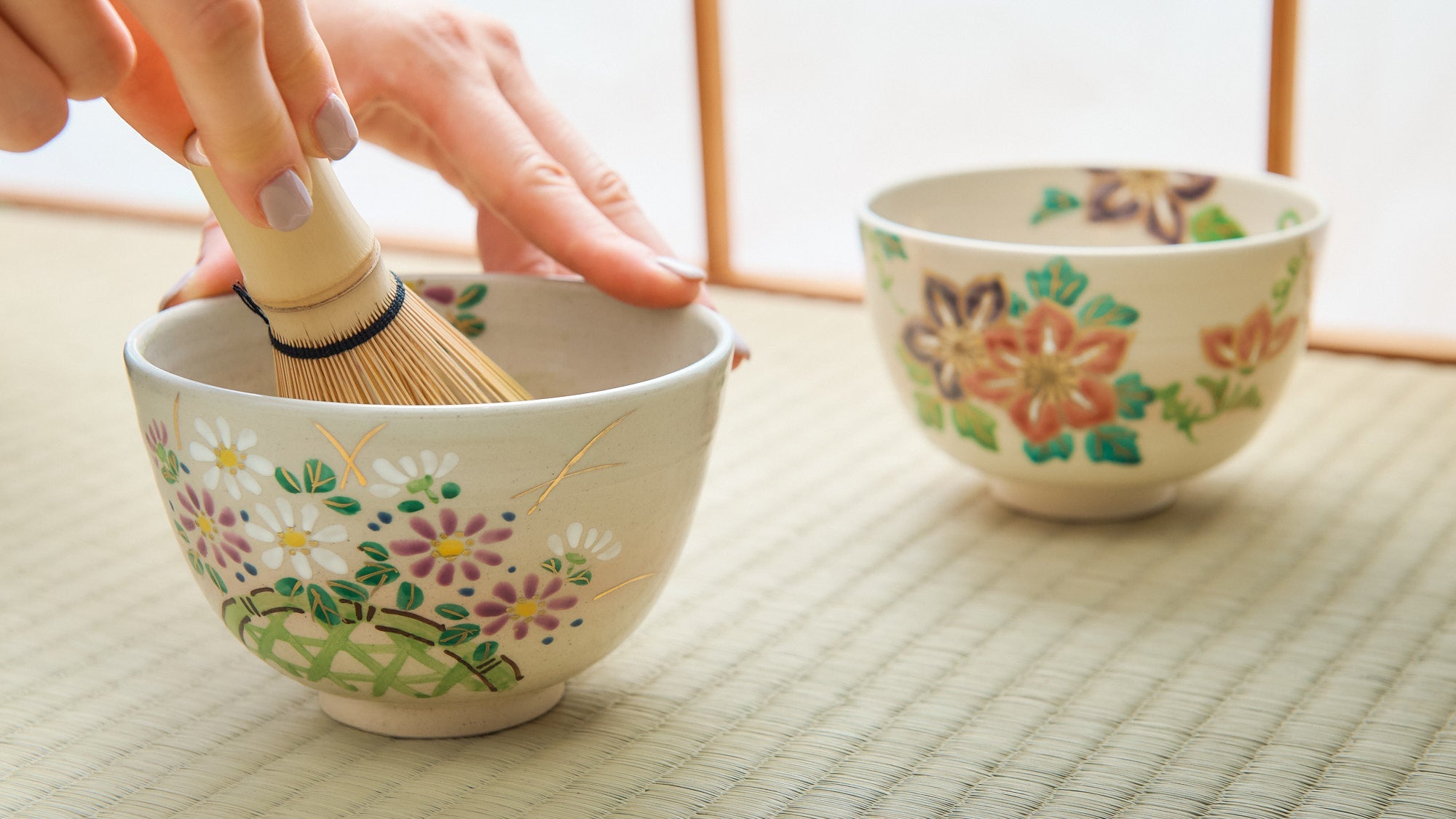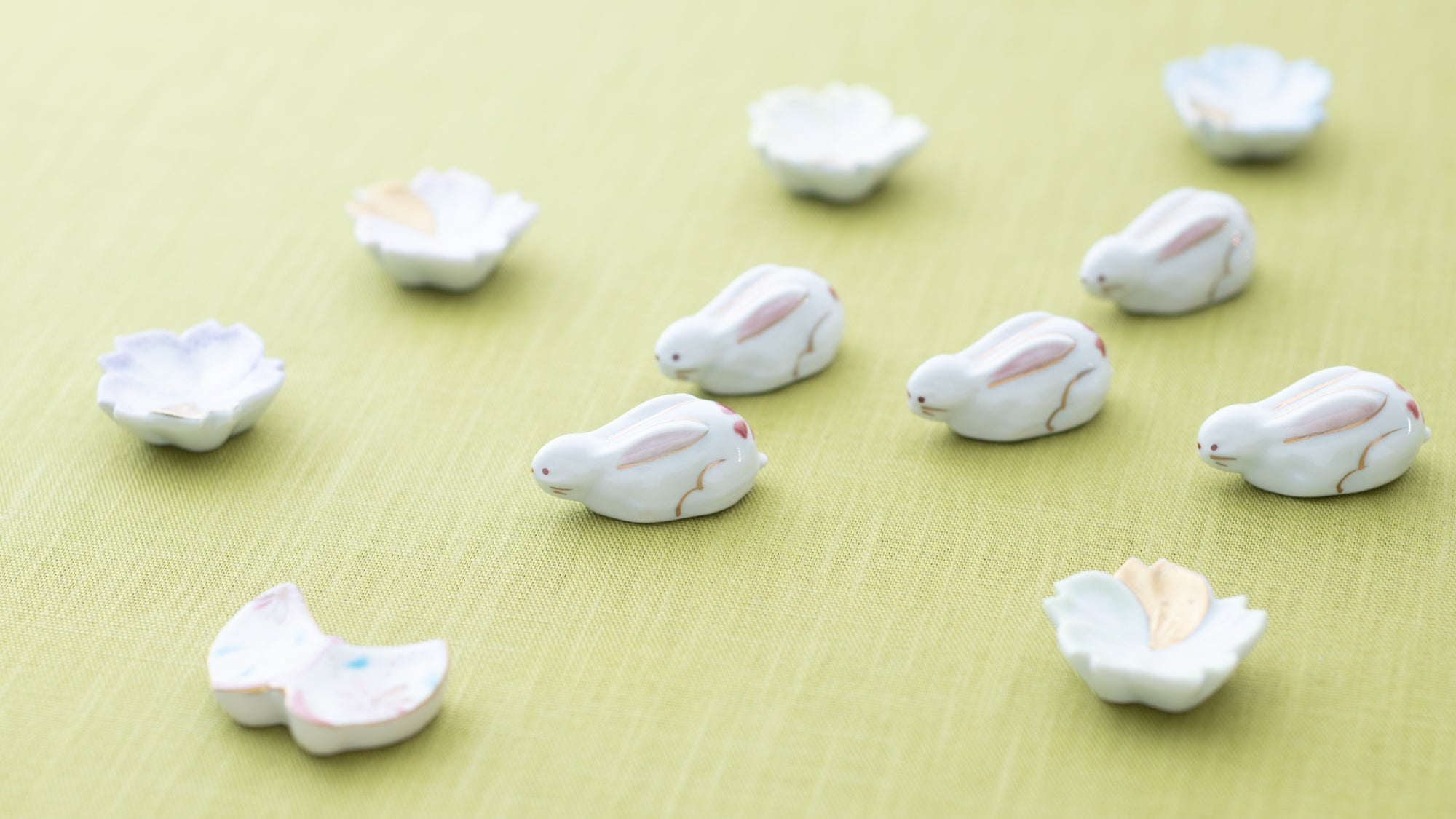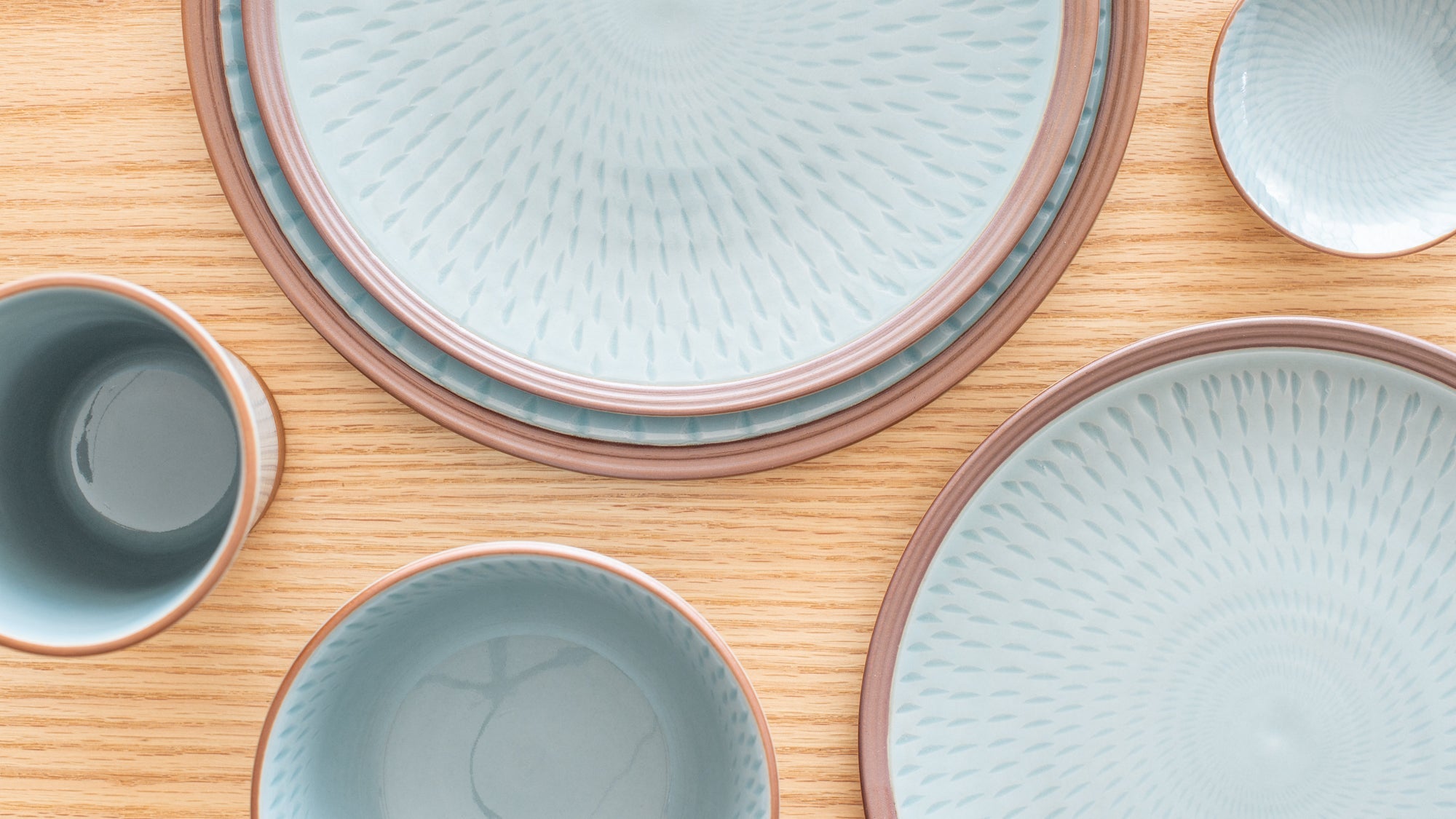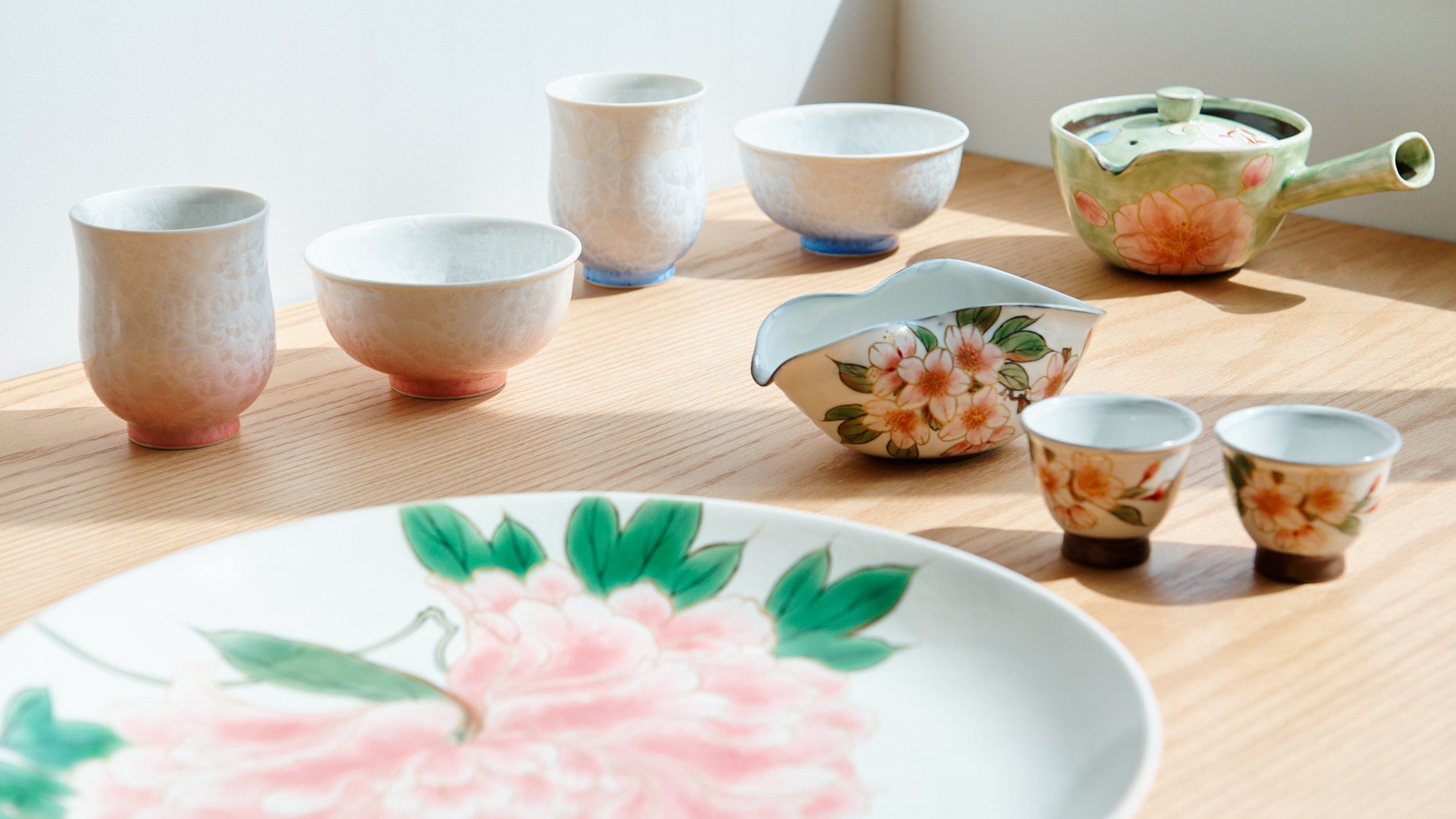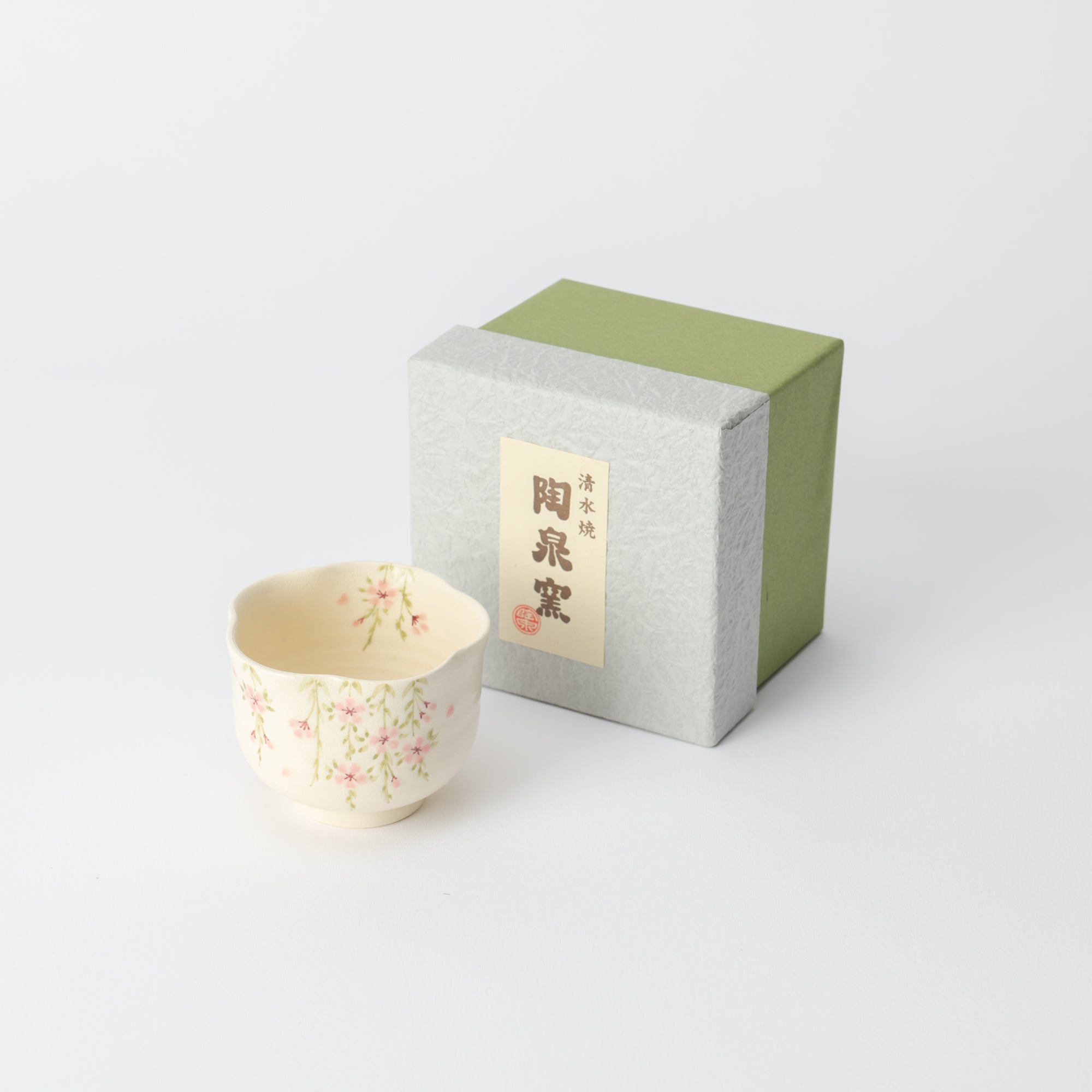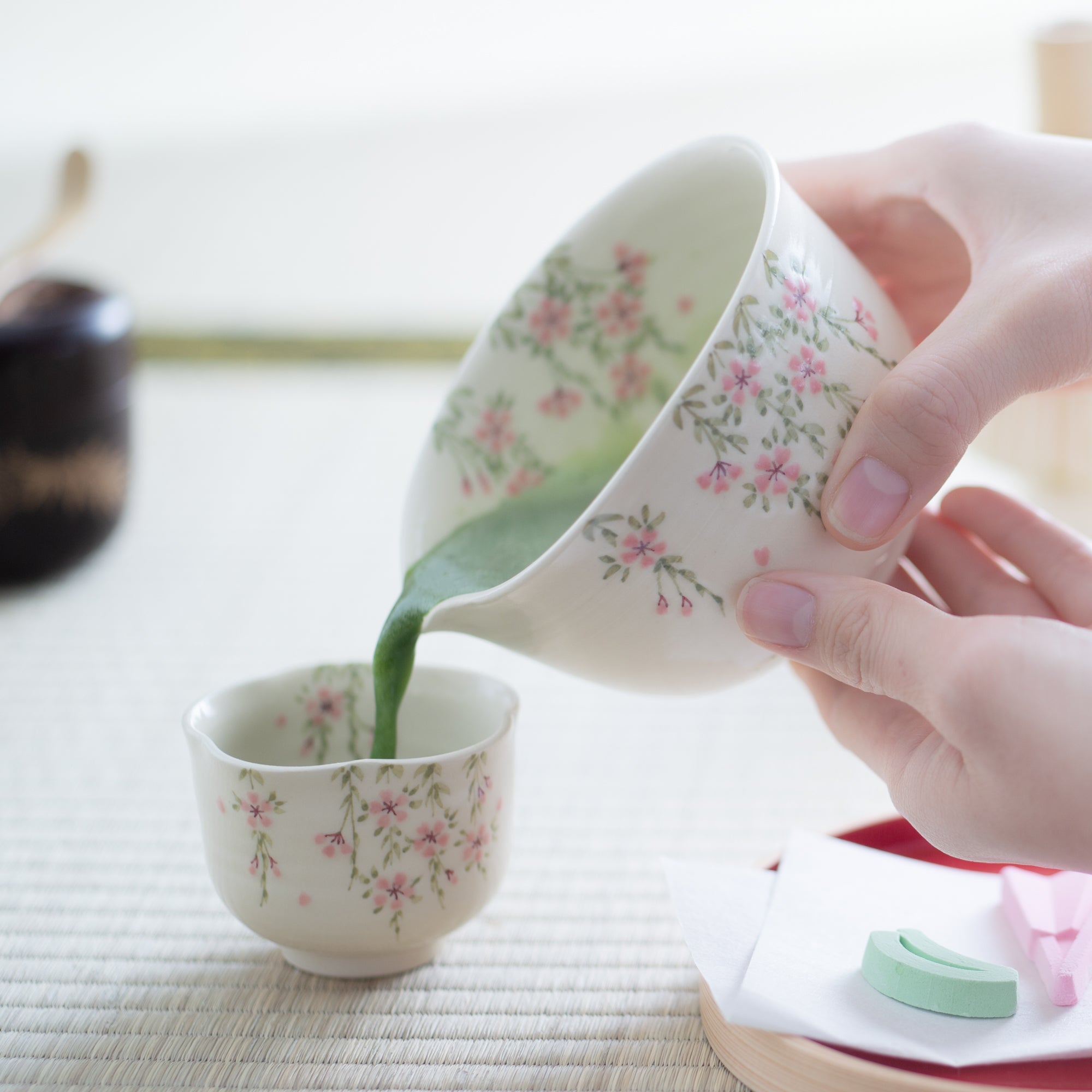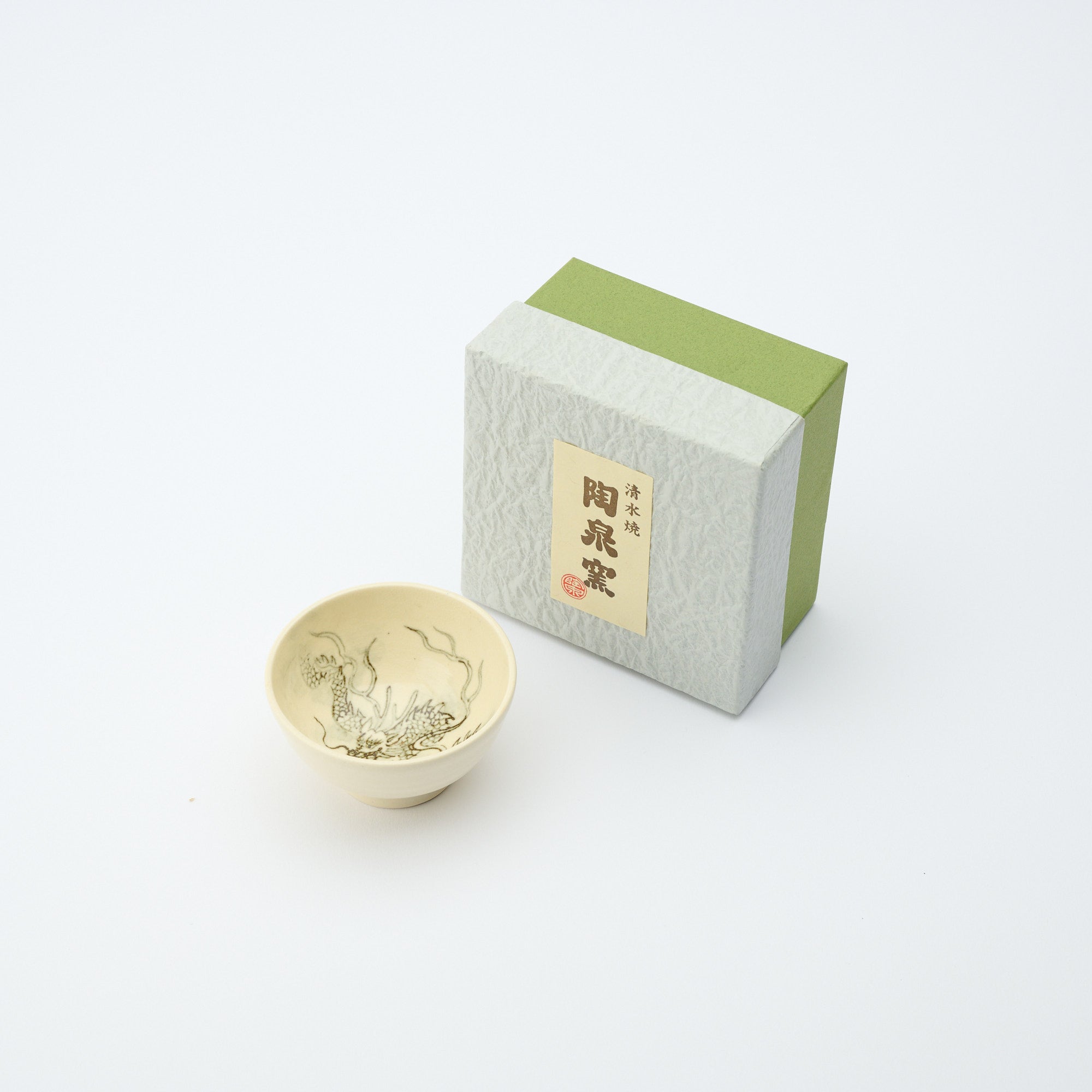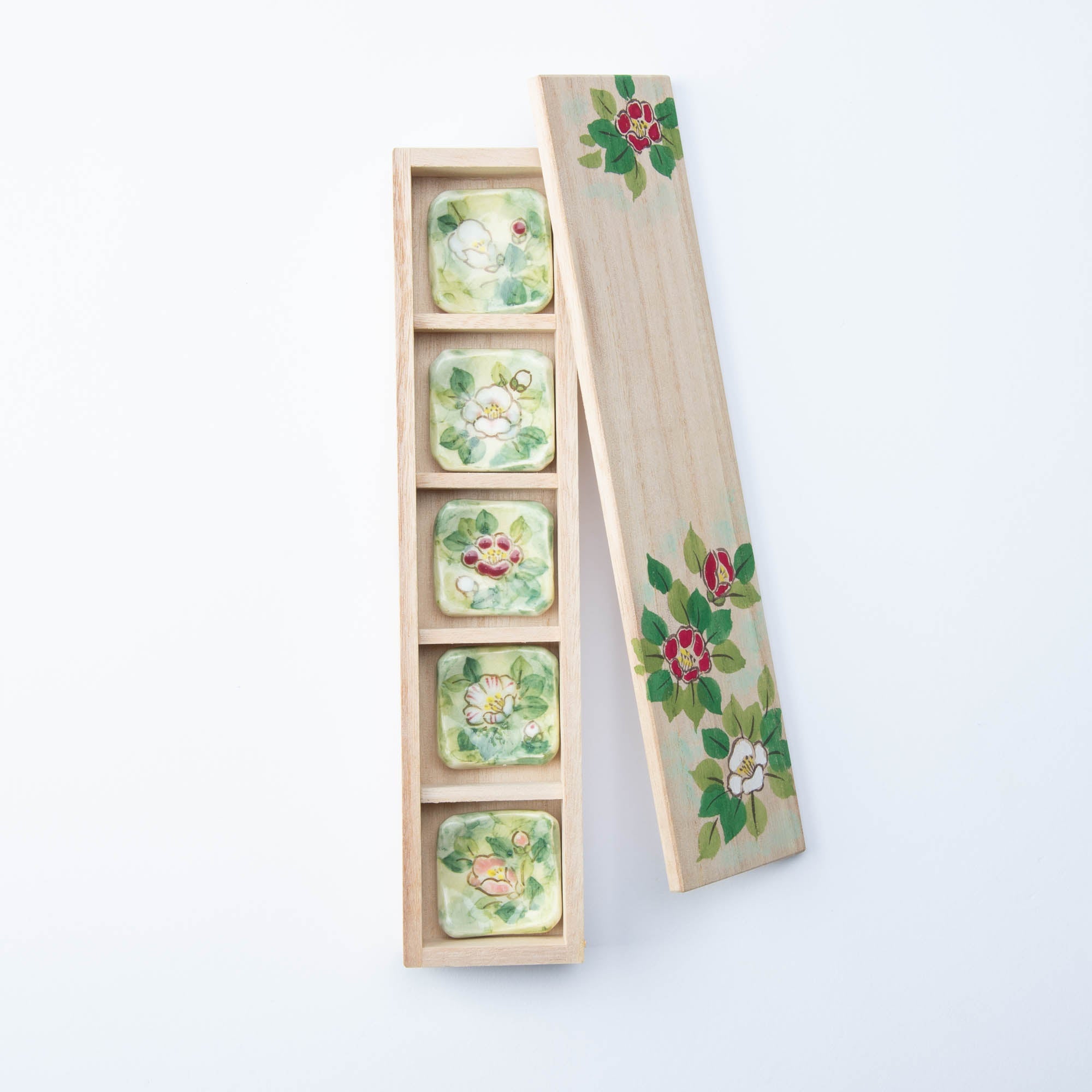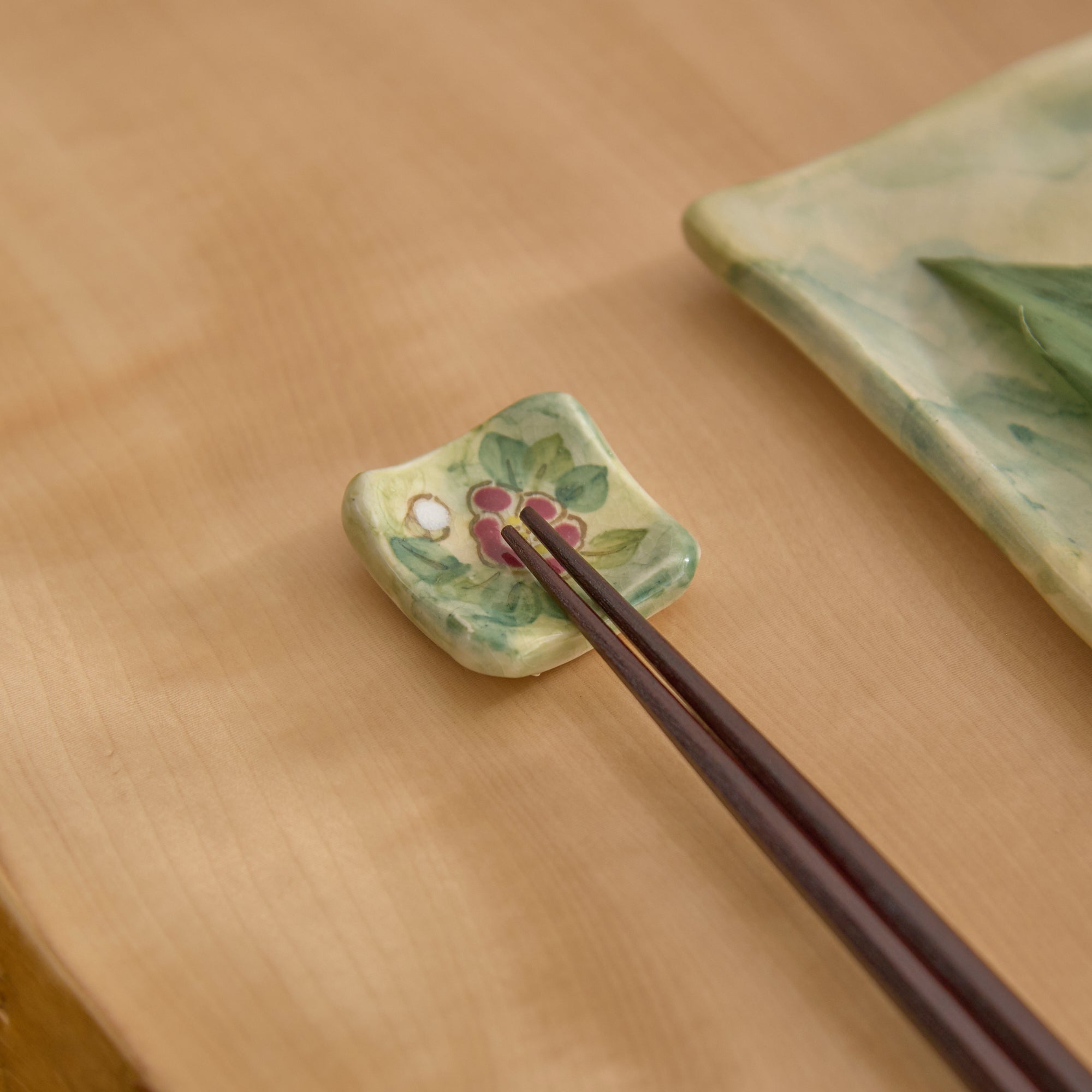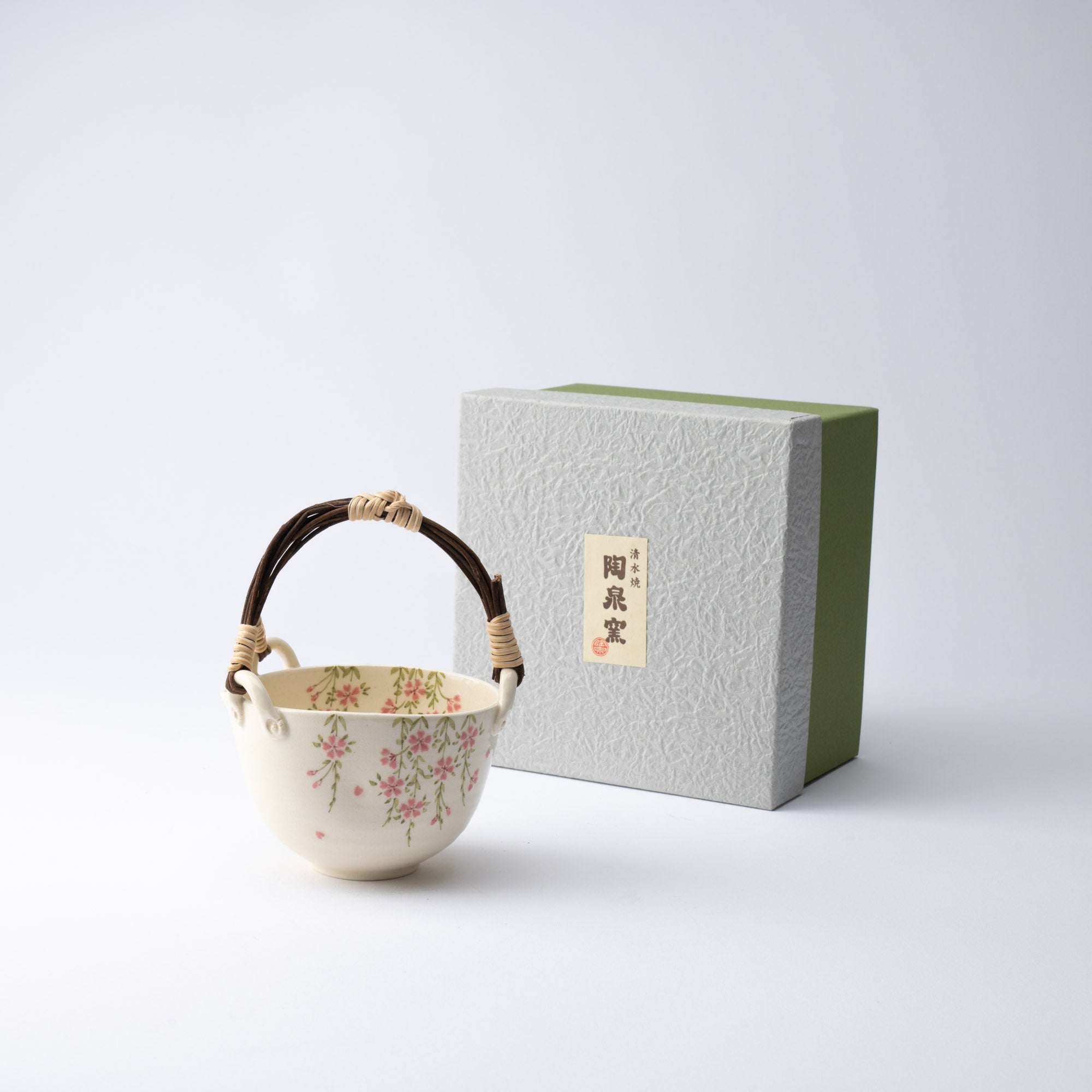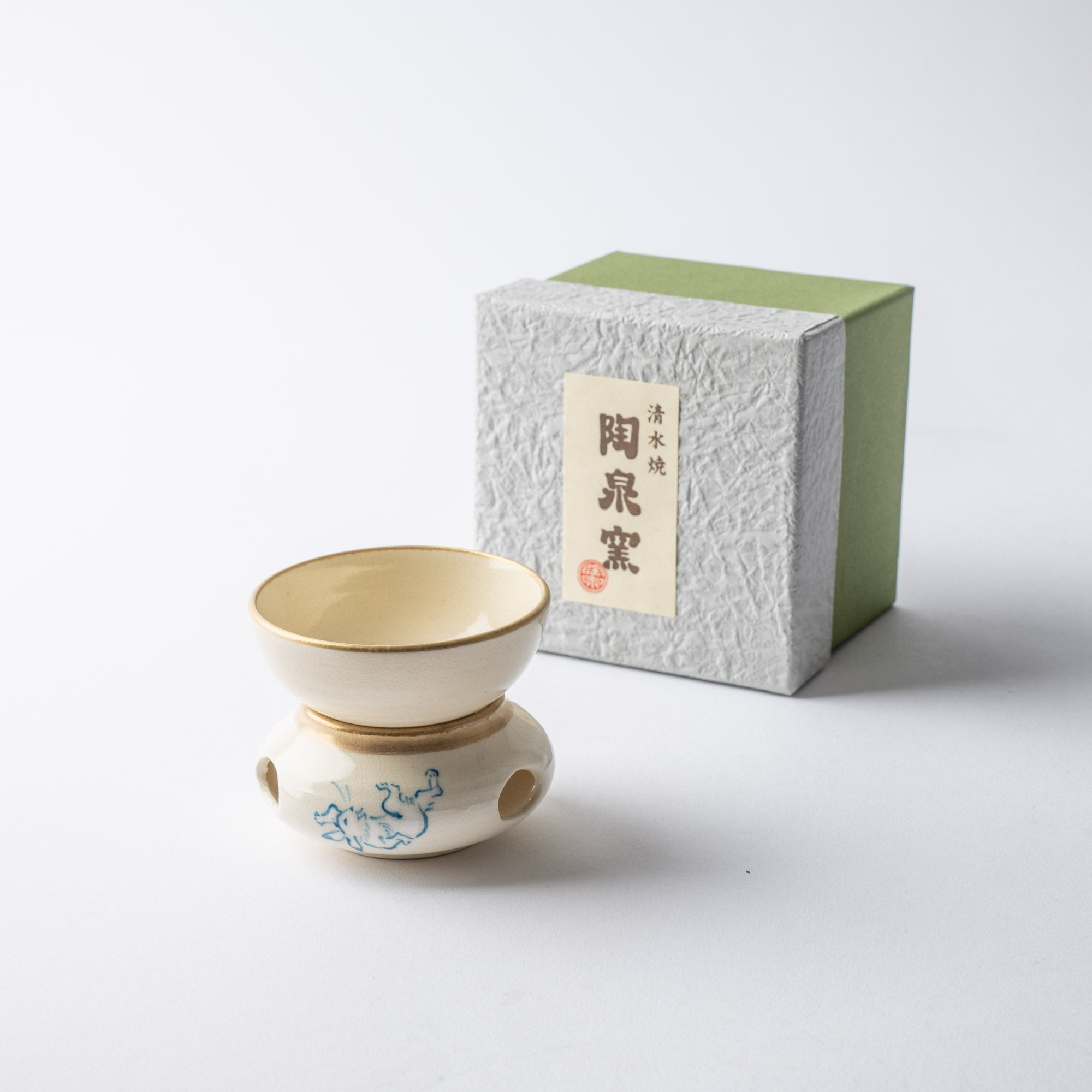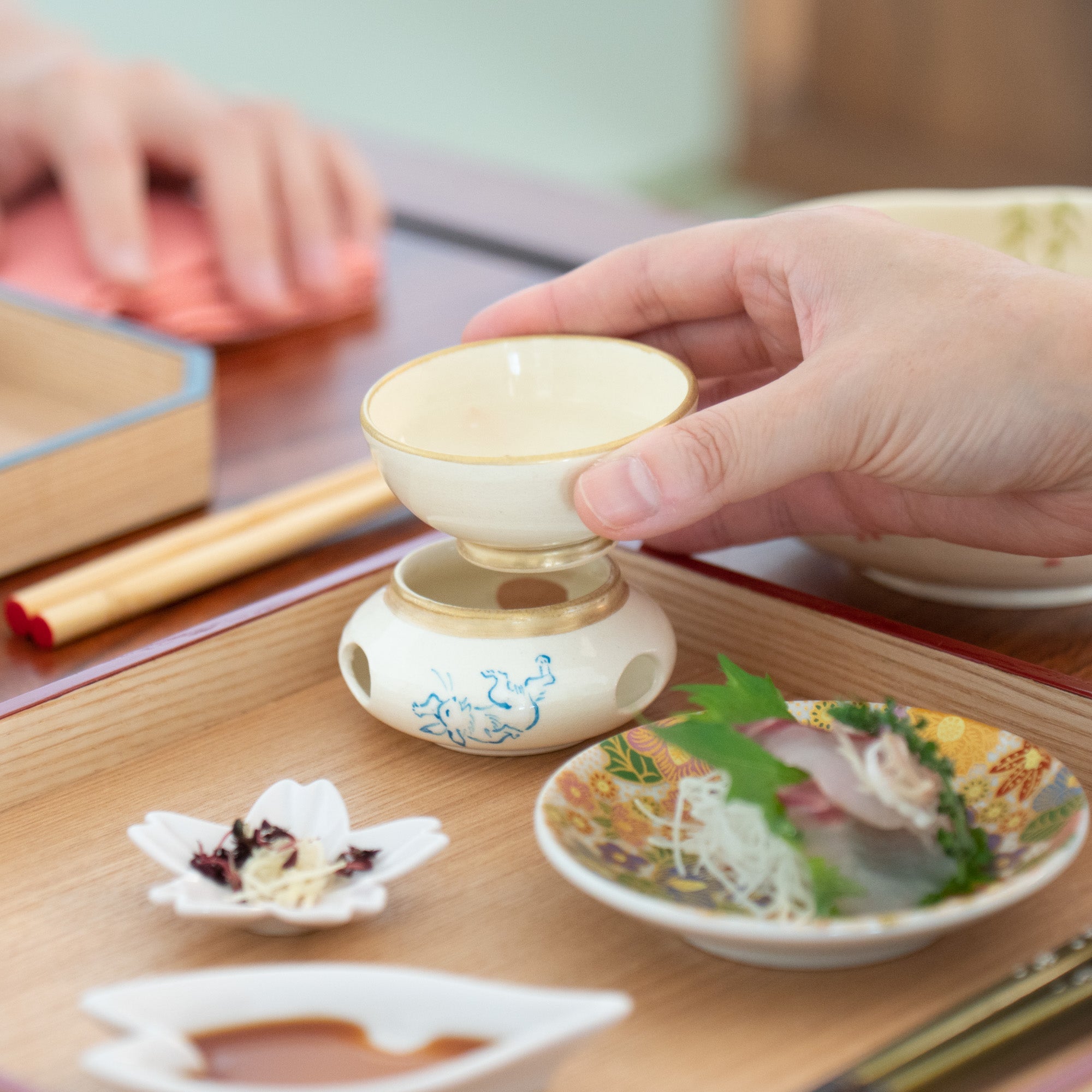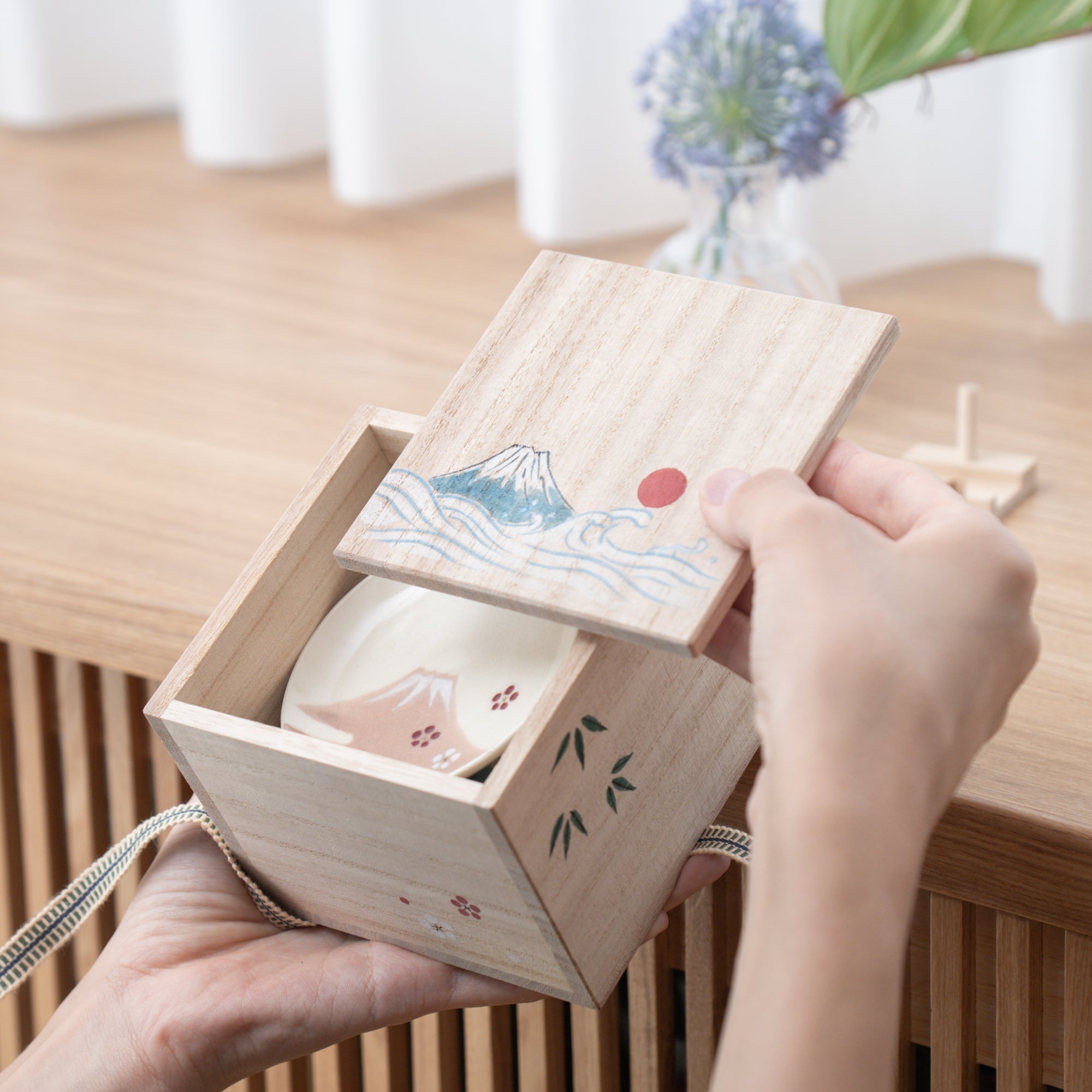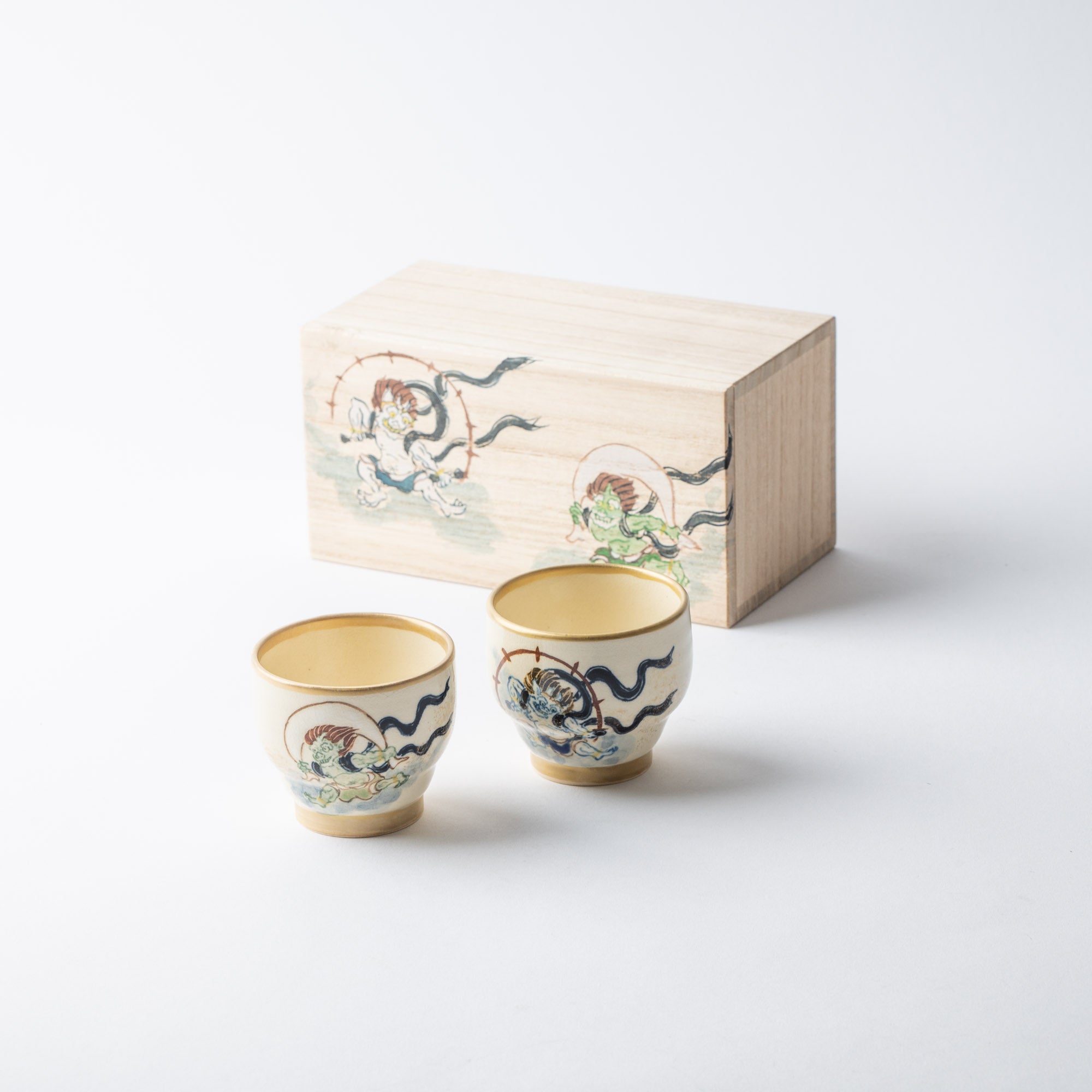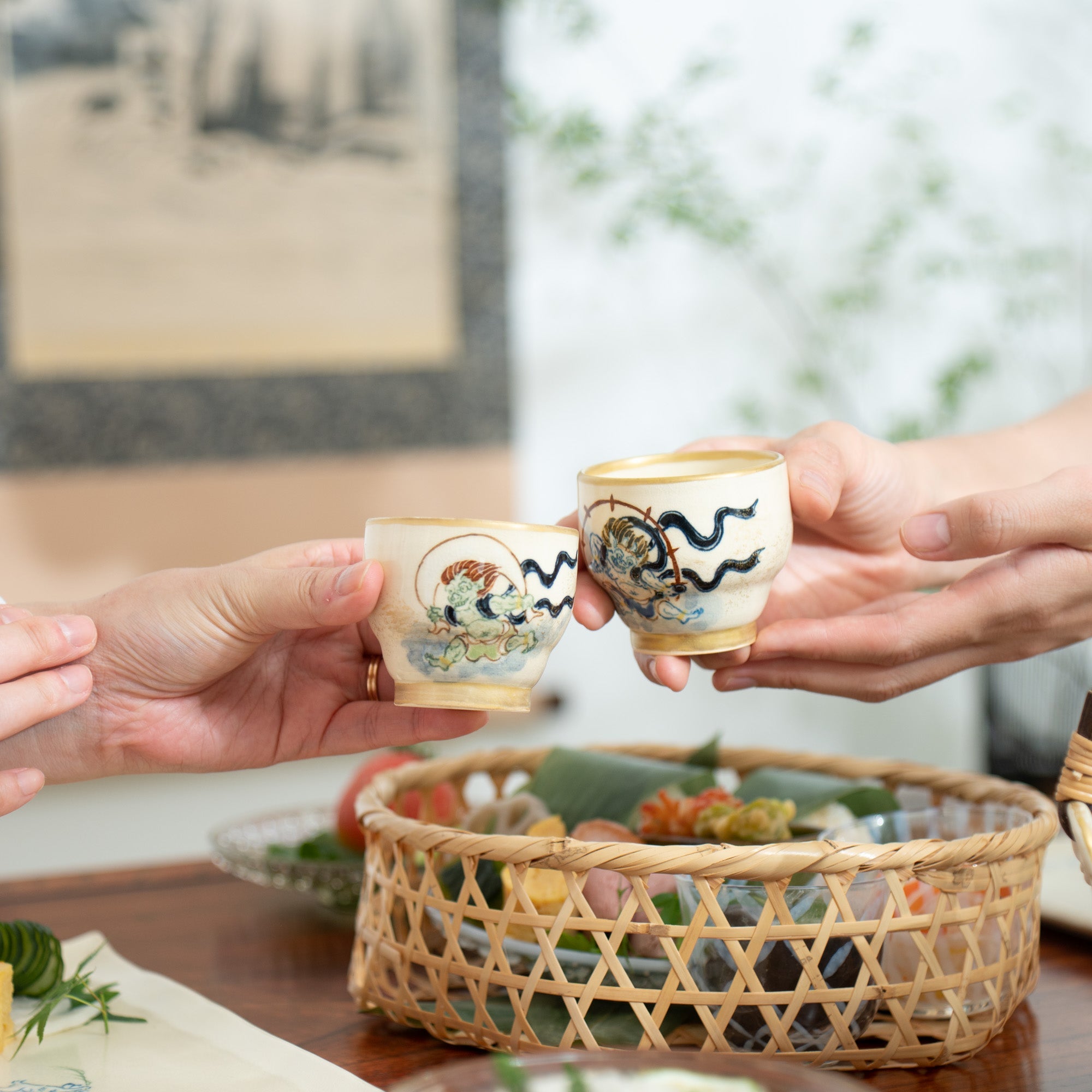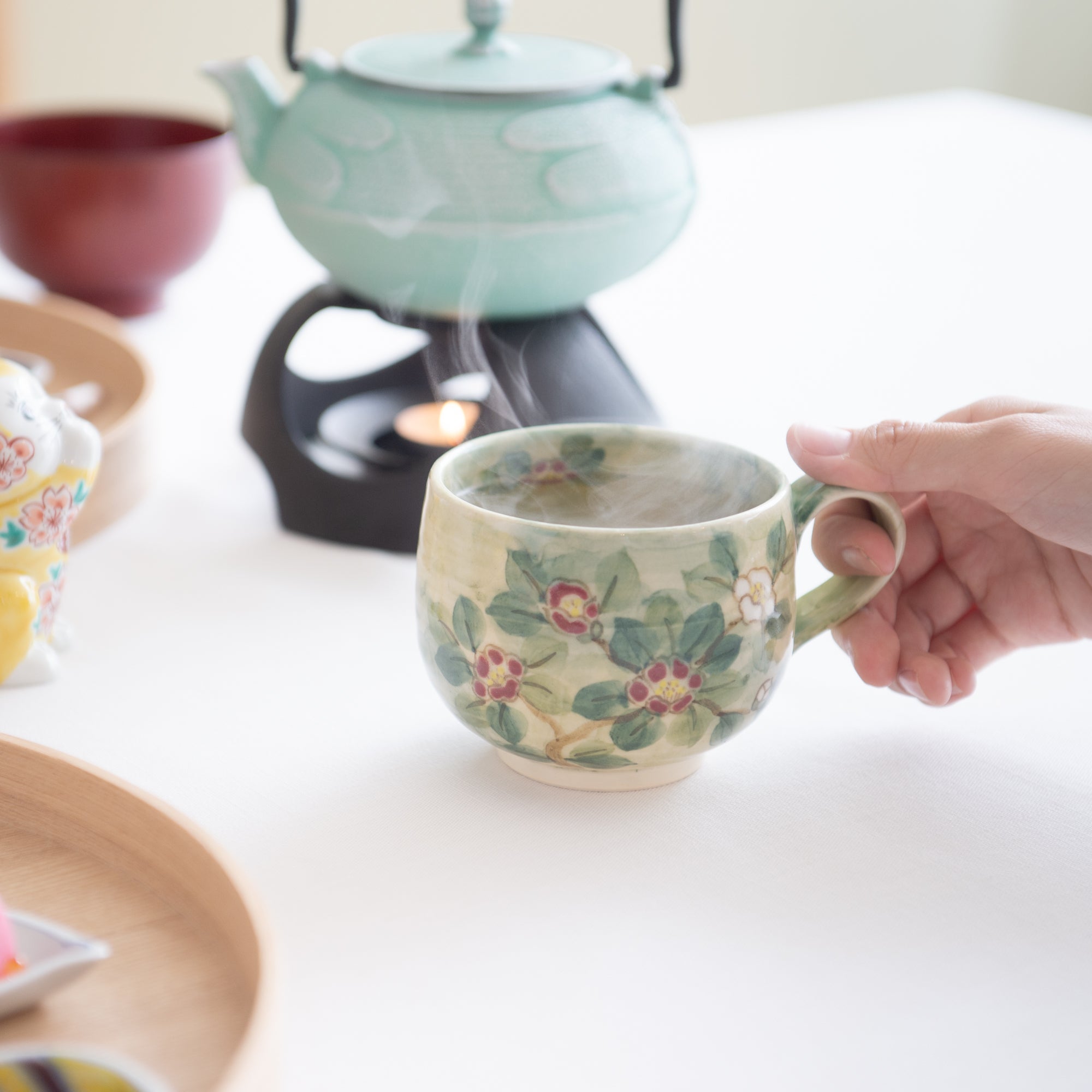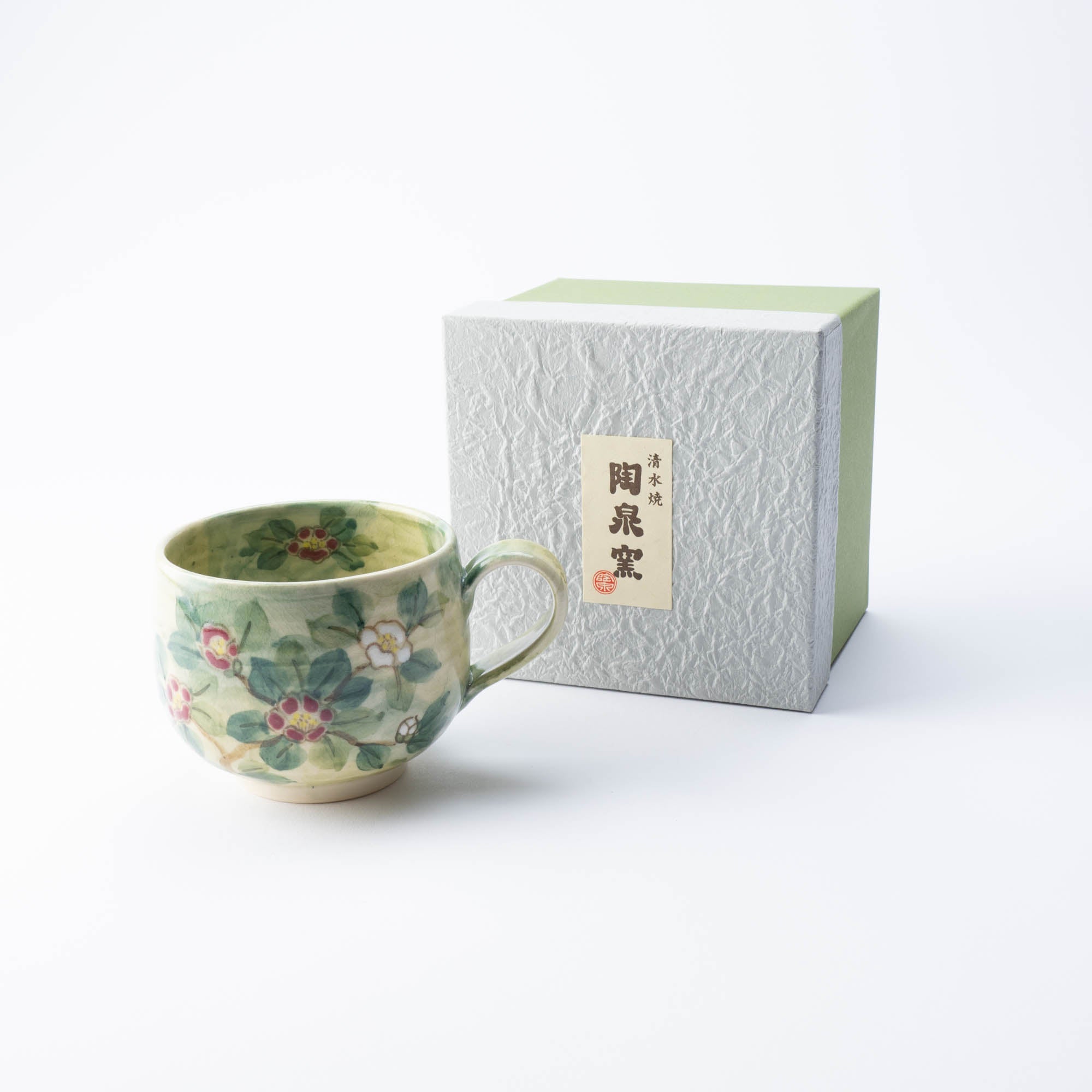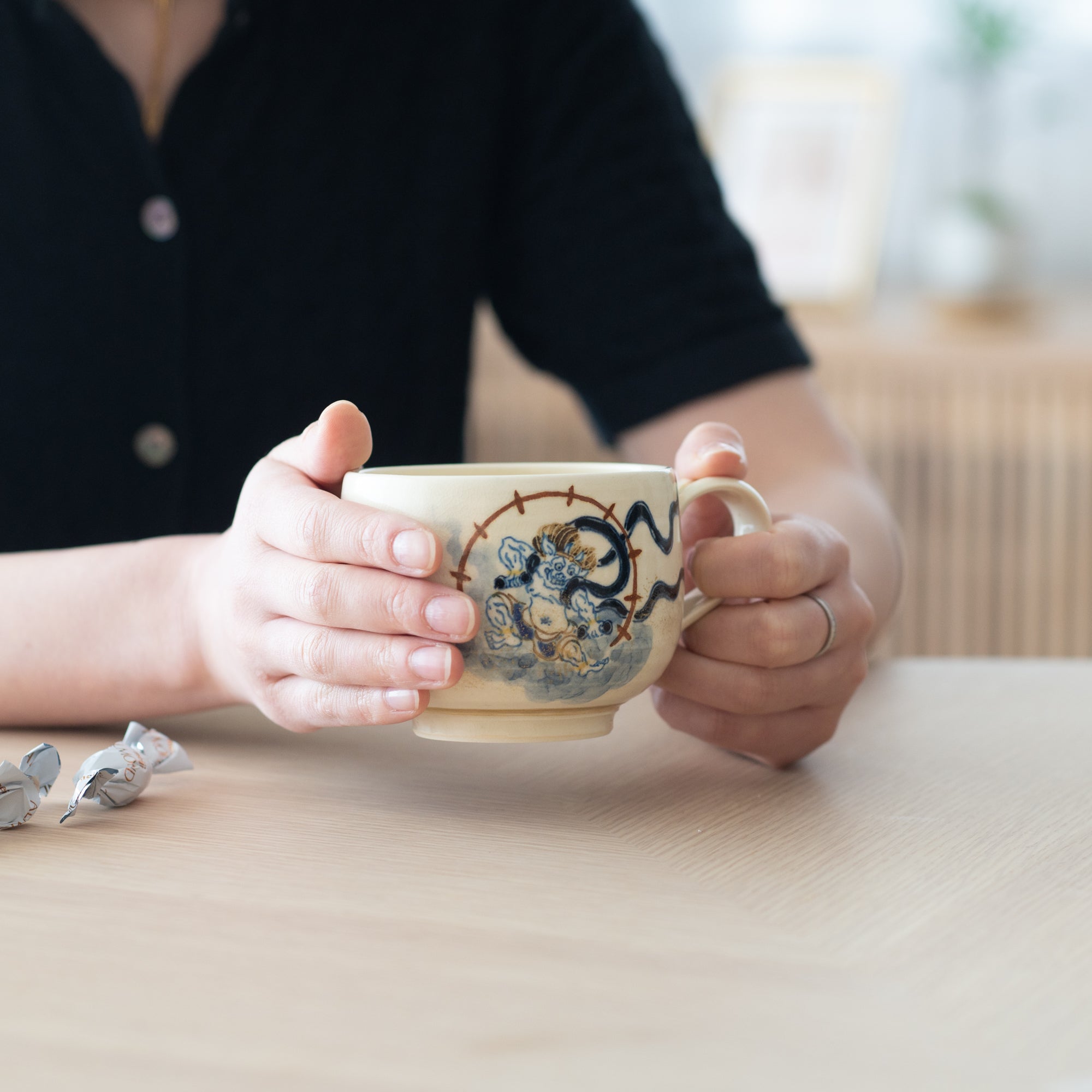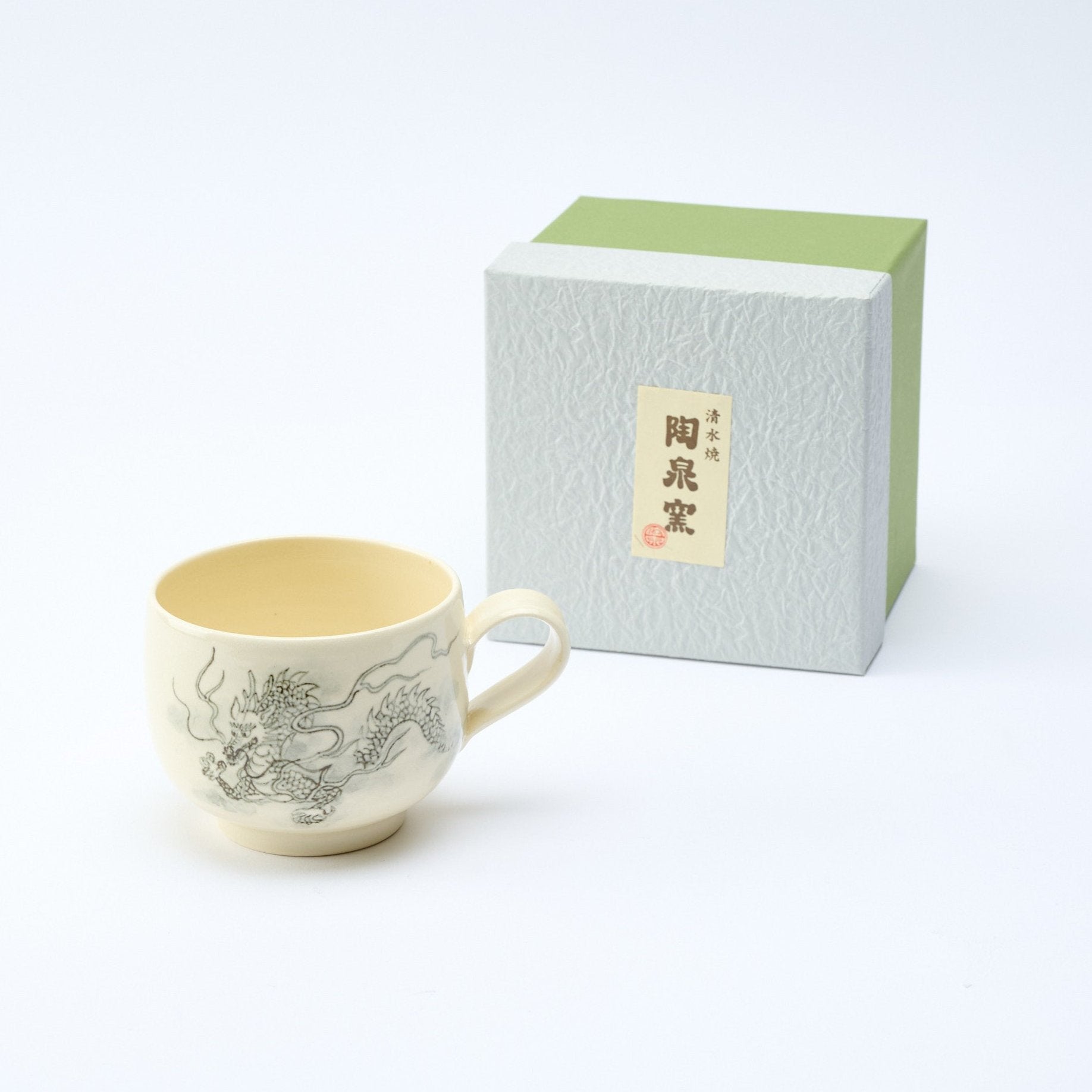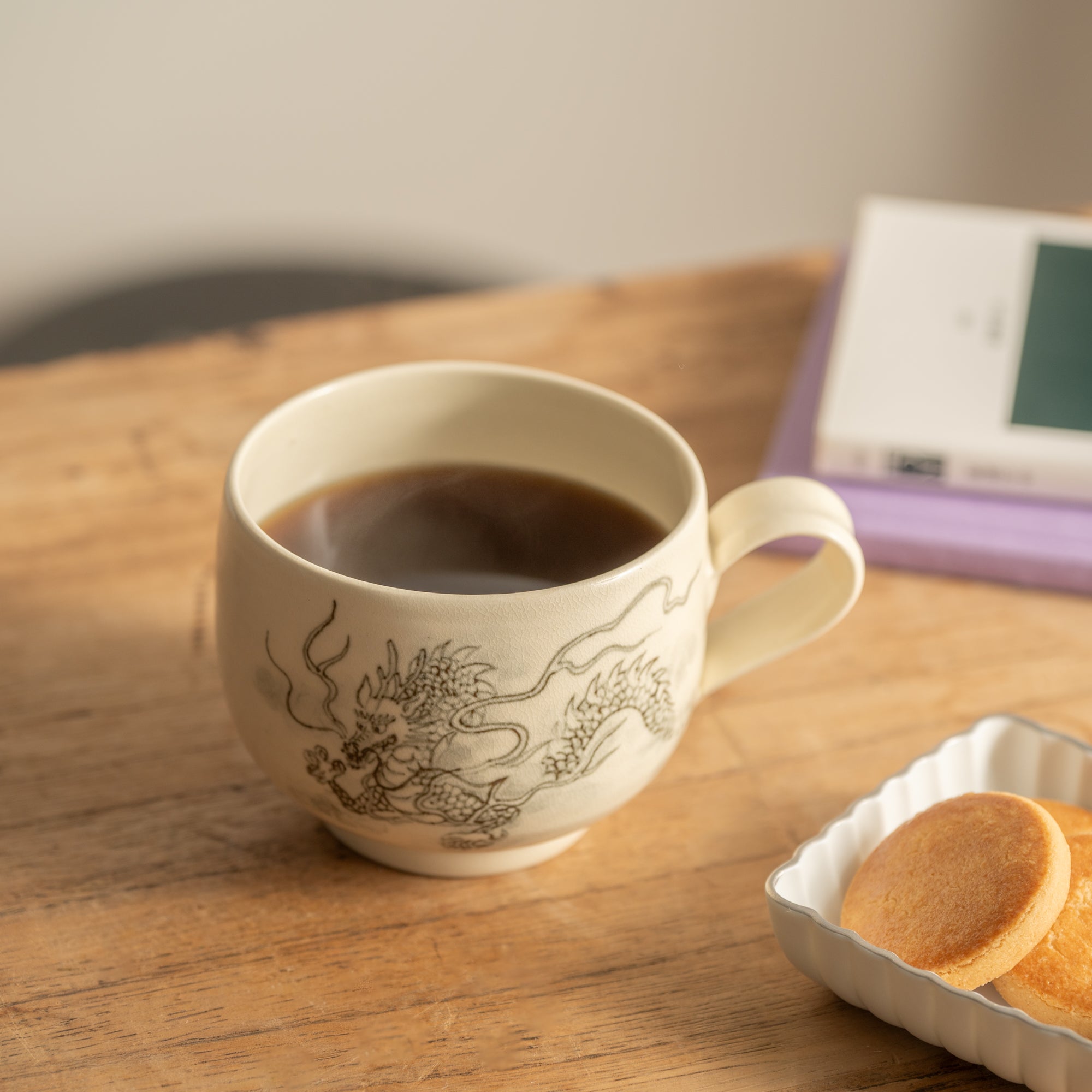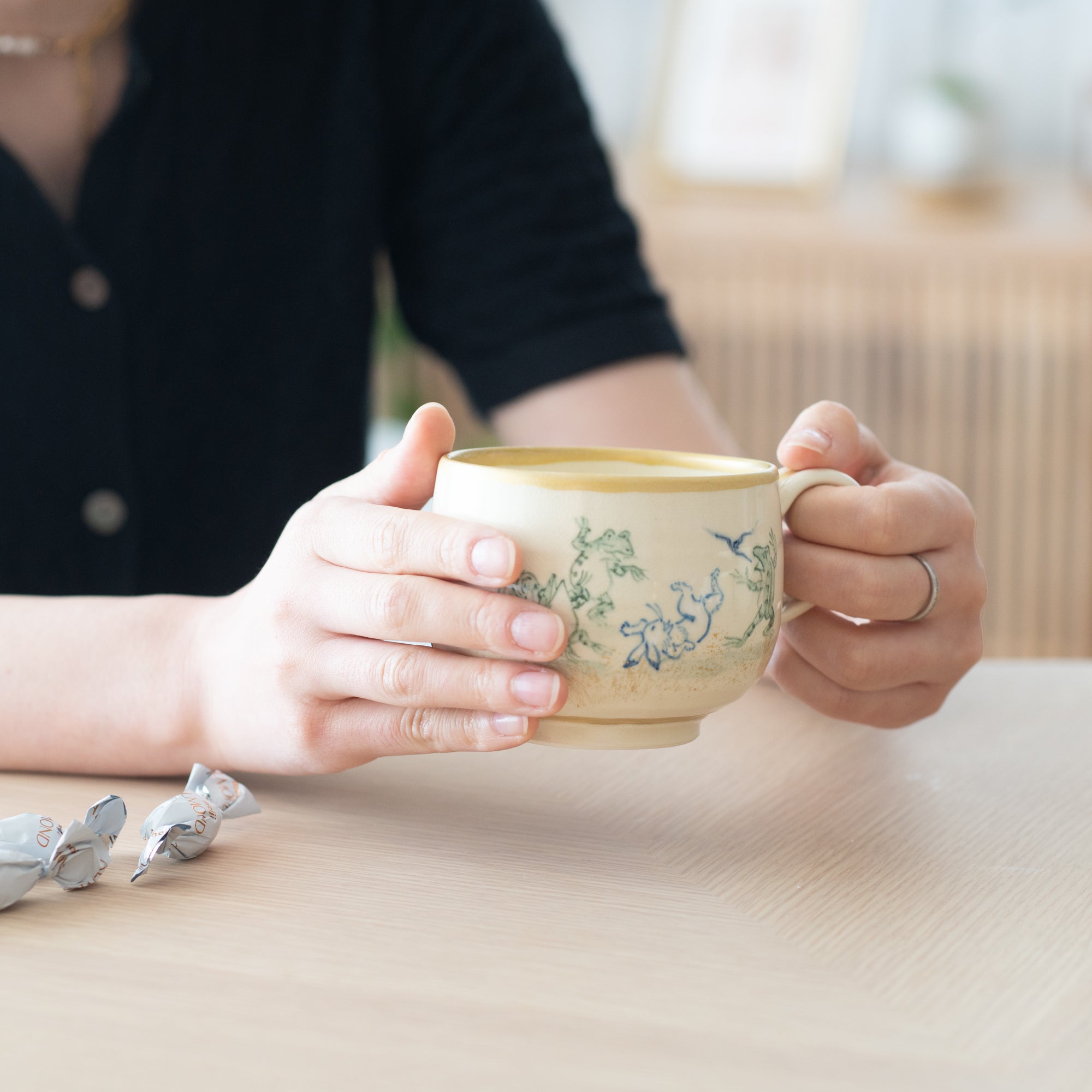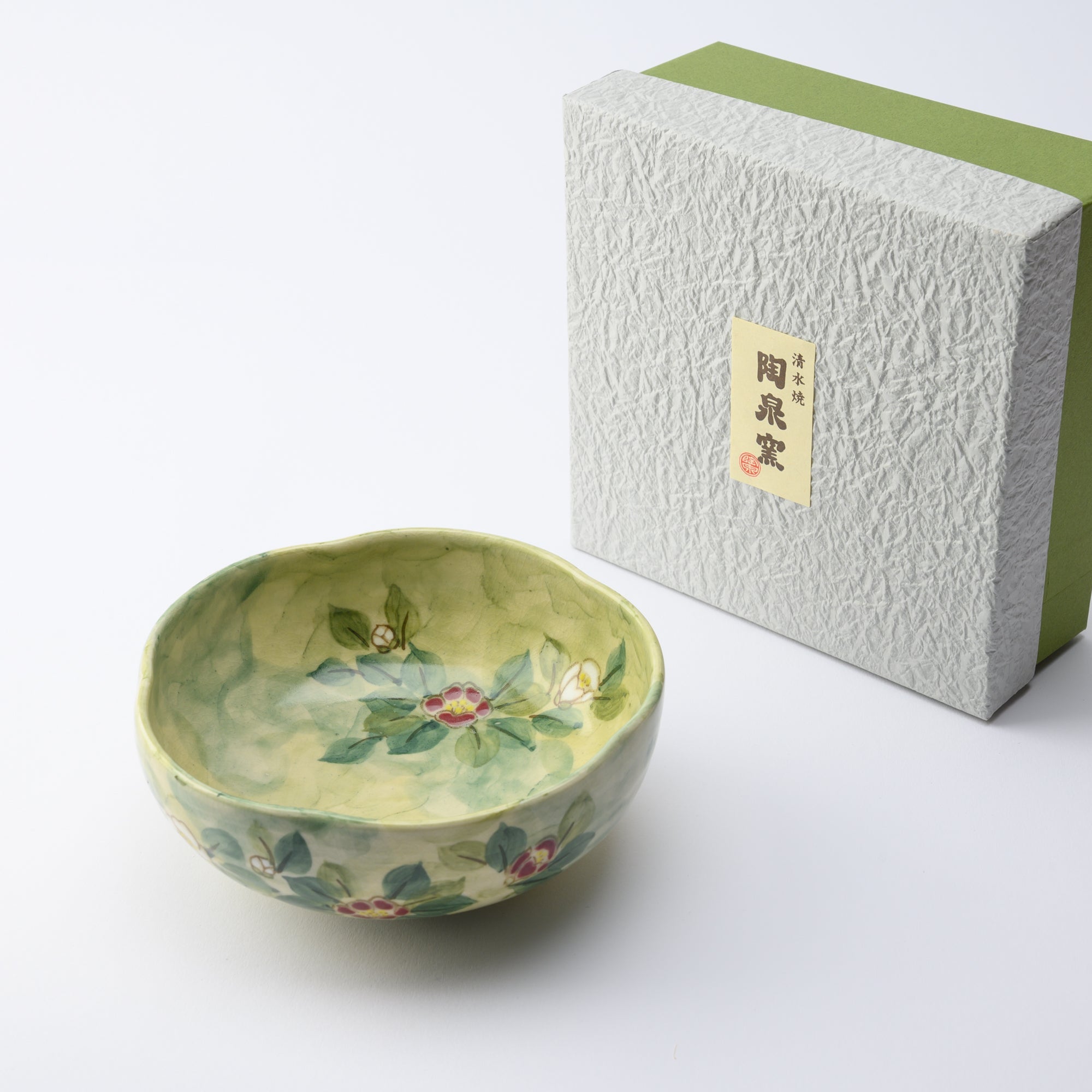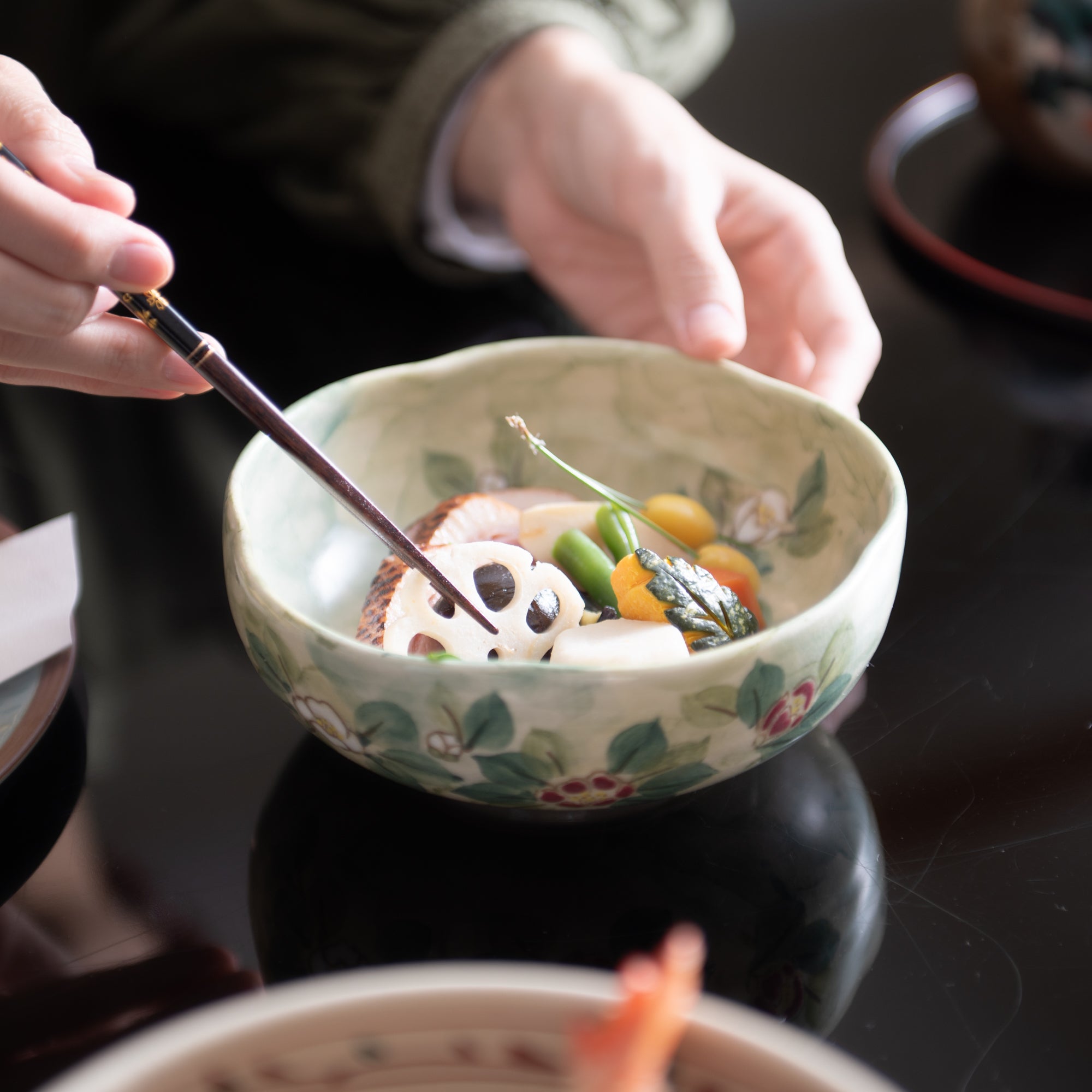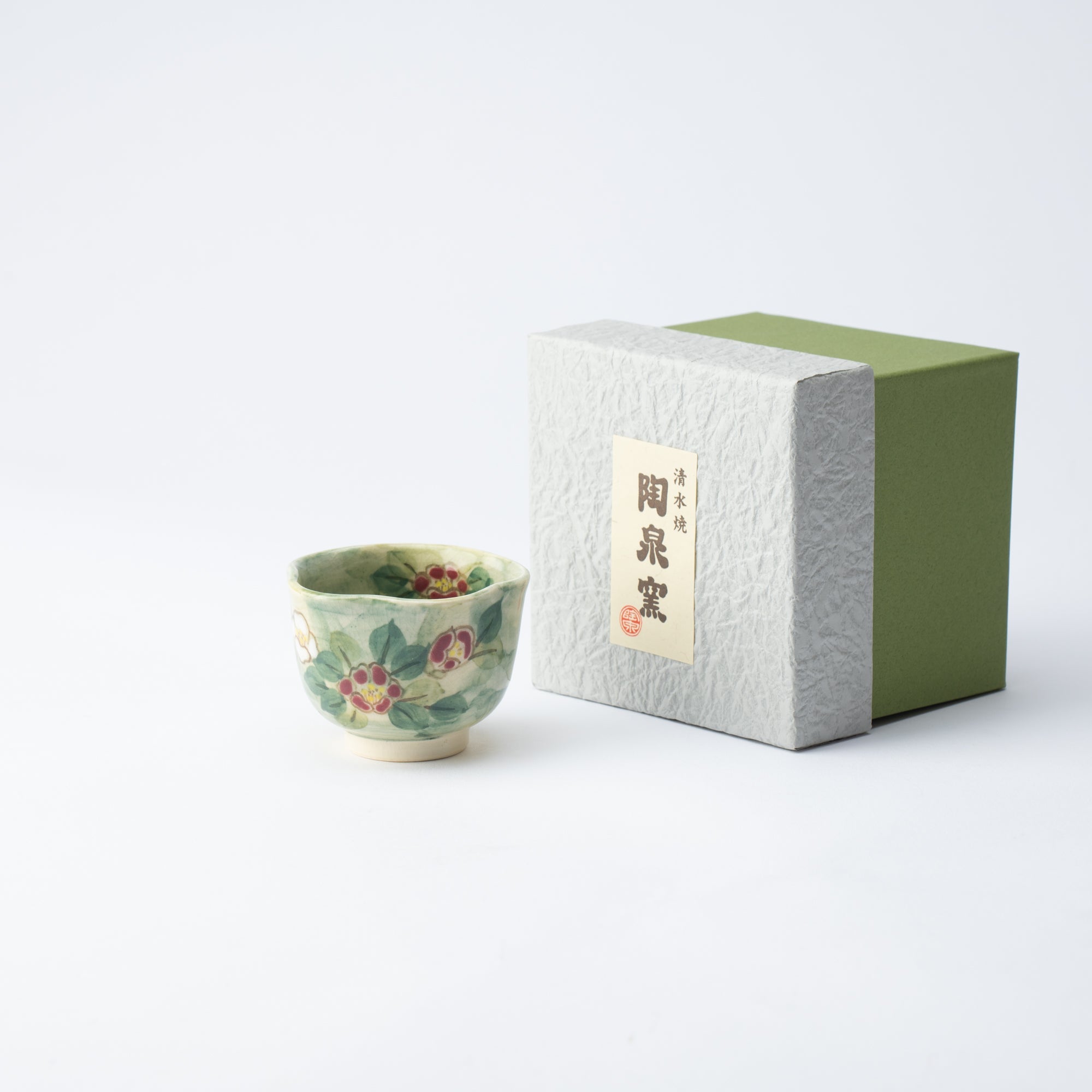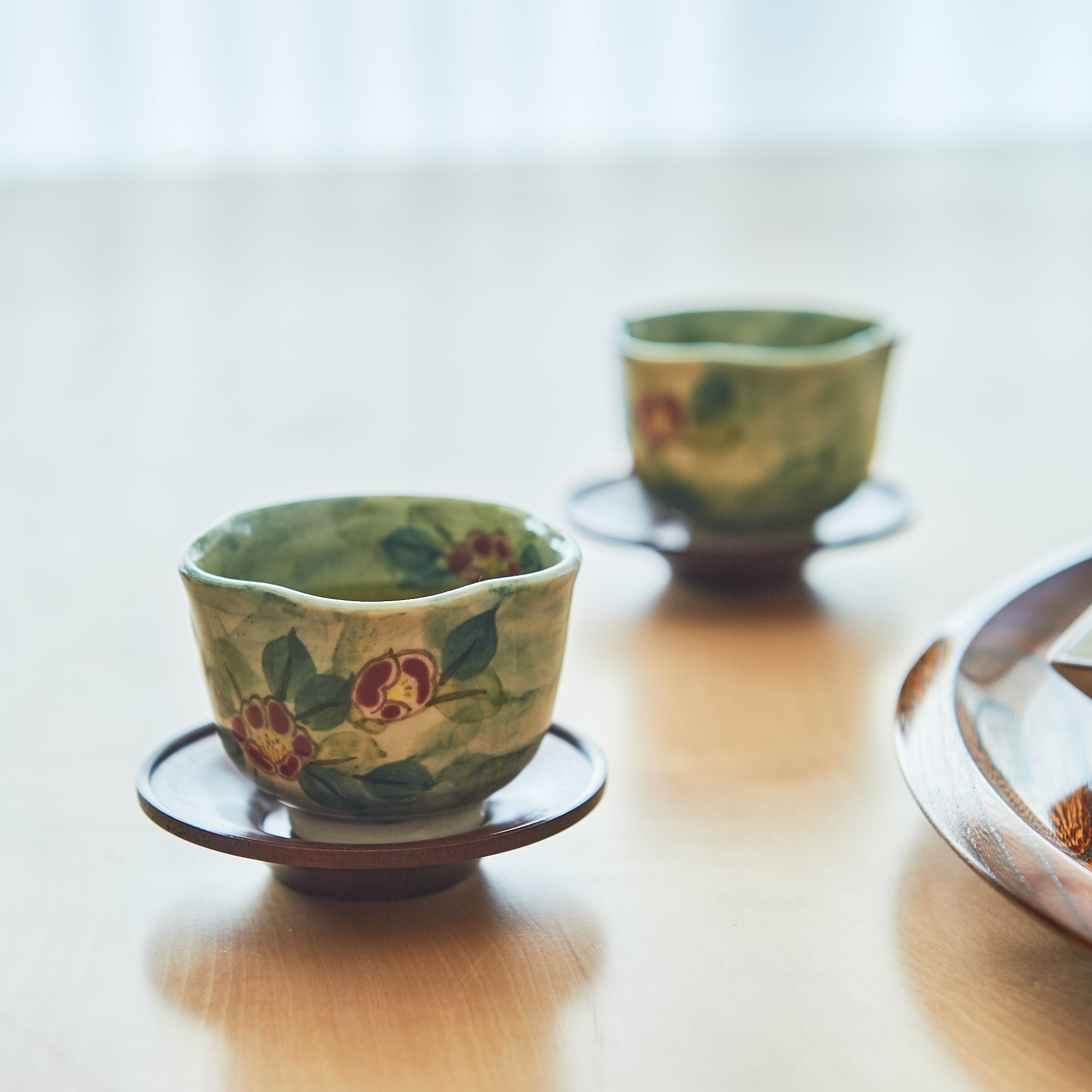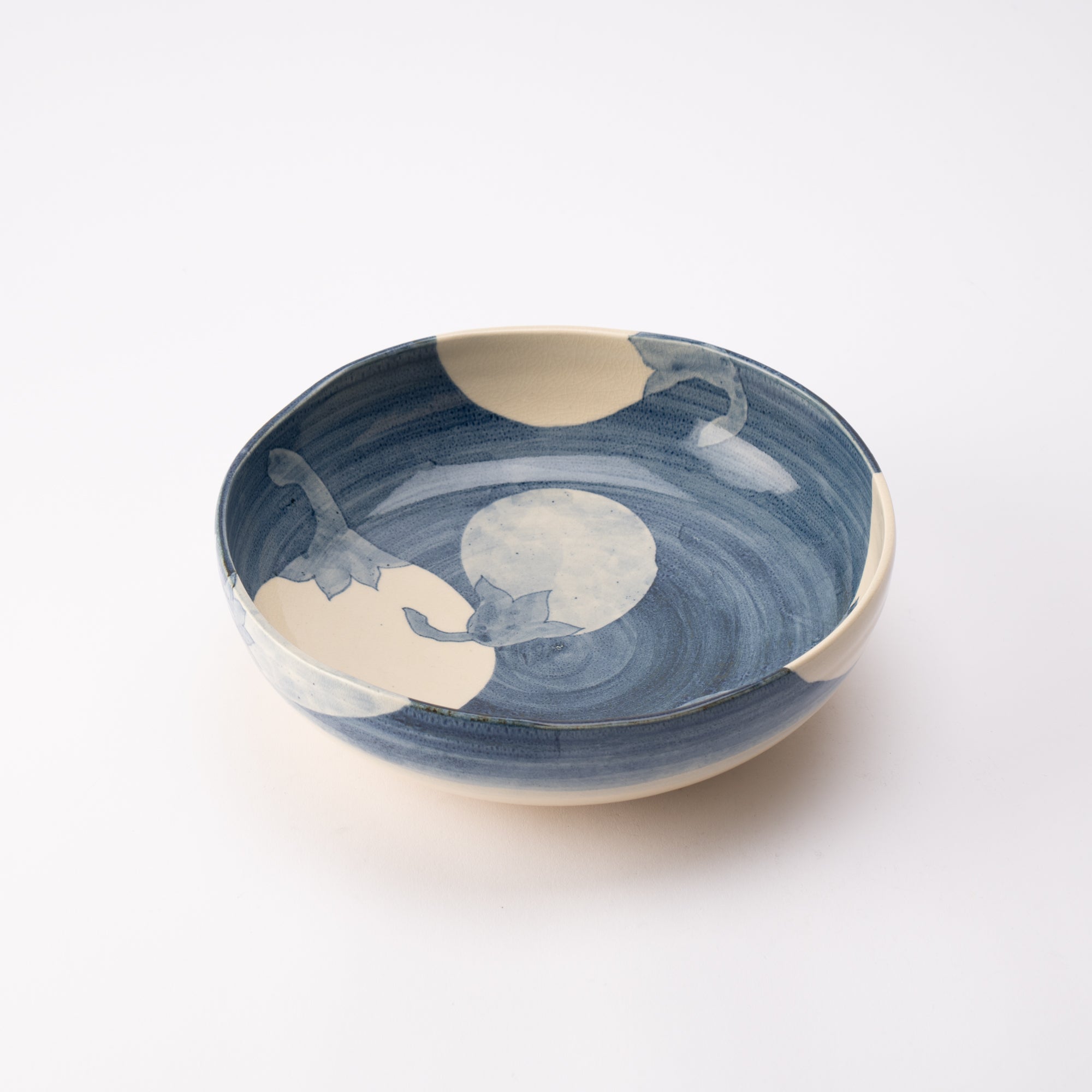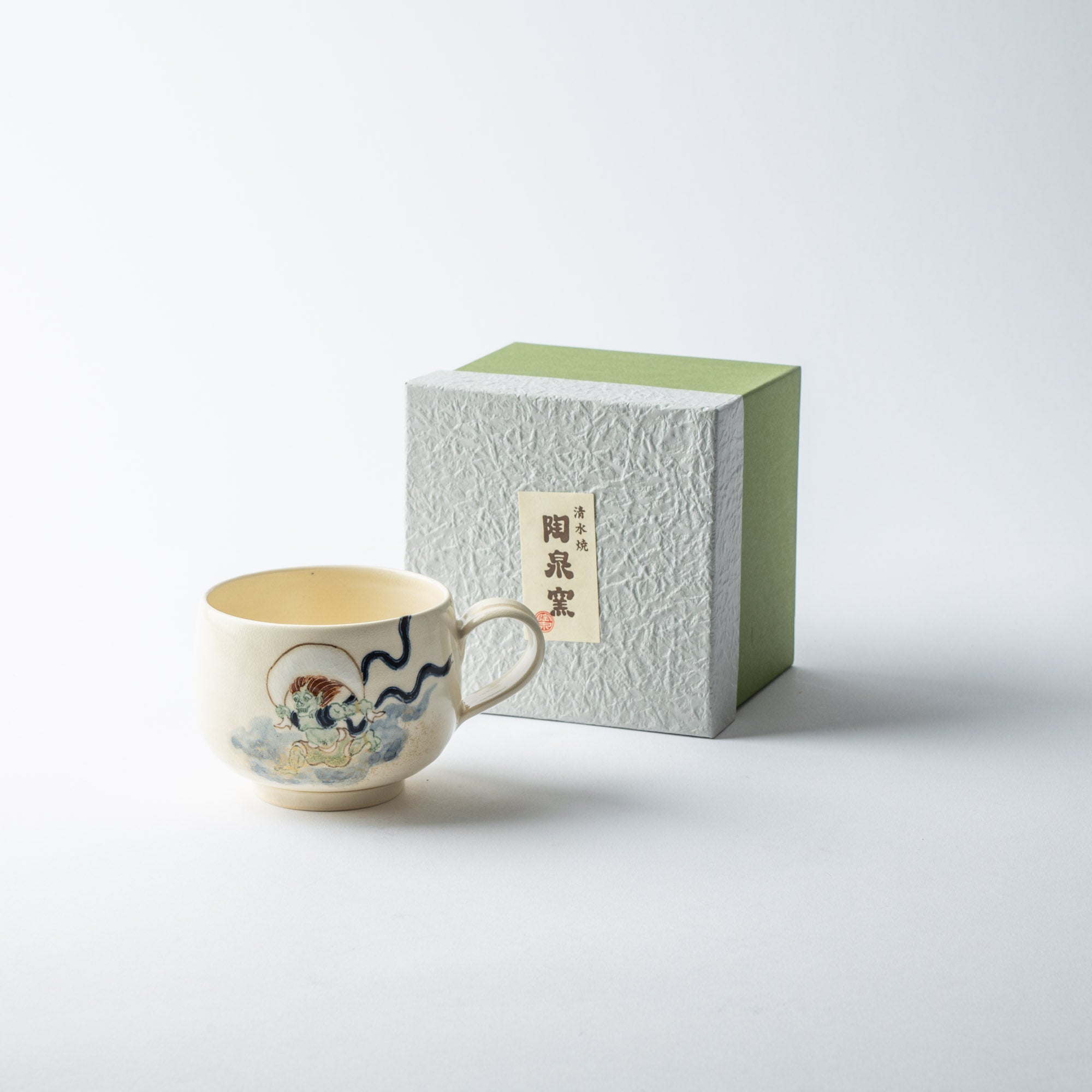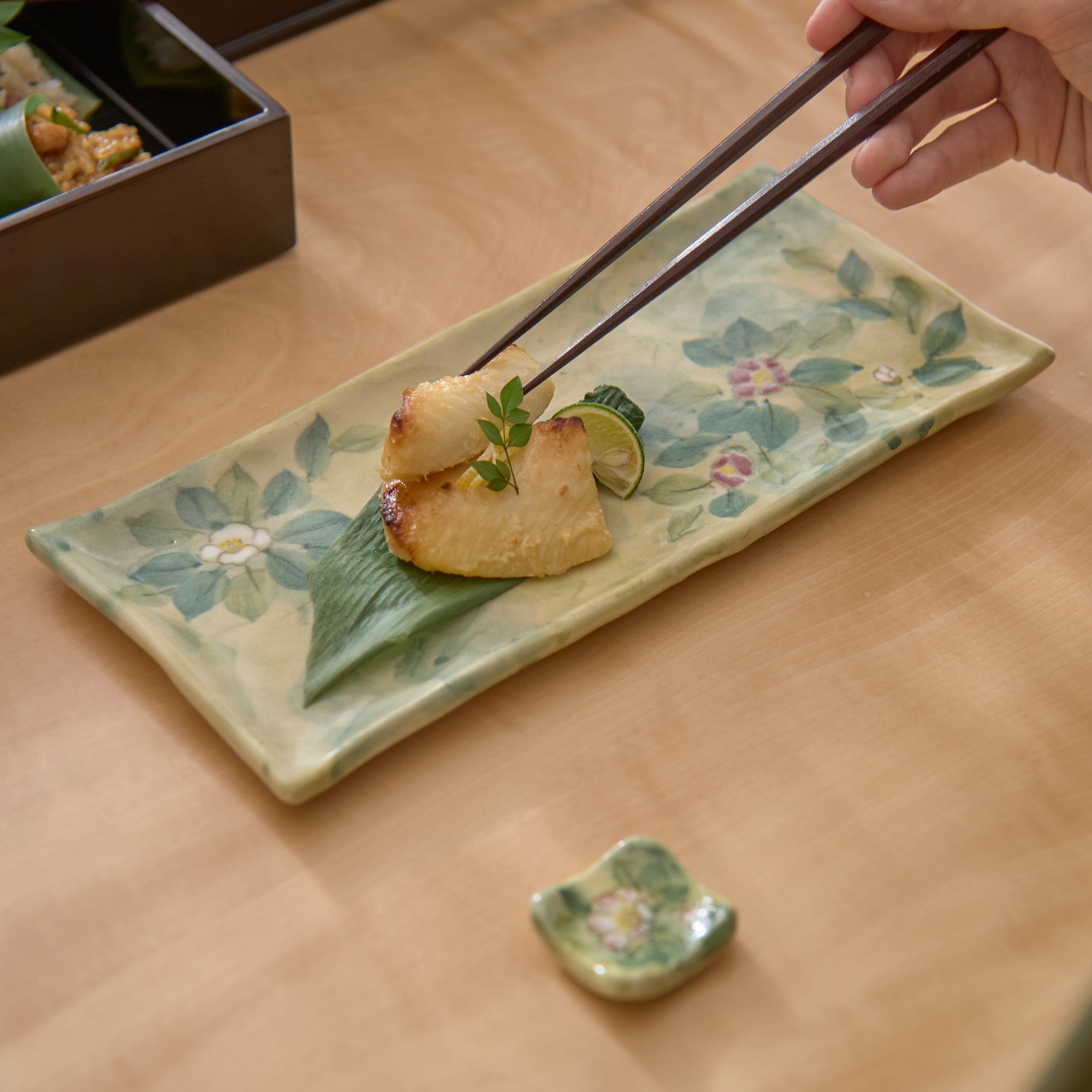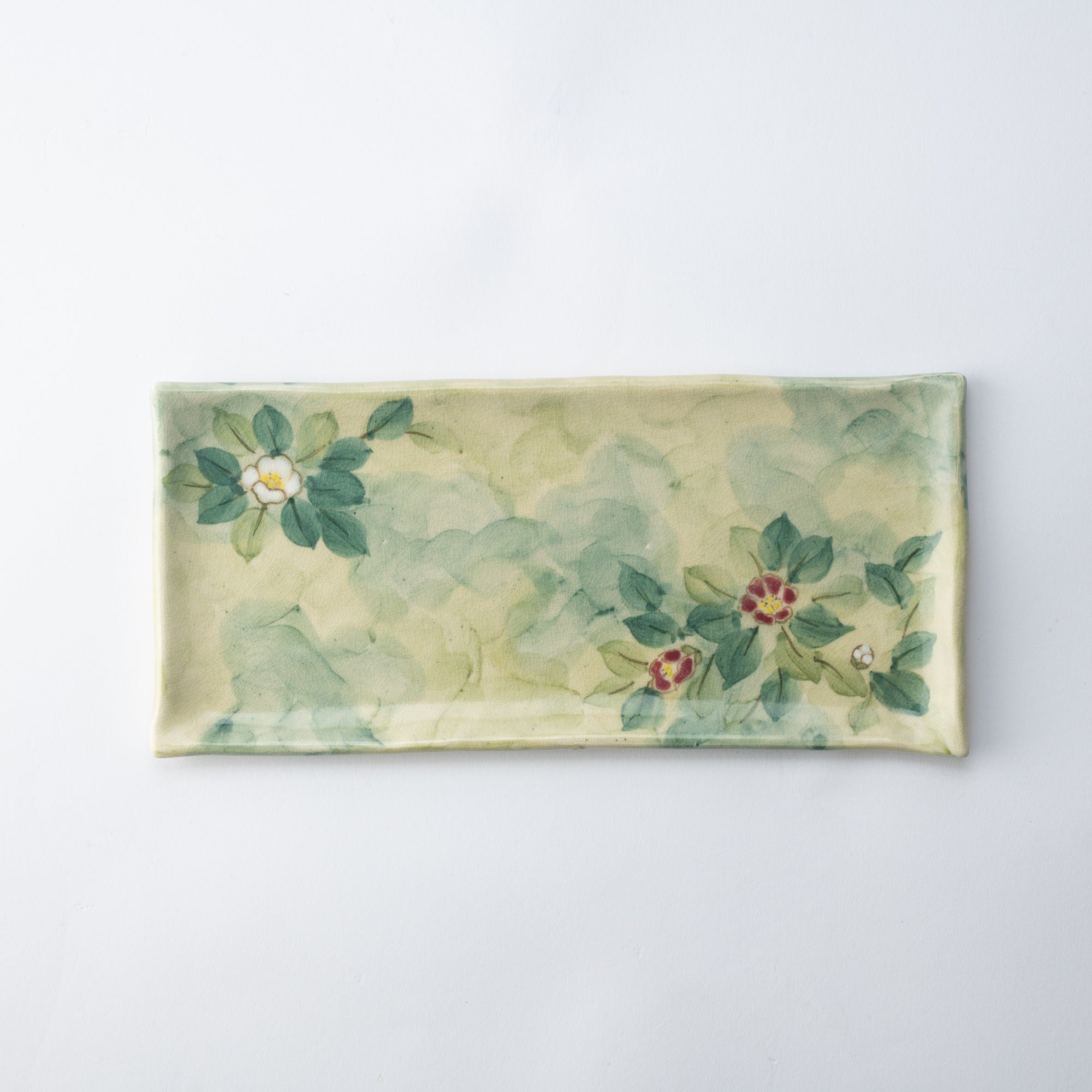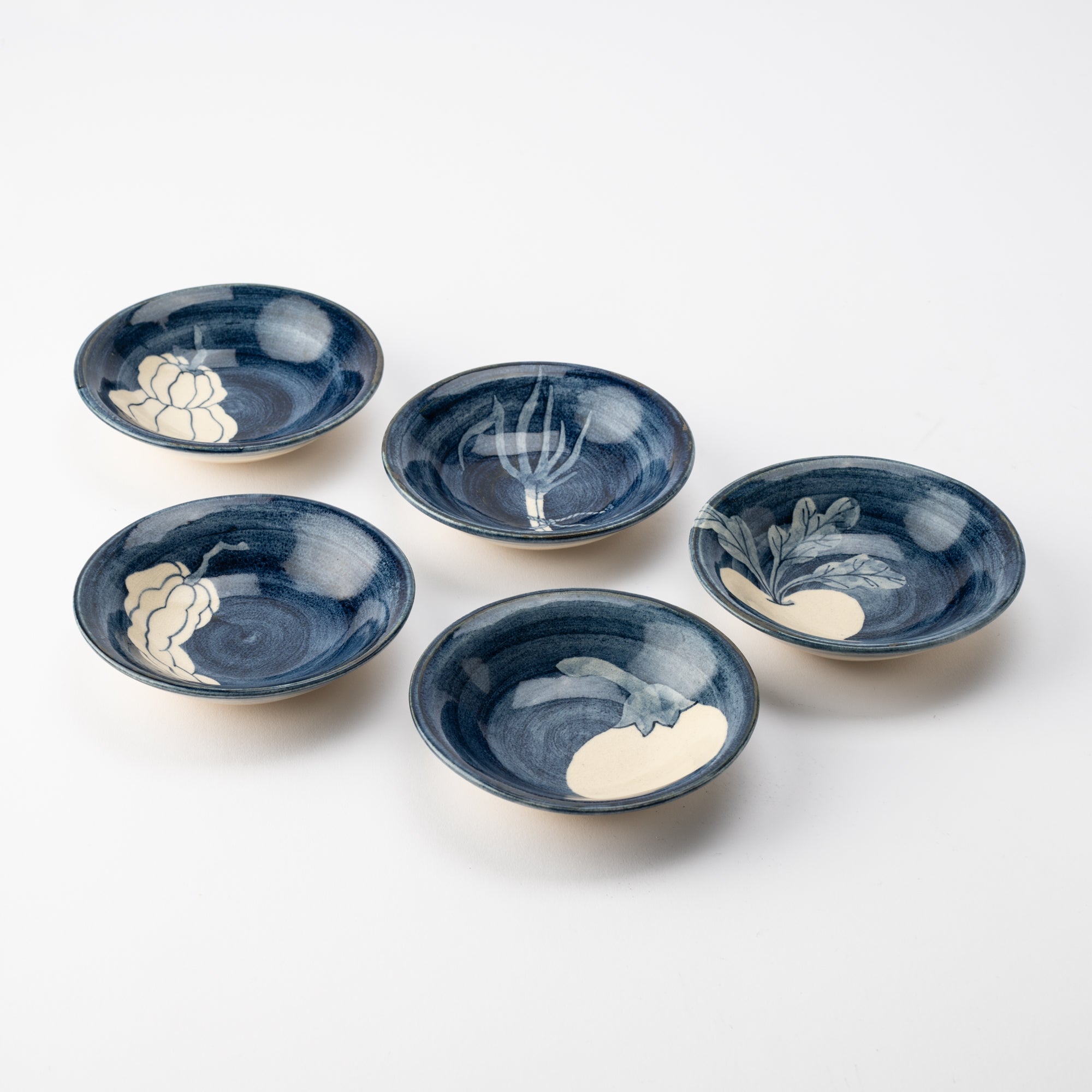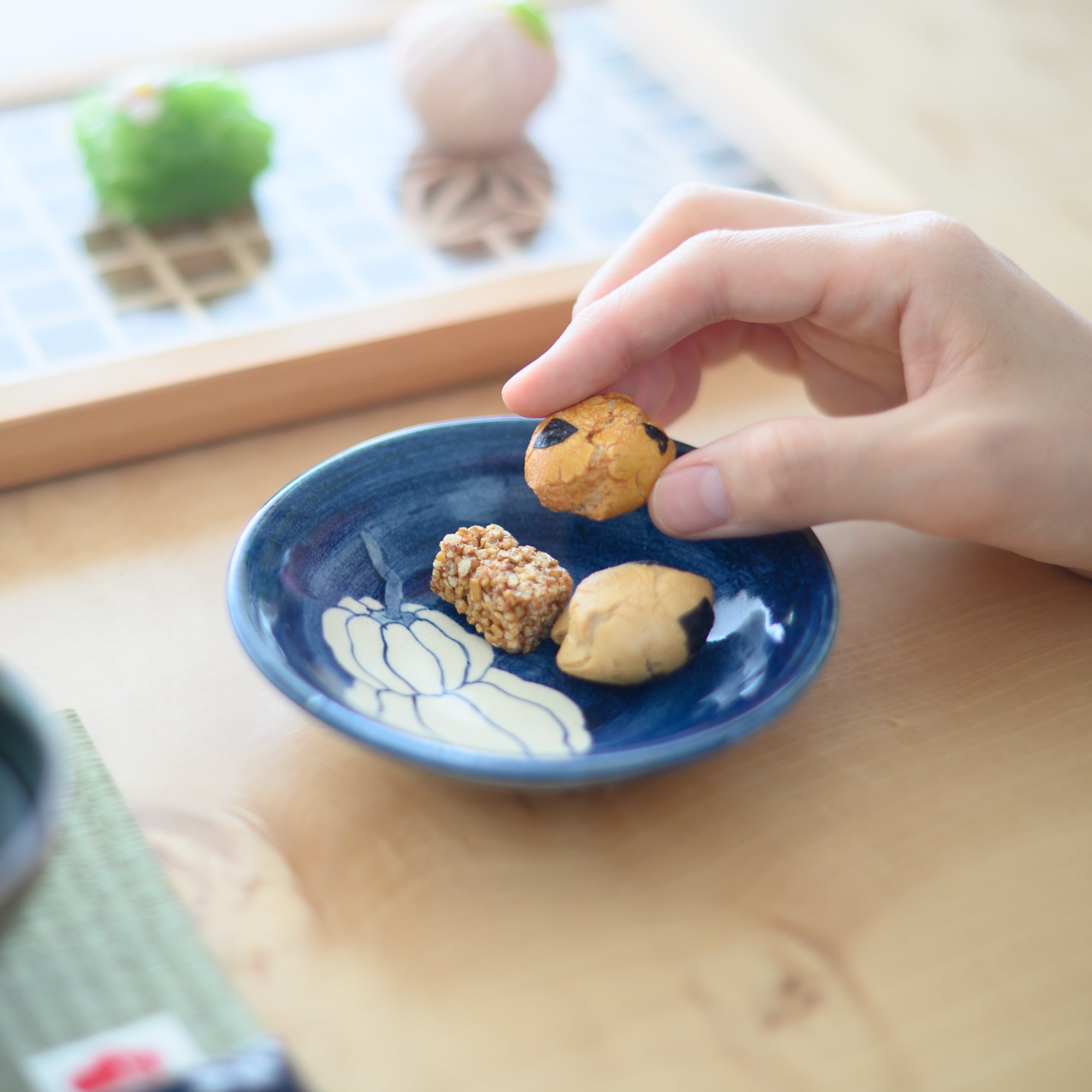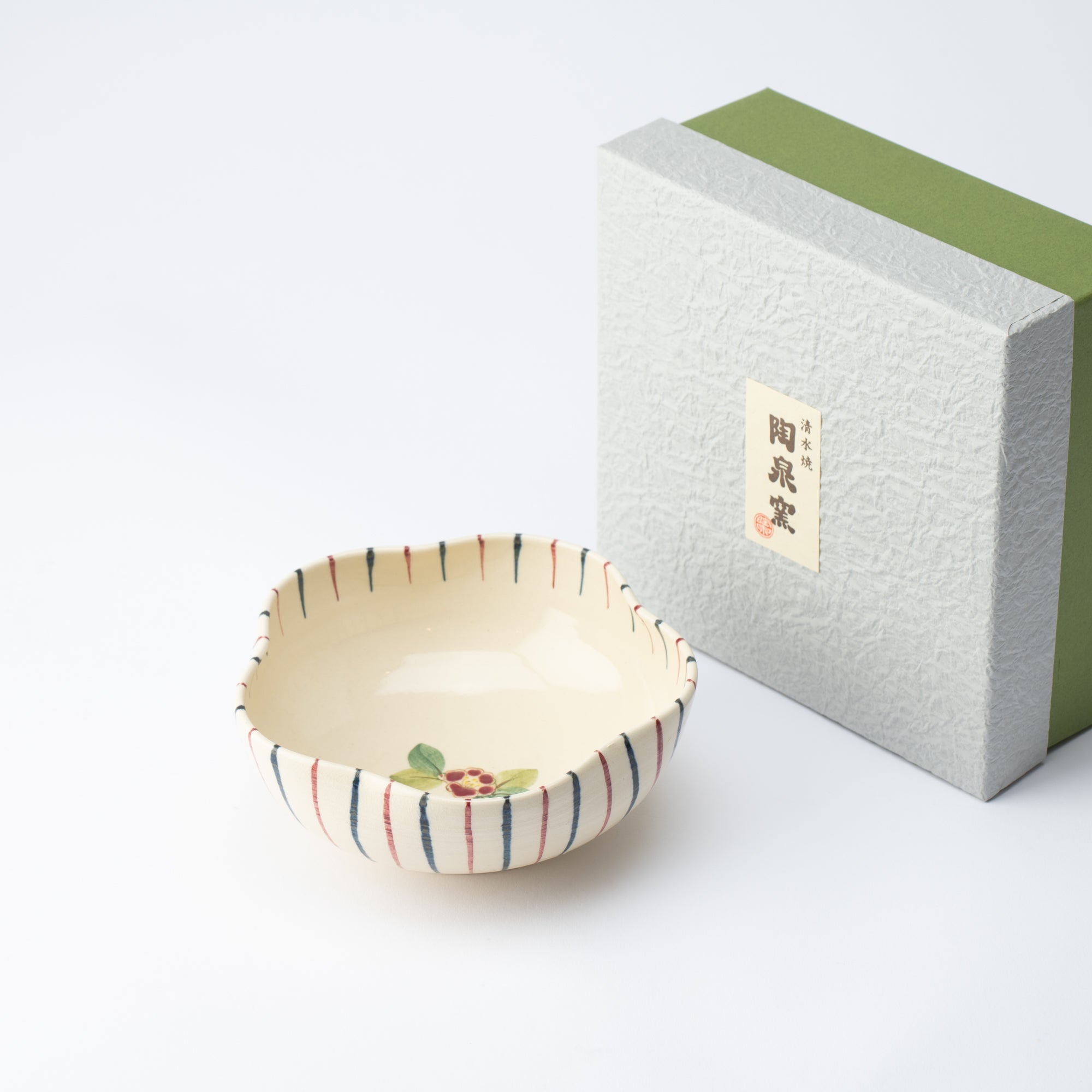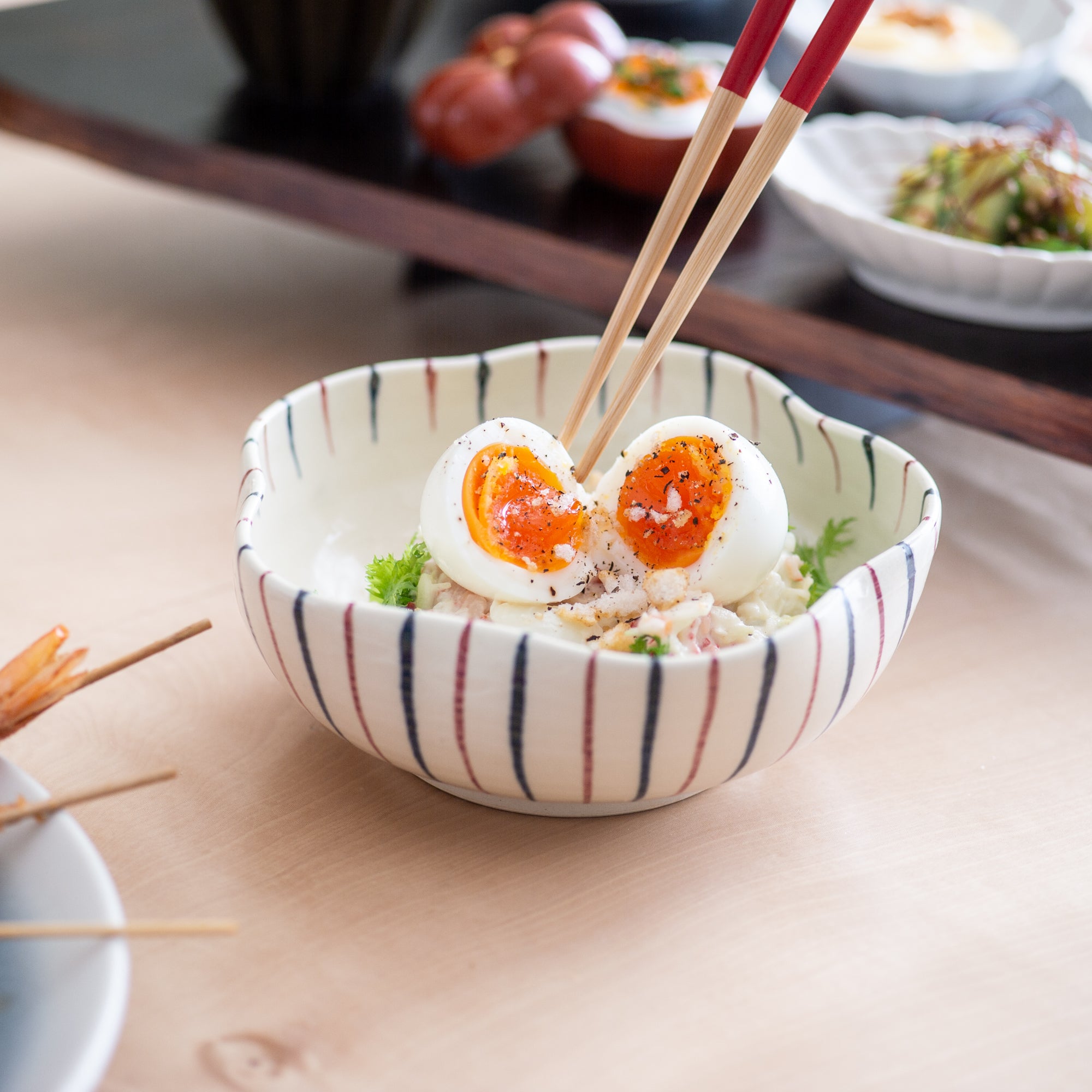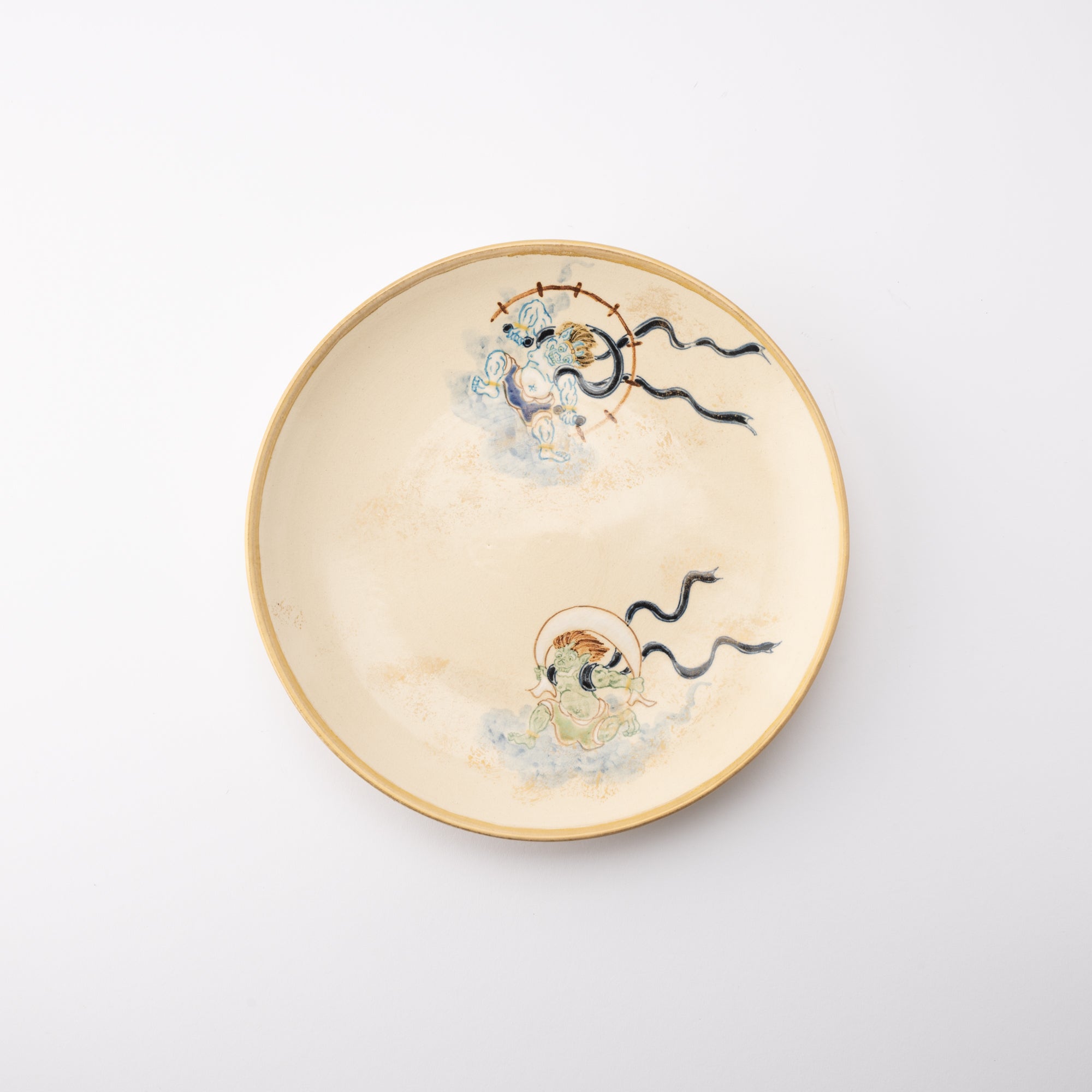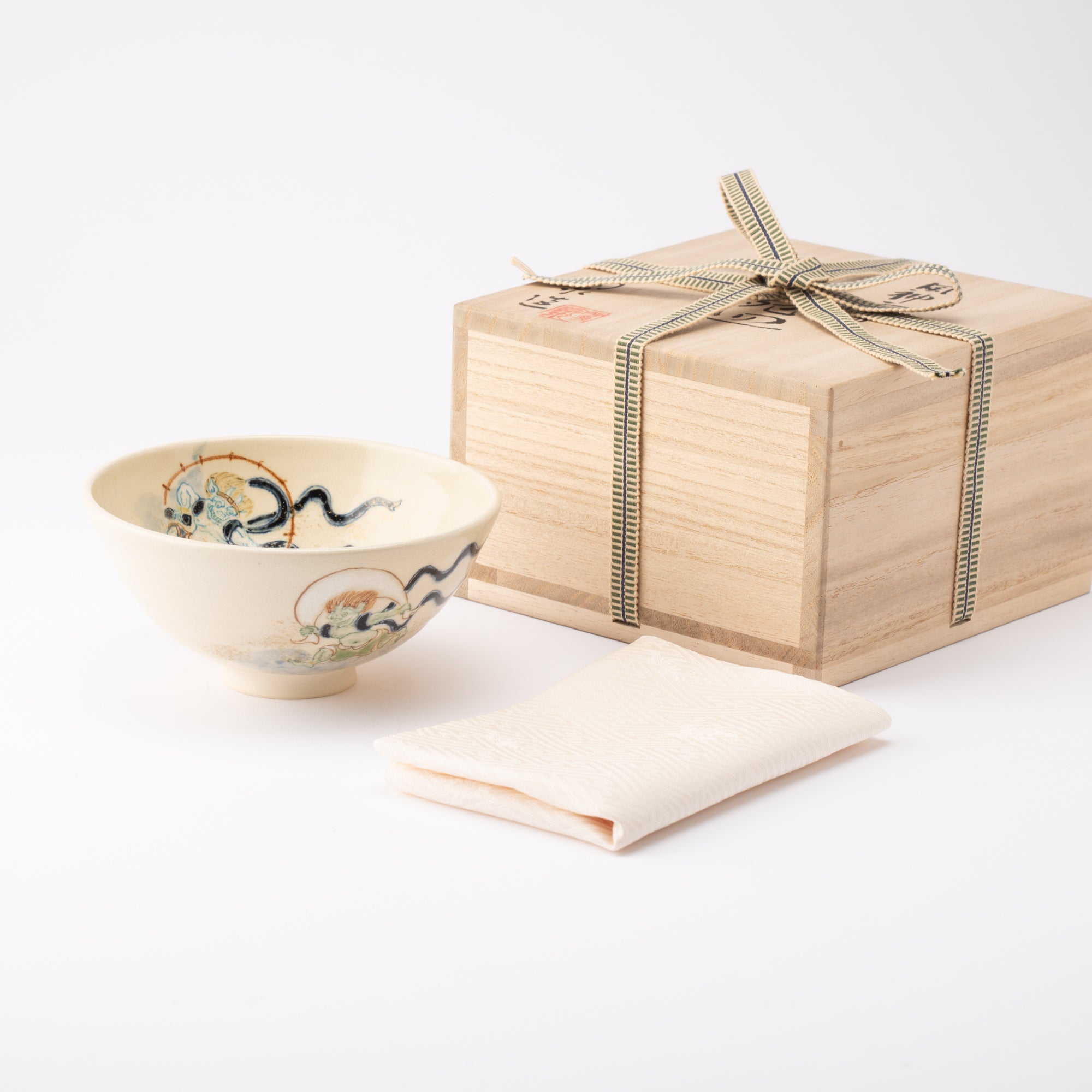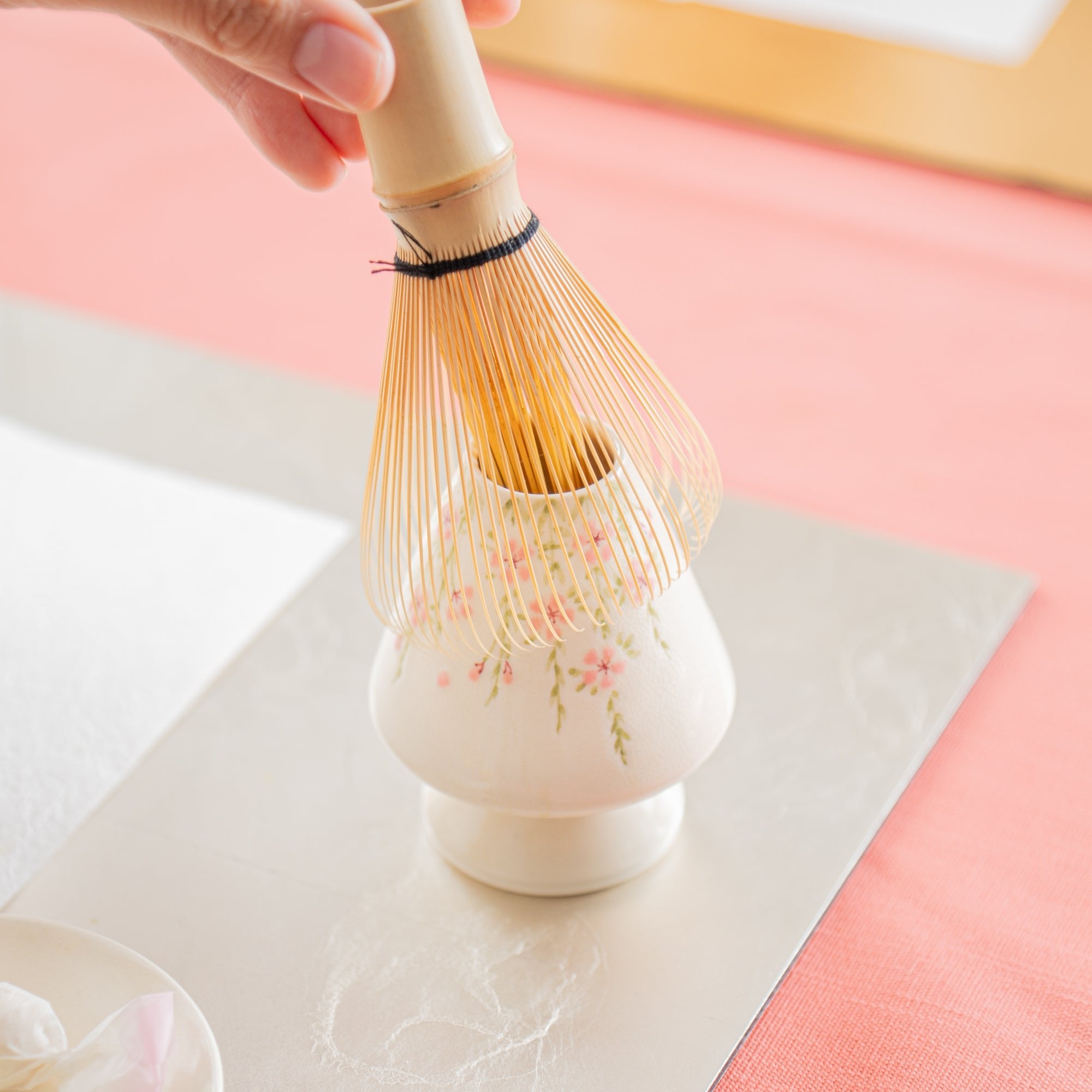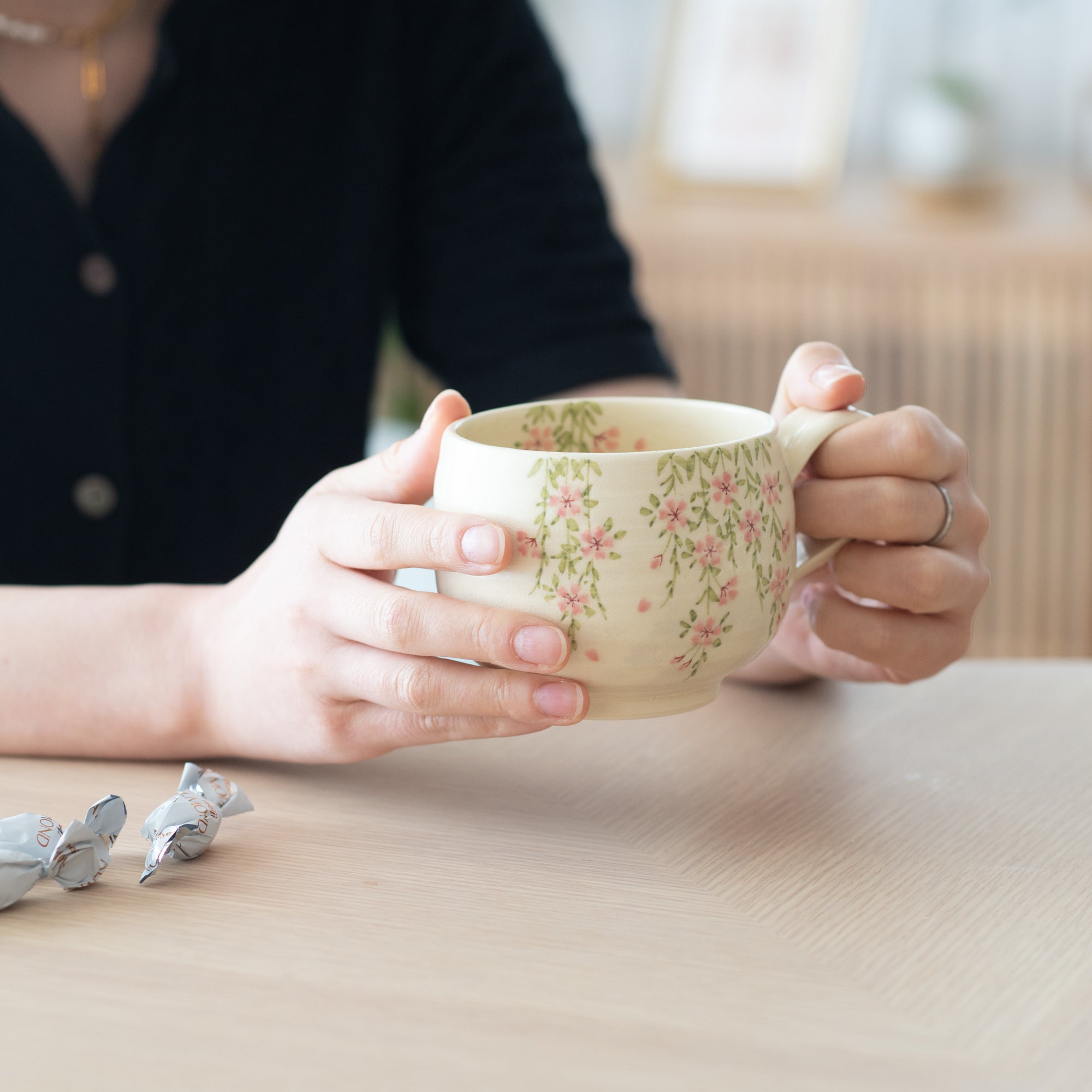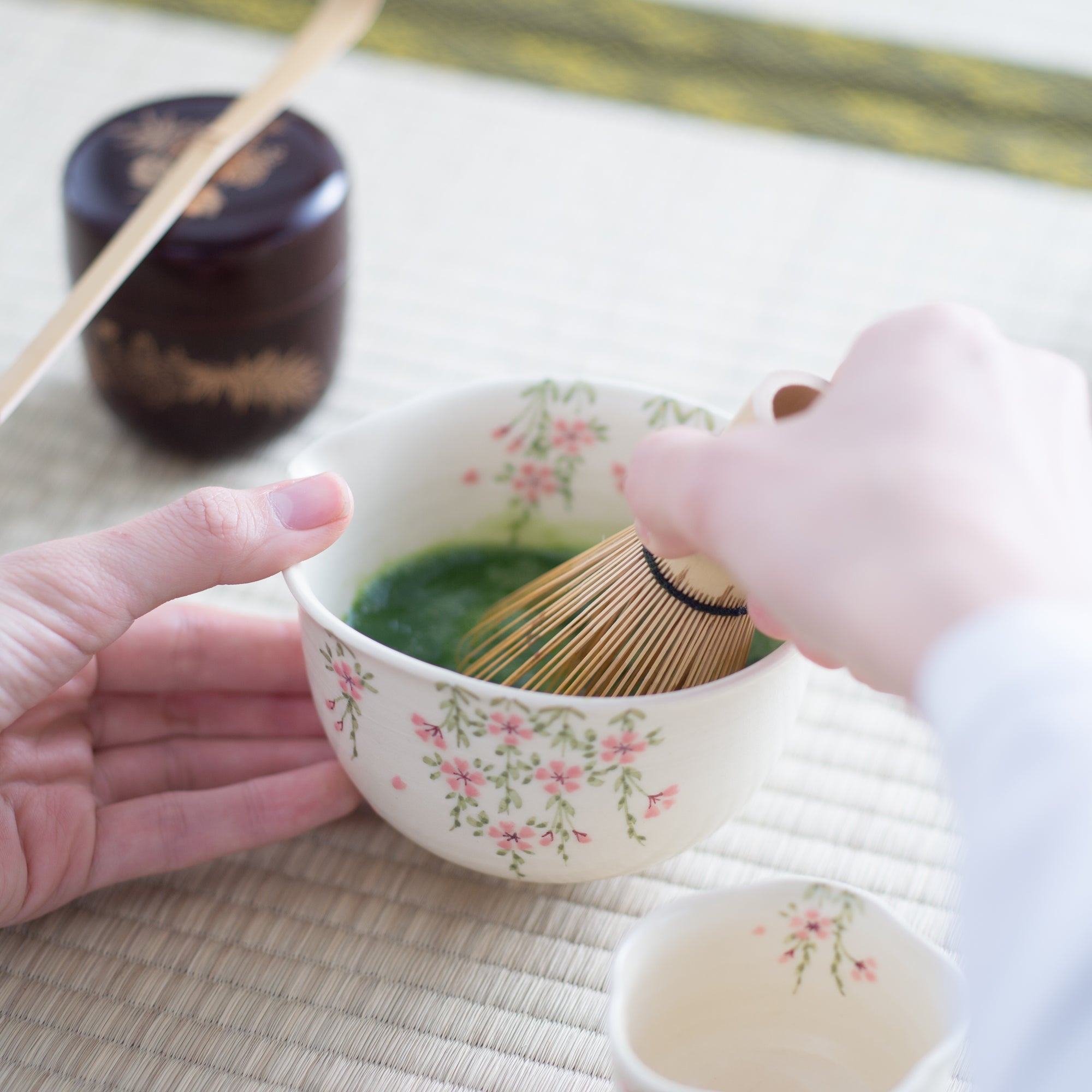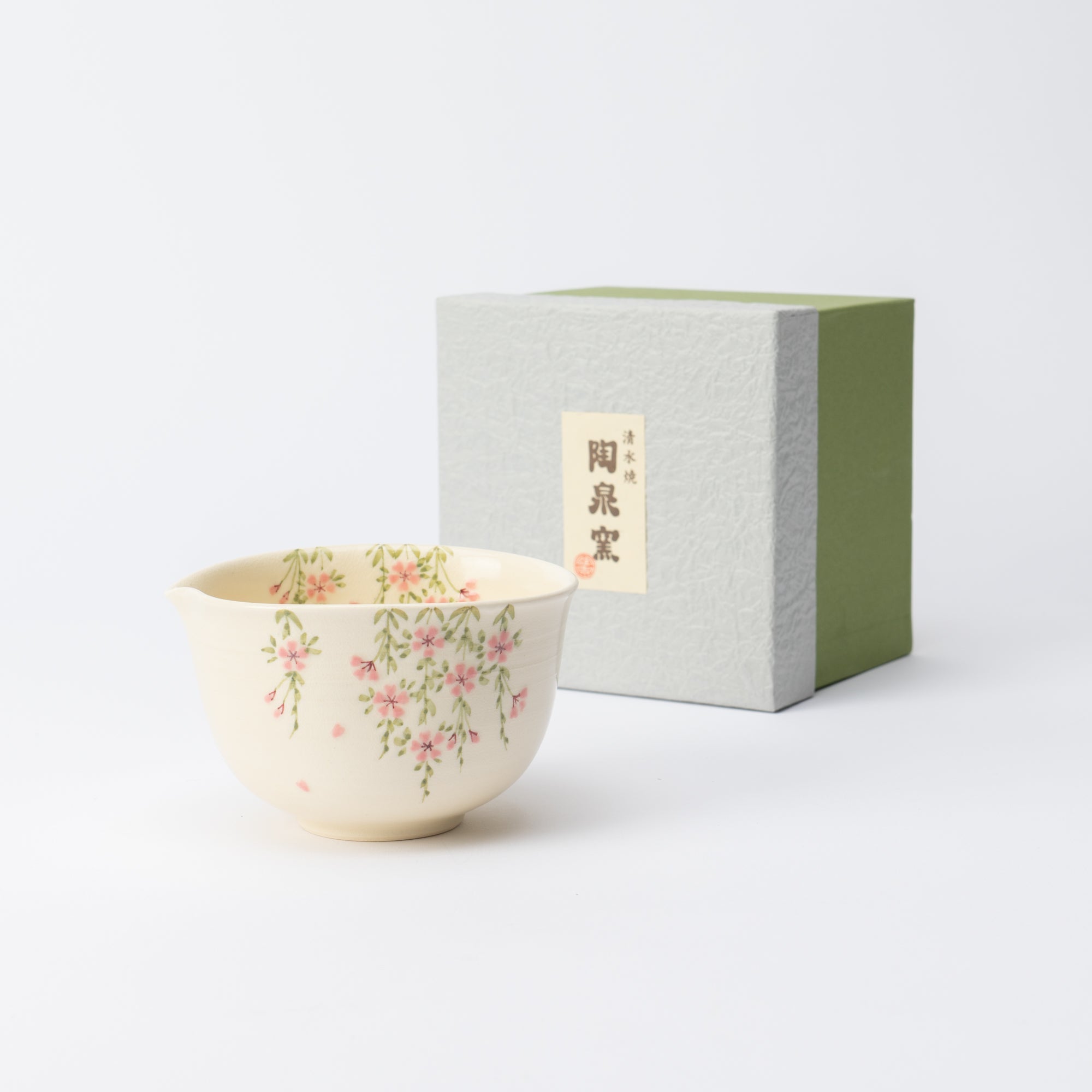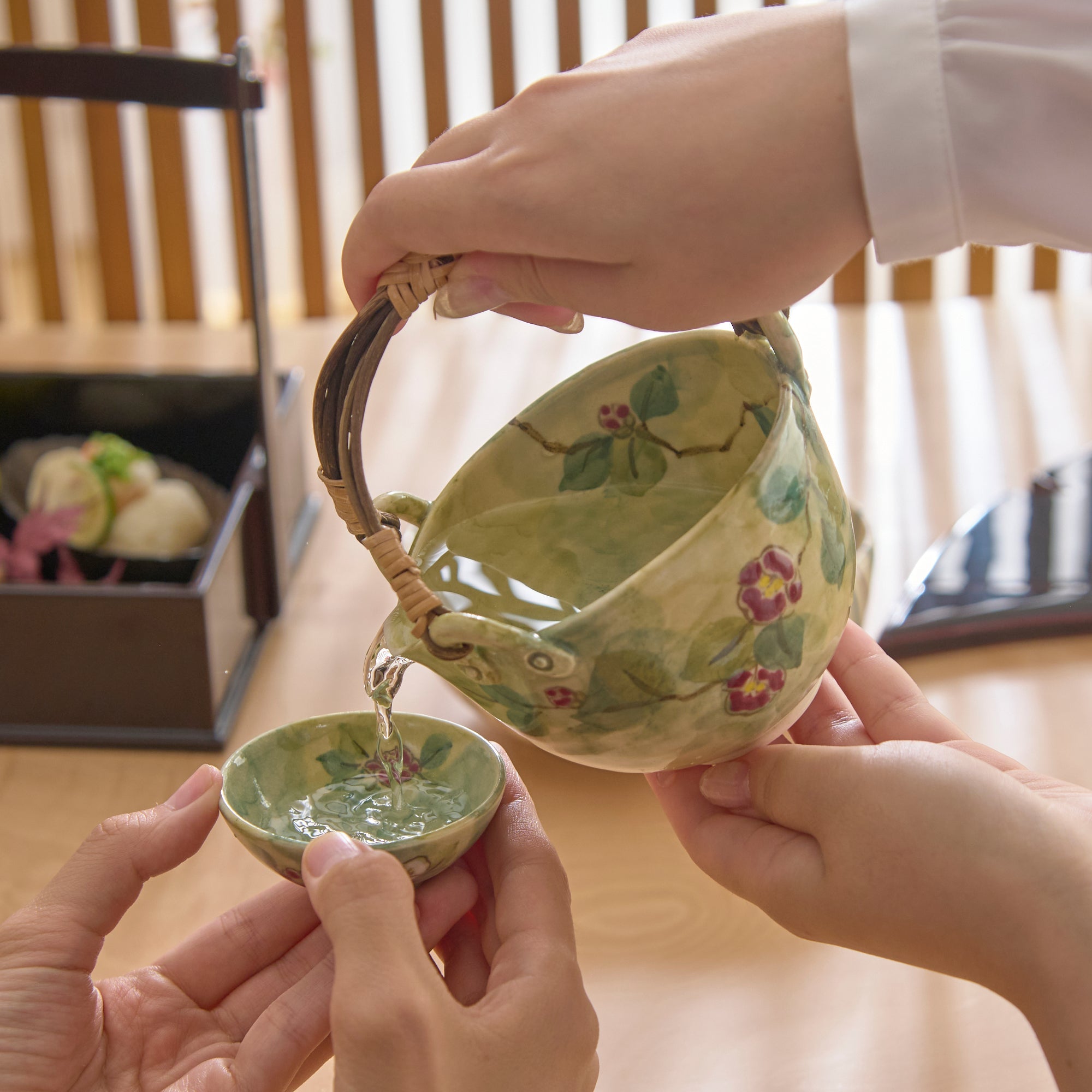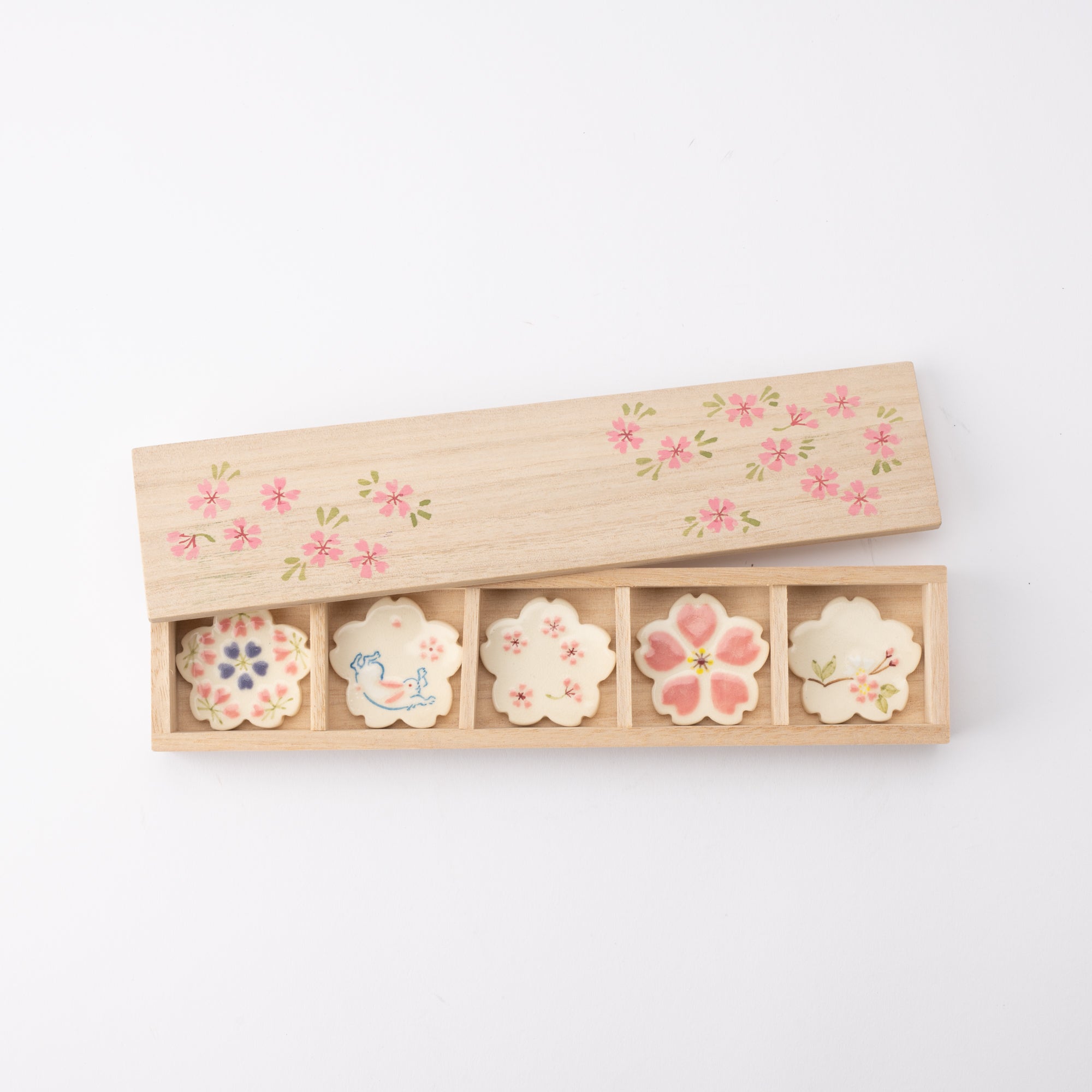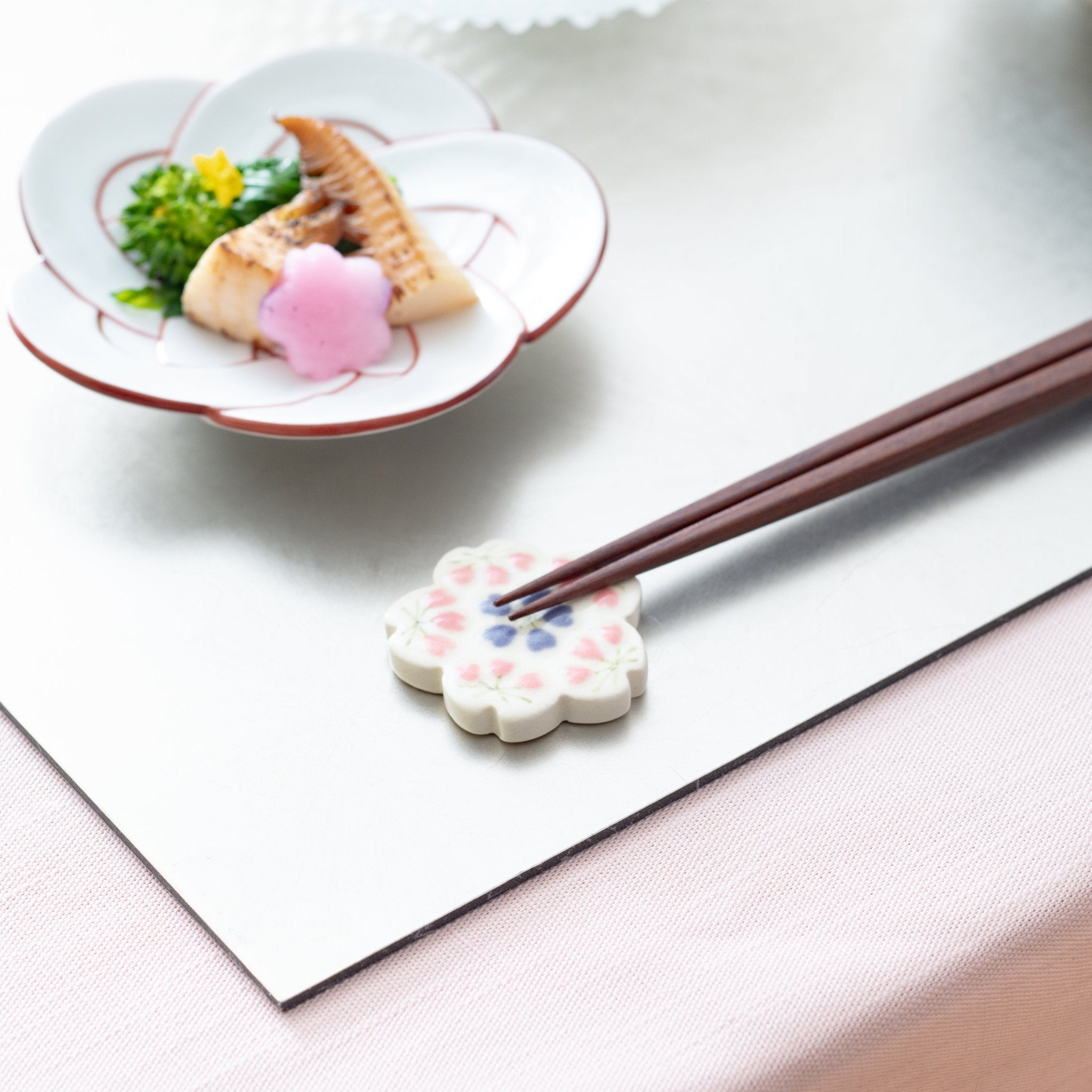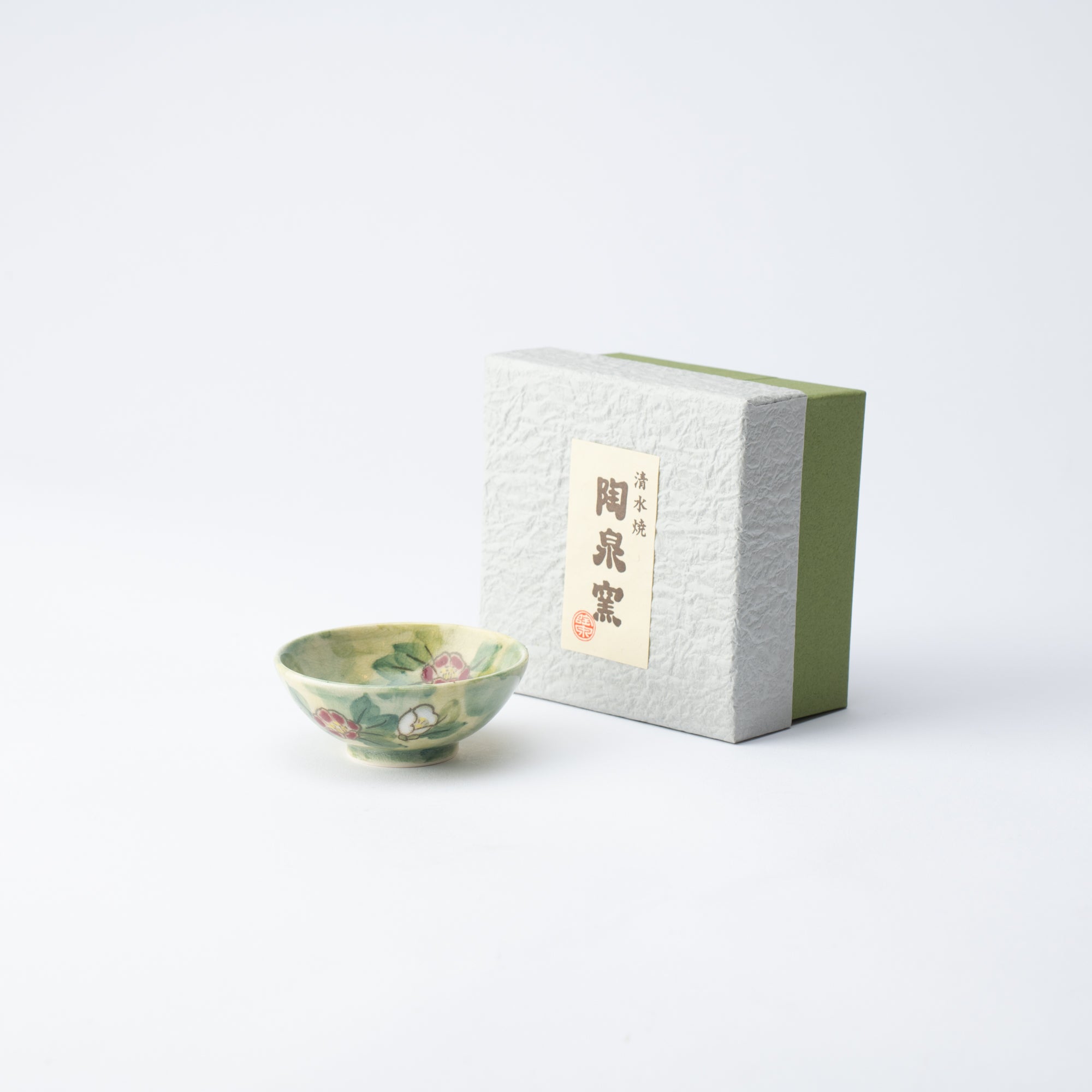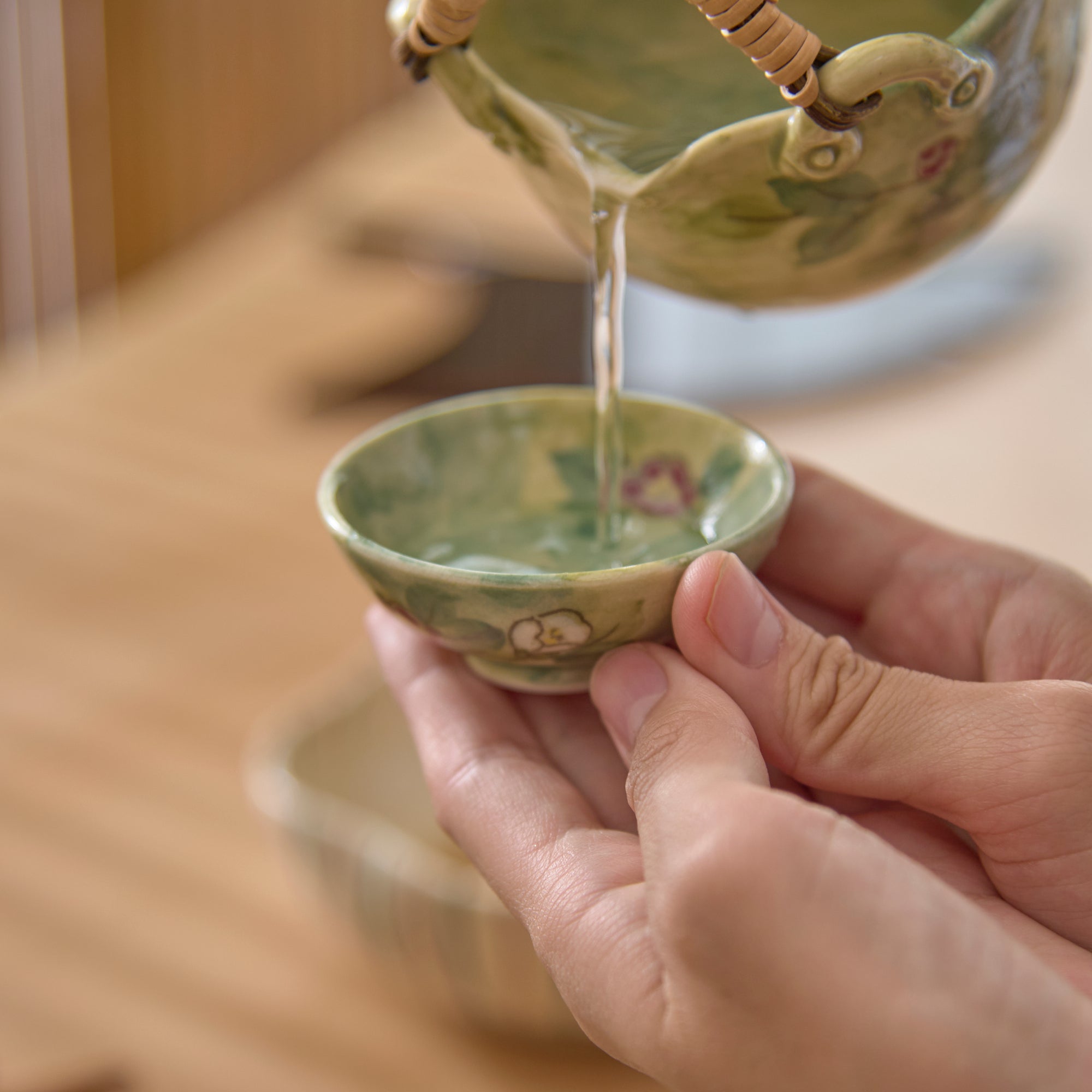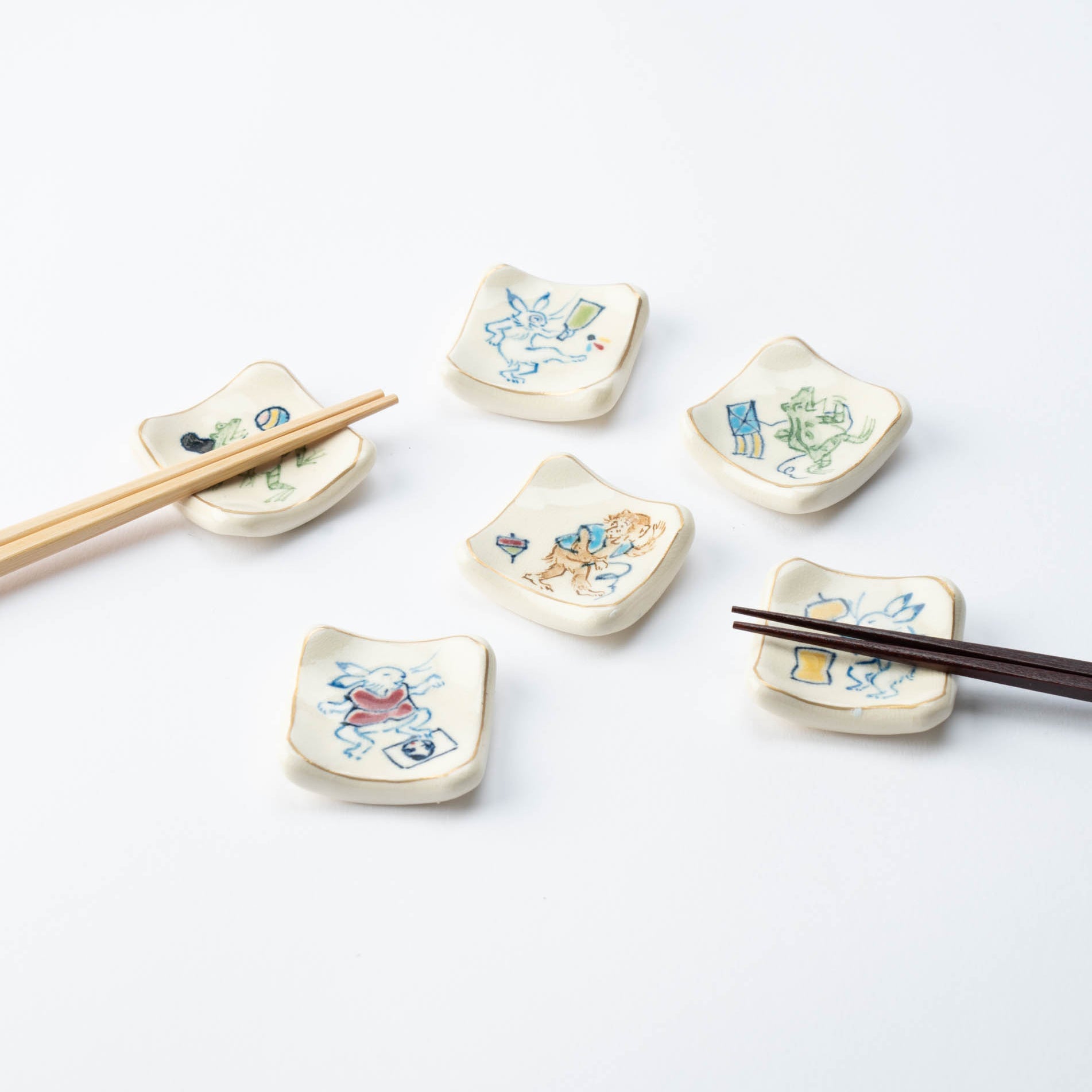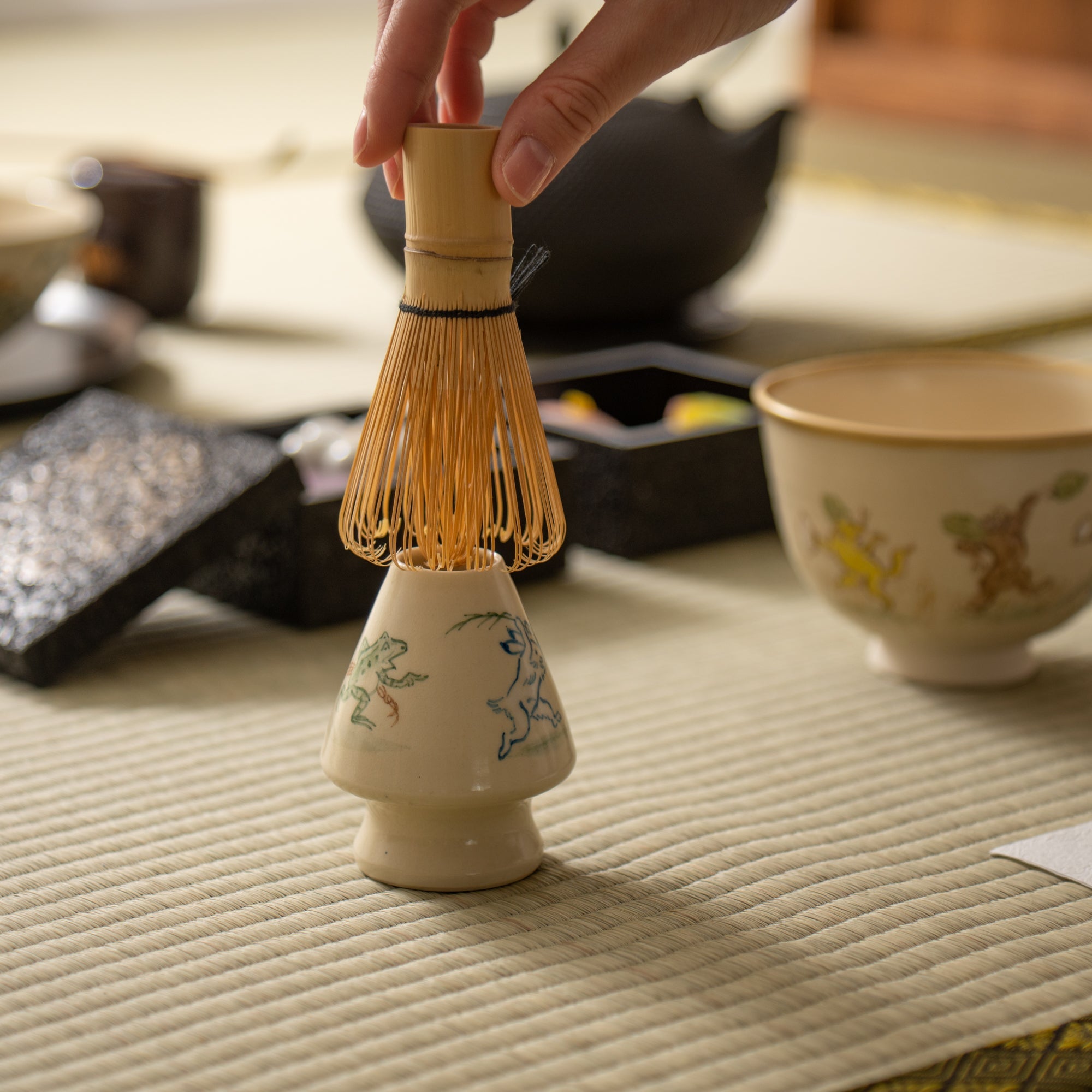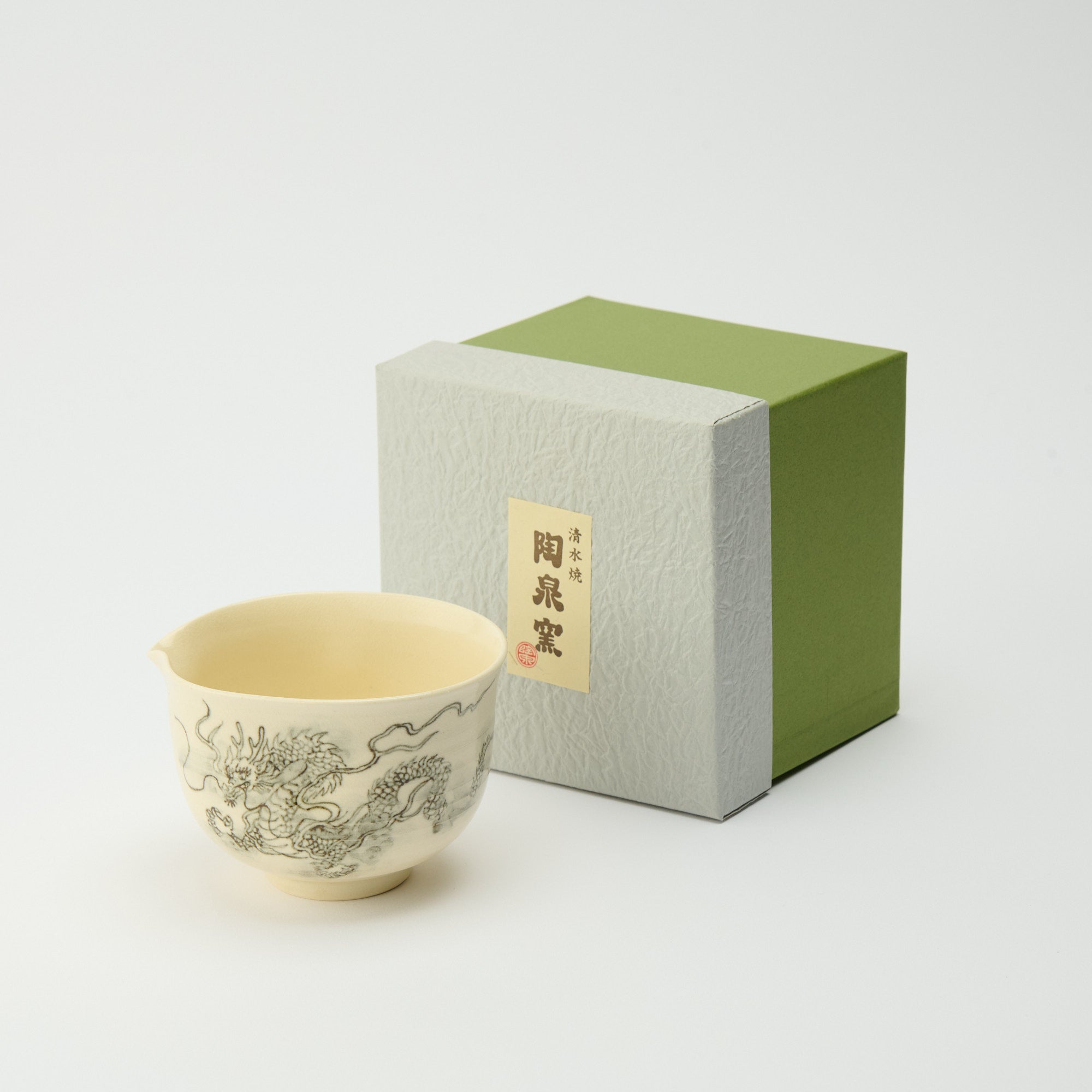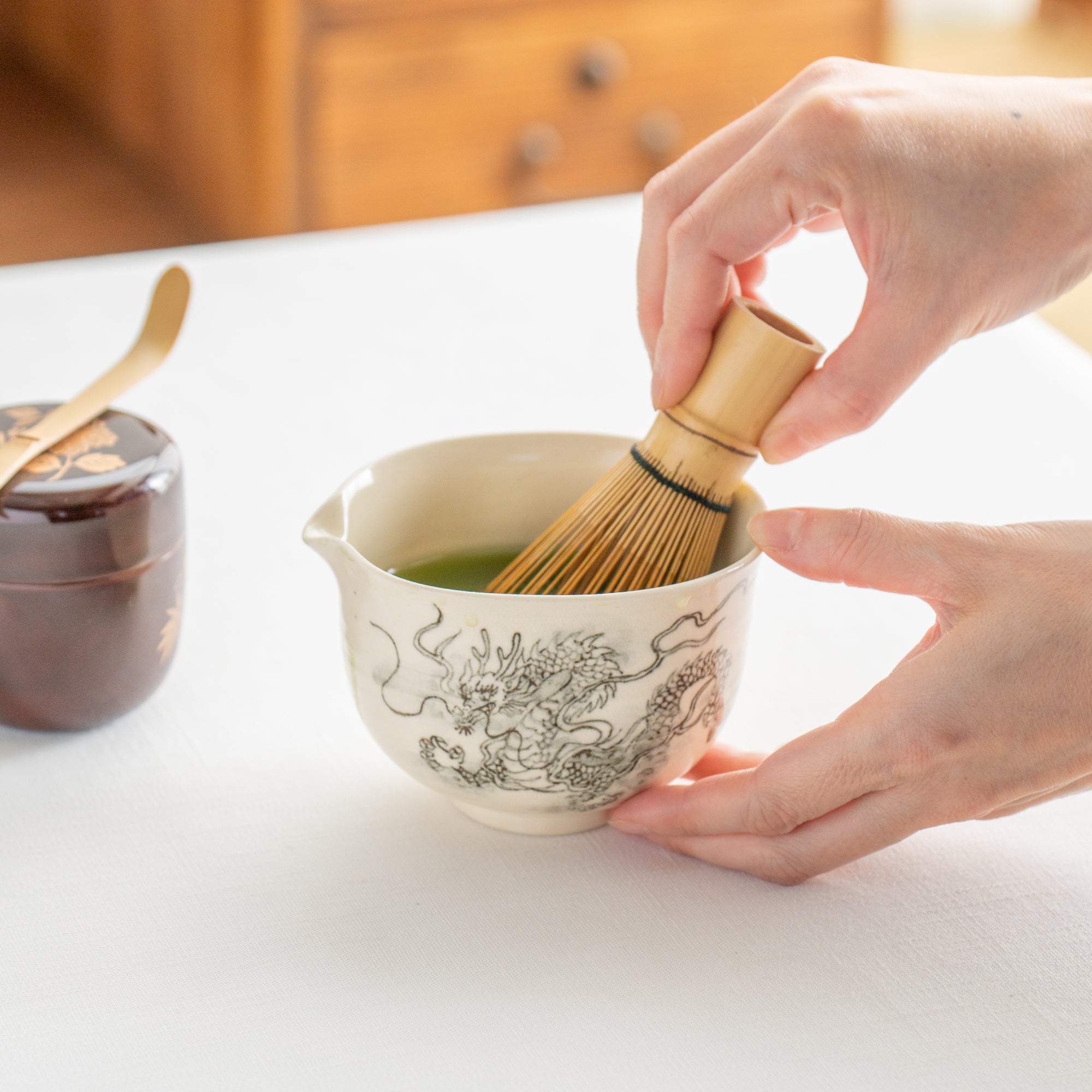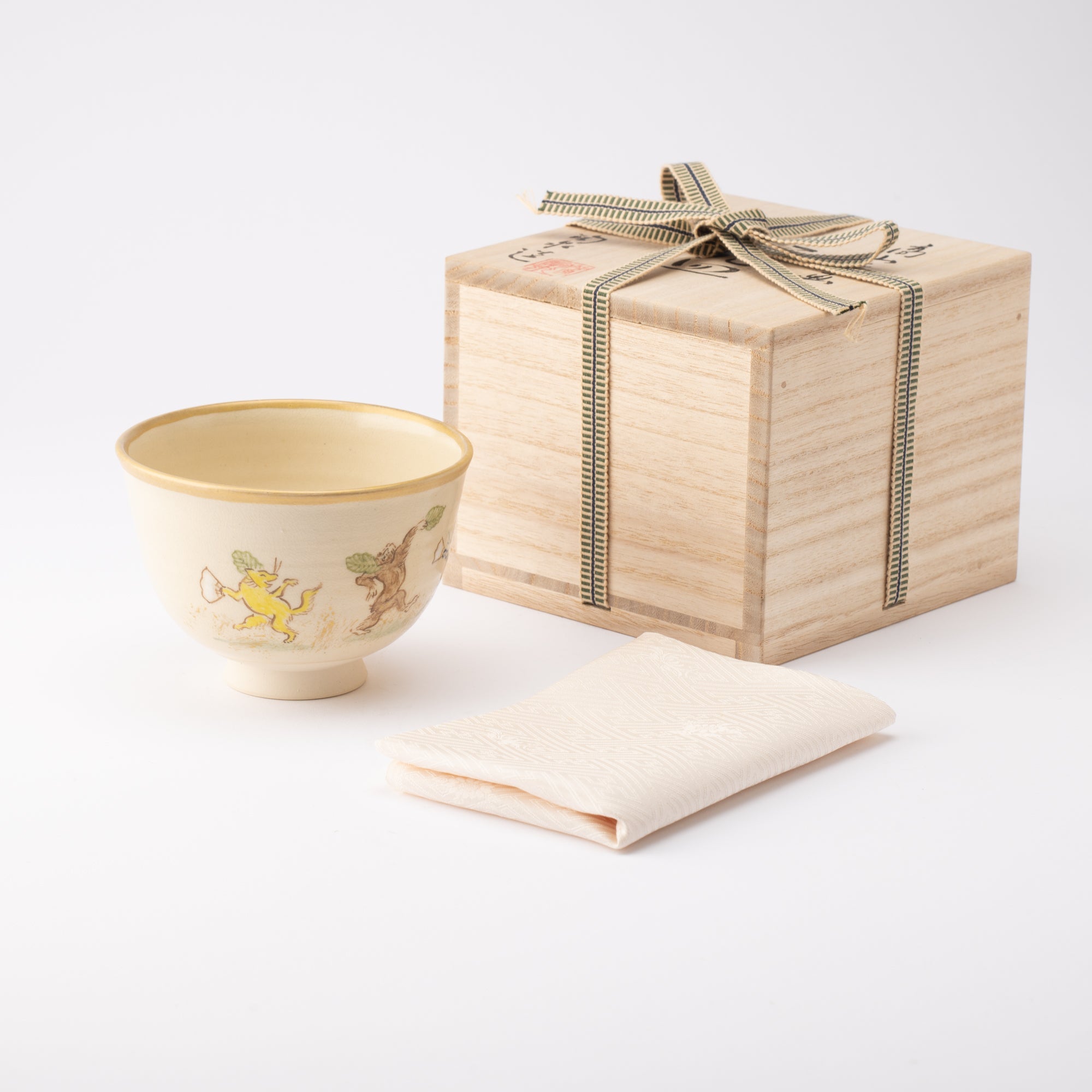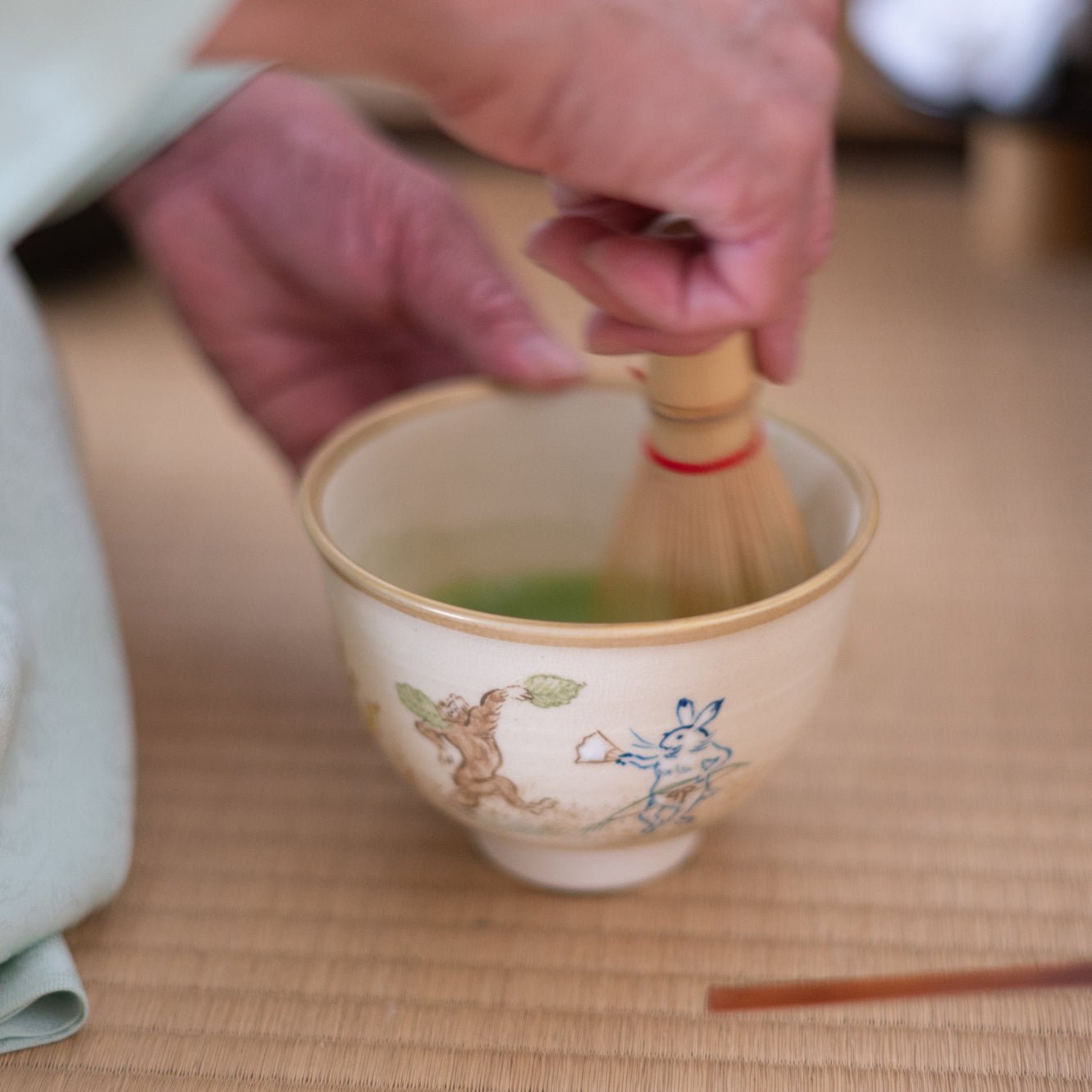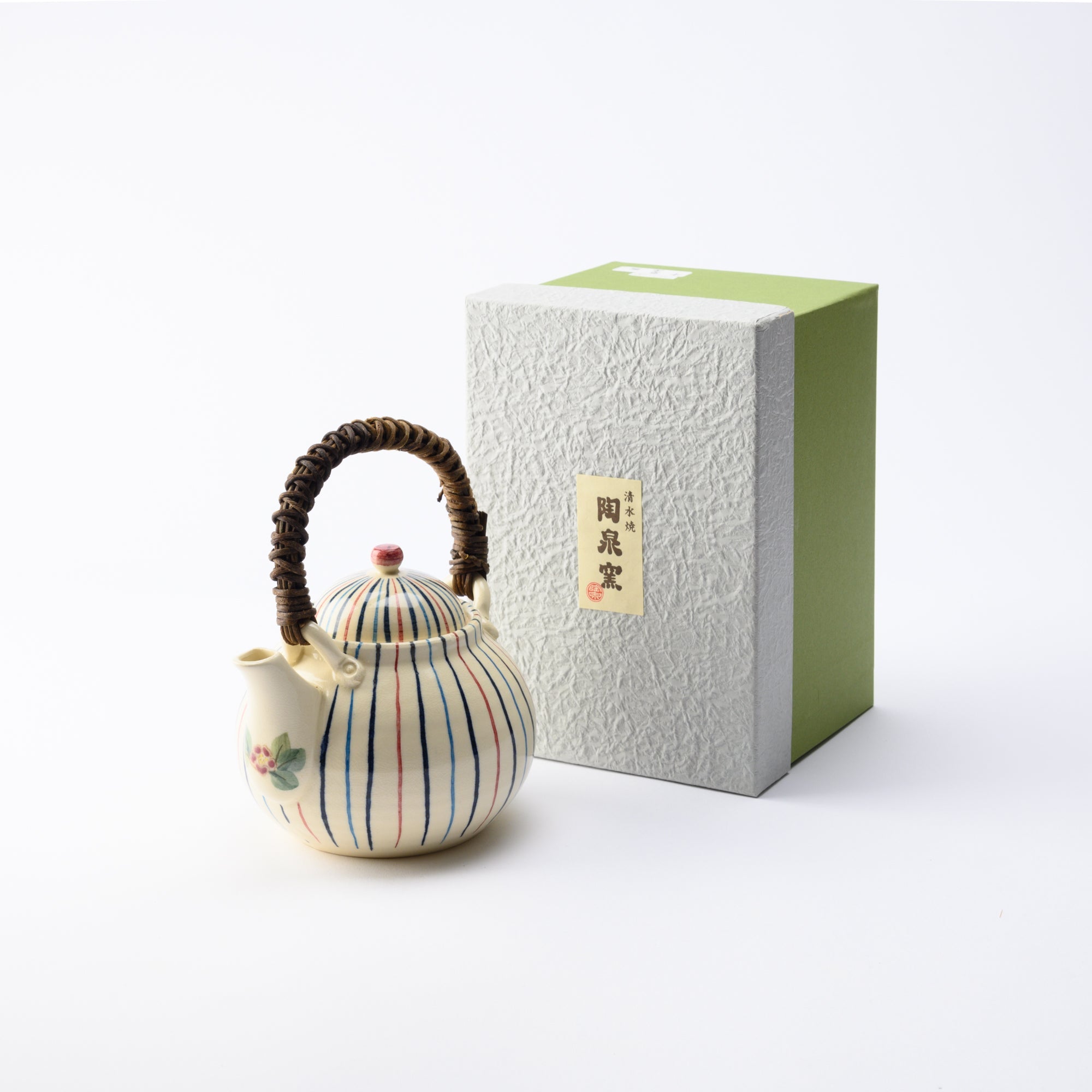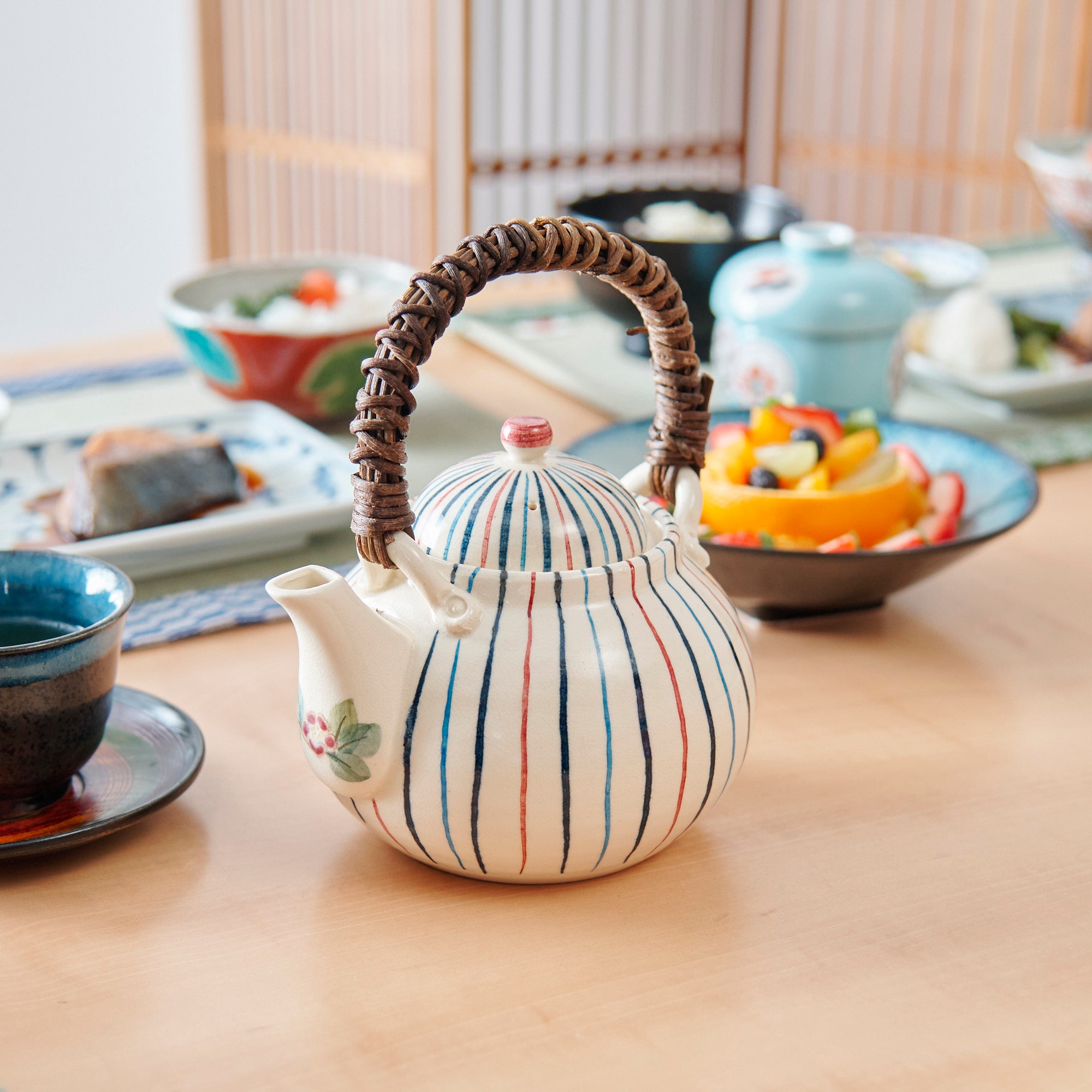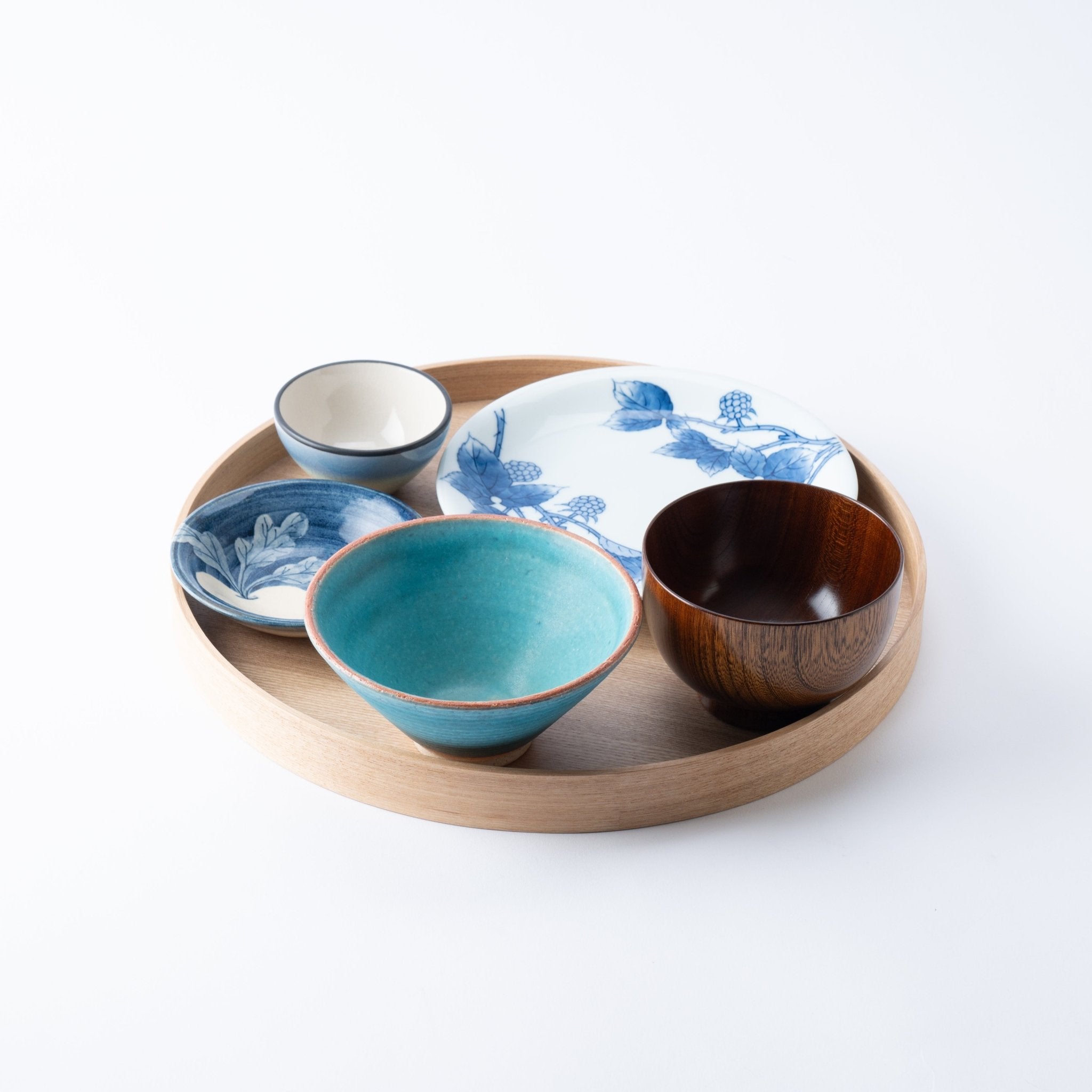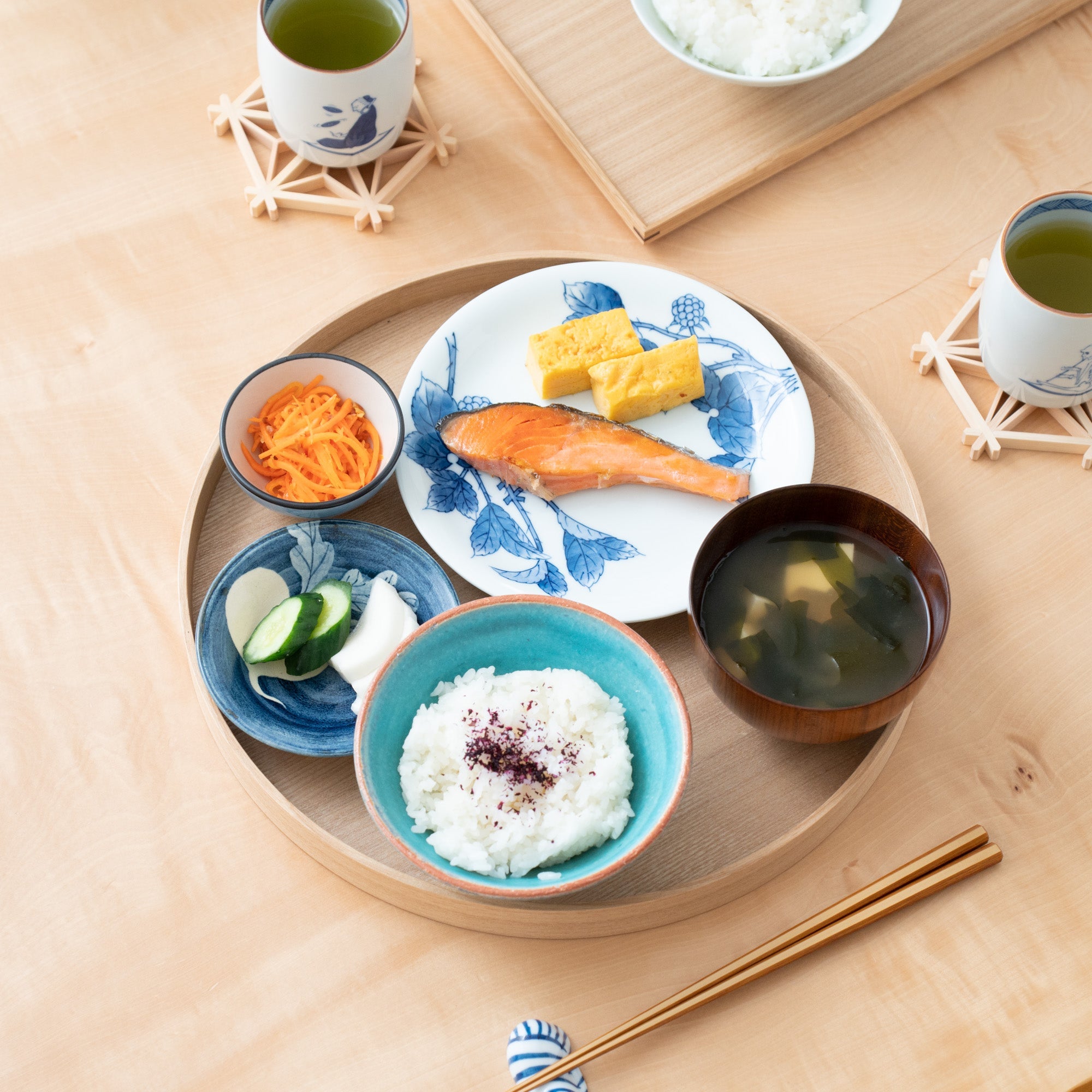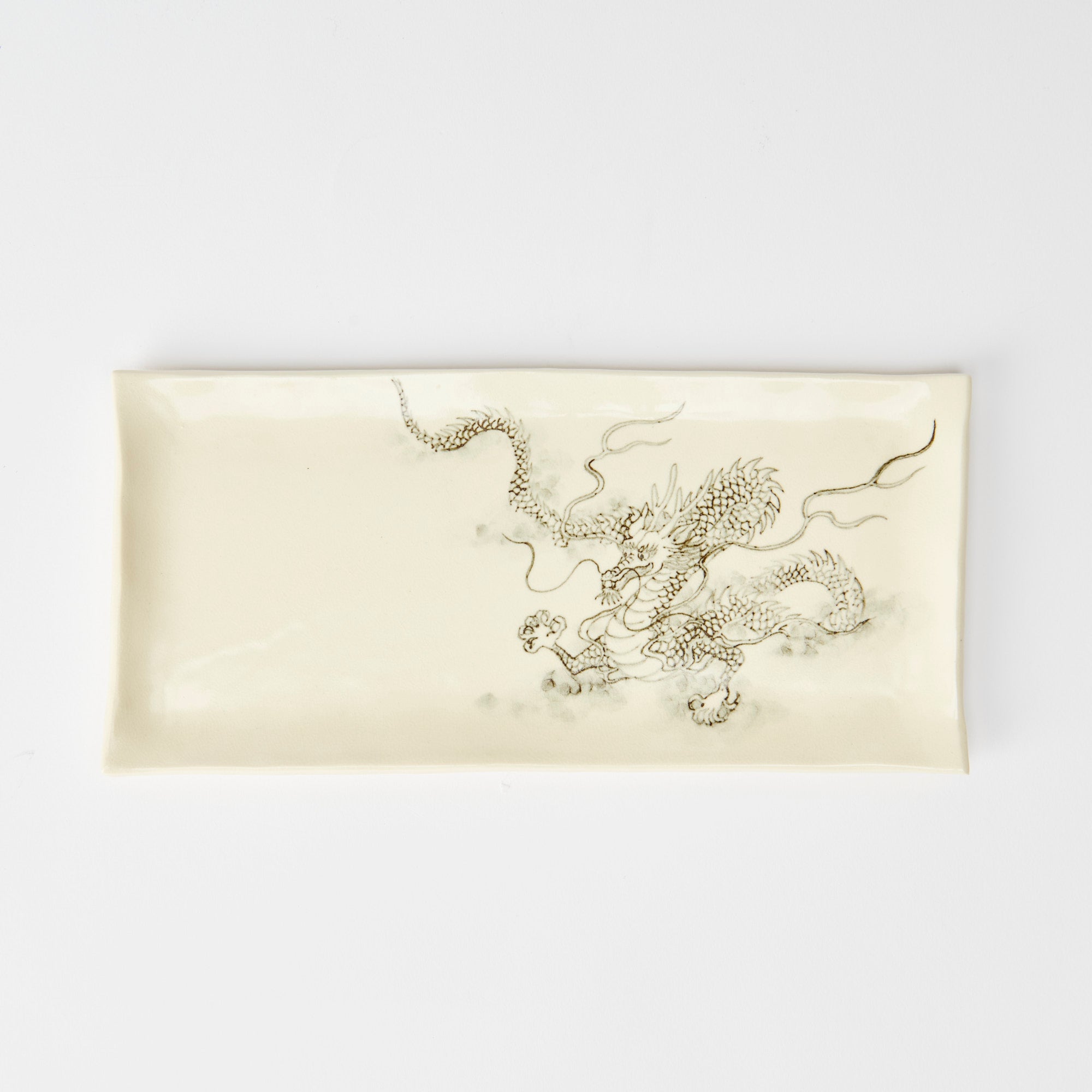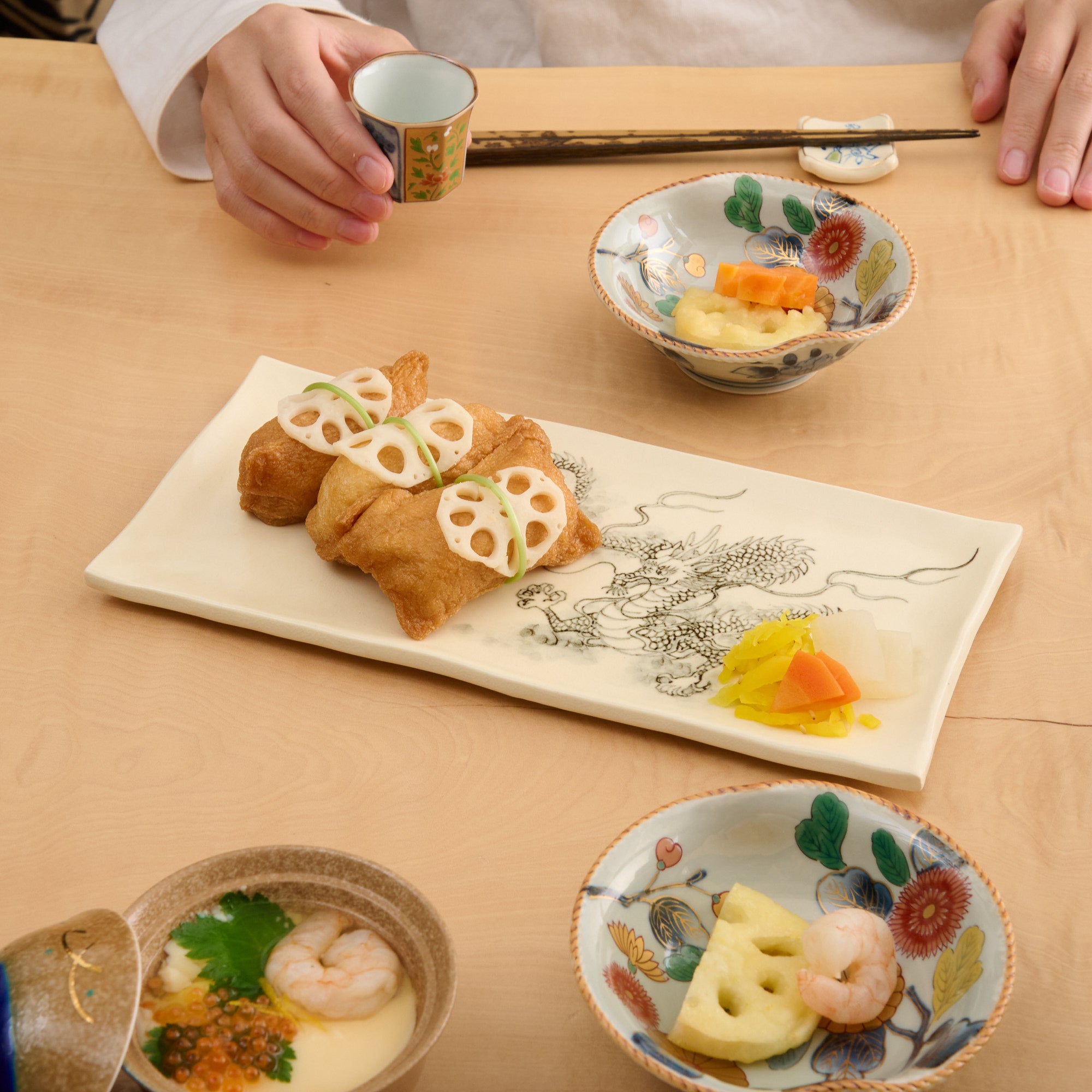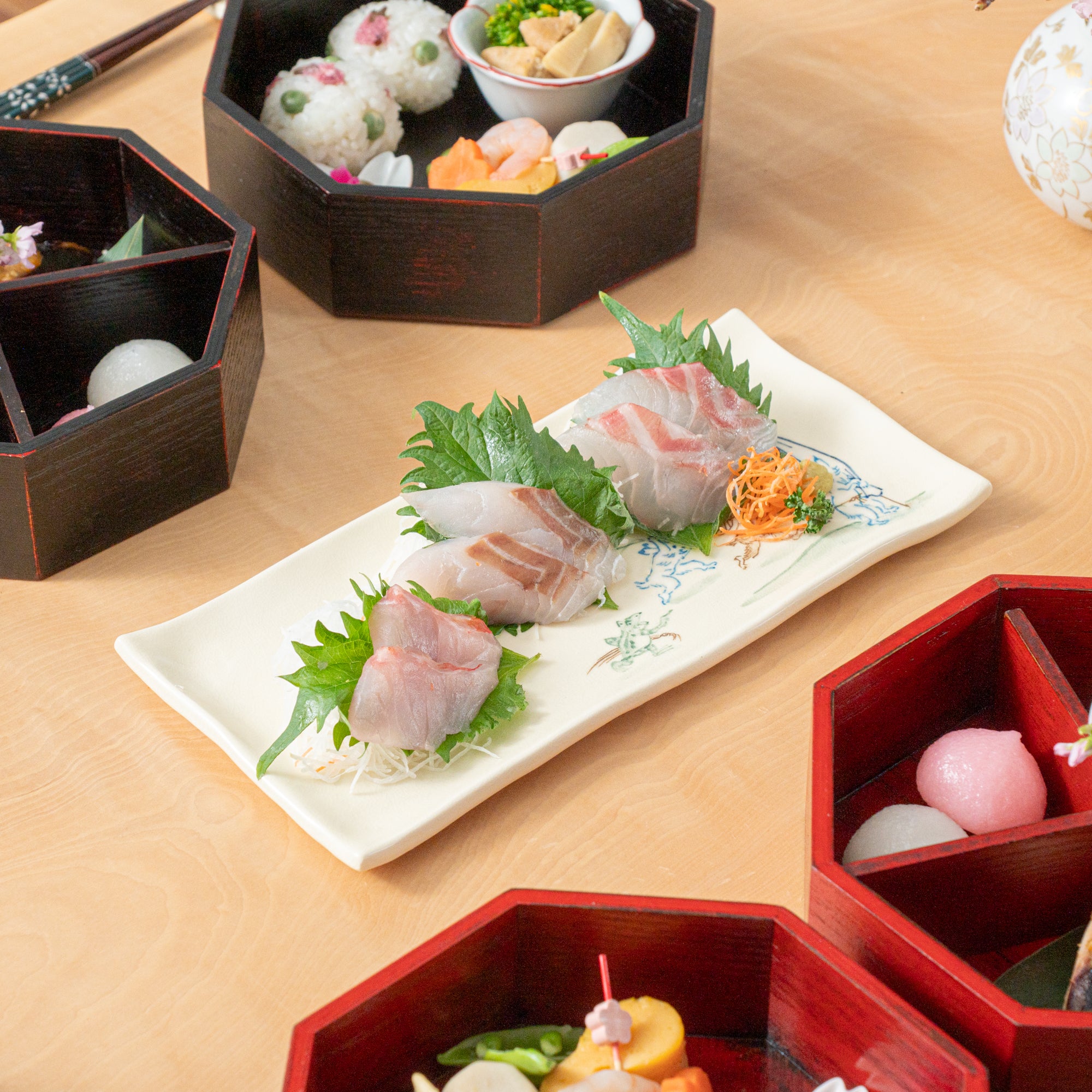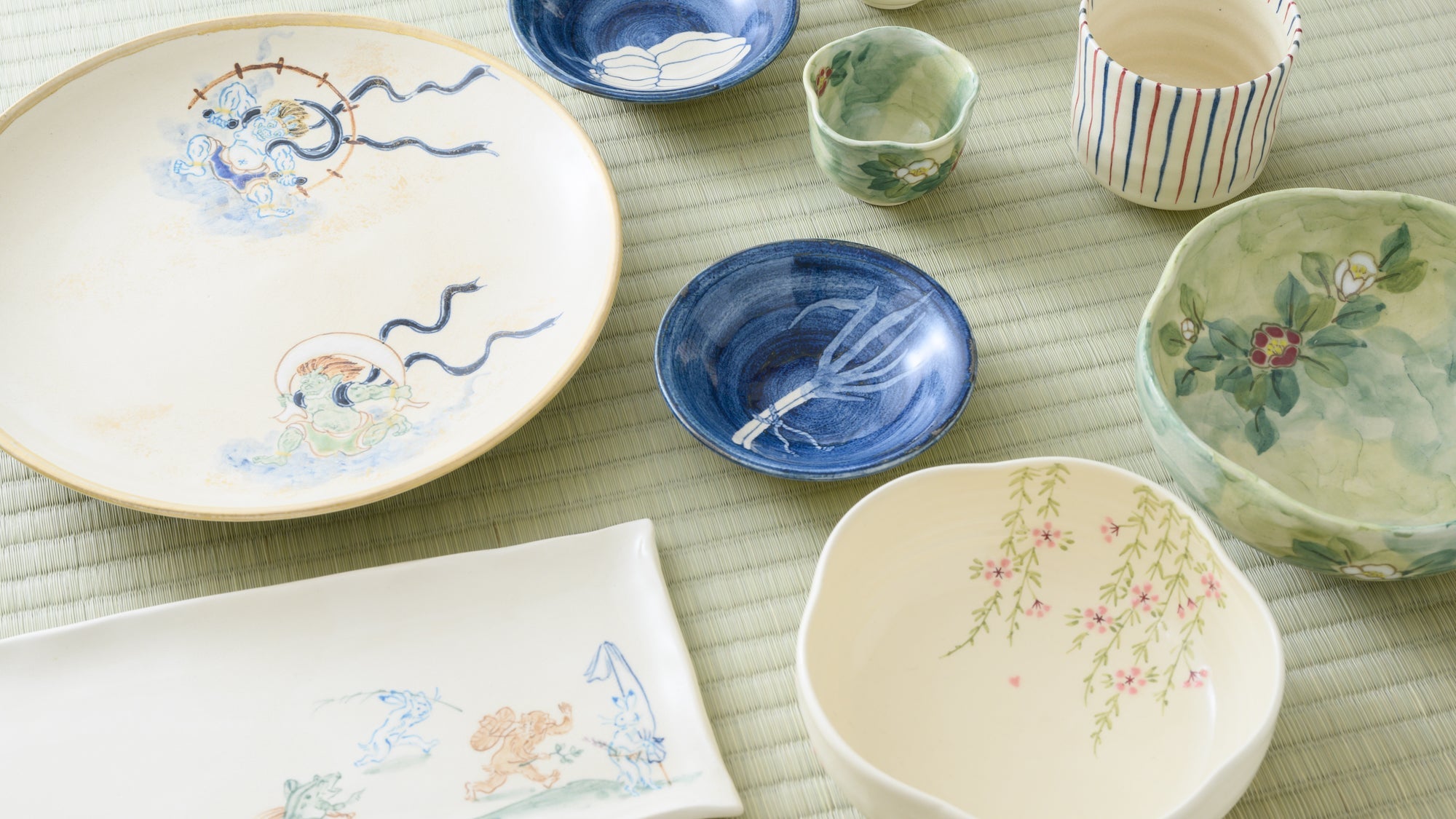
Horno Tosen
Tosen Kiln se fundó en 1868 como mayorista de cerámica Kiyomizu. En 1944, estableció un estudio de producción en Mukomachi, un suburbio de Kioto, lo que marcó el inicio de la producción a gran escala de cerámica Kiyomizu. Actualmente, el horno opera en Gojo, Kioto, continuando su legado artesanal.
Dedicado a perfeccionar sus técnicas y sensibilidad artística, Tosen Kiln adopta la artesanía tradicional de Kioto adaptándola a la era moderna. Inspirándose en el maestro alfarero del período Edo, Nonomura Ninsei, conserva sus precisas técnicas de torneado y sus luminosos estilos de pintura, combinándolos con líneas limpias y tonos cálidos para crear piezas que resuenan con la estética contemporánea.
Serie
Majestuosos dragones se elevan sobre la porcelana; sus formas de cinco garras simbolizan poder y fortuna. Esta serie captura la esencia de la pintura de estilo japonés, presentando el intrincado motivo de un dragón que emerge de un fondo brumoso y nuboso. Elaborada con kyu gosu, un raro pigmento azul negruzco redescubierto a través de generaciones de tradición, el proceso exigió mucho ensayo y error para lograr sus suaves gradaciones, un desafío más allá del estándar. gosuCada pieza está meticulosamente pintada a mano por un solo artesano con más de una década de experiencia, combinando fuerza con artesanía refinada.

Experimente el encanto único de los célebres productos de Kioto con los tazones y platos pequeños de nuestra Serie de Verduras de Kioto. Las distintivas formas y texturas de las verduras de temporada de Kioto, como las berenjenas Kamo y los pimientos Manganji, se expresan con belleza en los serenos tonos azules y blancos de... algúntsukeLa cerámica Kiyomizu de color blanco crema amarillento de Tosen Kiln realza la belleza rústica de estos diseños. Lleve a su mesa un toque de la tradición y la riqueza natural de Kioto con esta exquisita colección.

sakura
La primavera en Kioto se engalana con un delicado tapiz de pétalos y hojas de sakura. Entre estas flores, los cerezos llorones, o Gion-zakura, ocupan un lugar especial como símbolo de la atmósfera única de la ciudad. Los tonos verdes y rosados contrastan con el fondo blanco crema amarillento, evocando imágenes de hojas y flores que se mecen suavemente y caen con gracia. Sumérgete en estas intrincadas pinturas que capturan la esencia del sakura de Kioto.
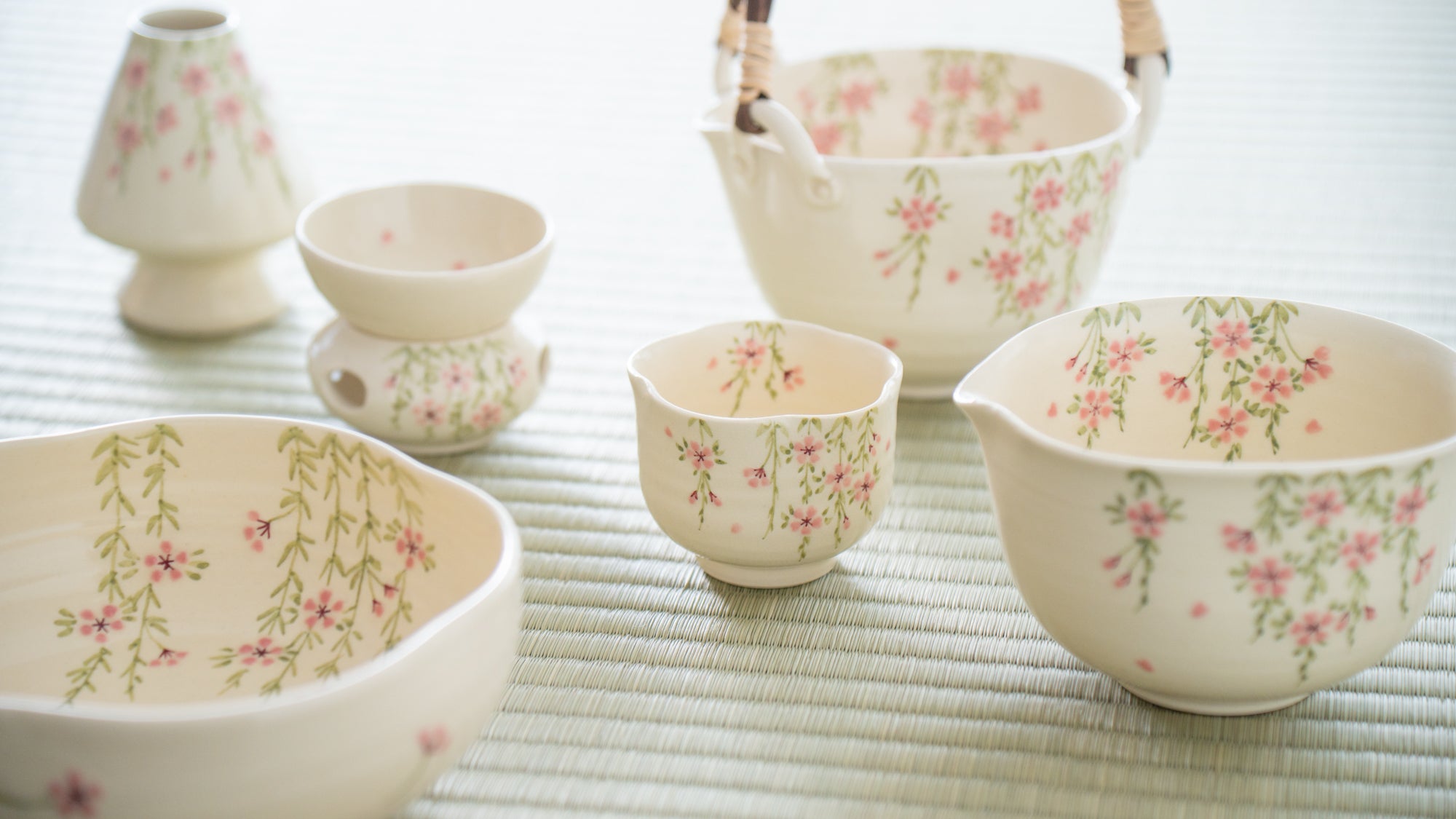
Camelia
La serie Camellia rinde homenaje a las refinadas técnicas de pintura bajo cubierta, que simbolizan el compromiso del horno con la estética y la artesanía tradicionales. Magistralmente plasmadas por artistas expertos en pintura de estilo japonés, cada pieza de la serie exhibe el diseño Camellia, desarrollado por el artesano Taniguchi, con una armoniosa combinación de verdes oscuros y claros, y el singular acabado en relieve y brillante de pétalos rojos y blancos. La serie Camellia encapsula un equilibrio de simplicidad y elegancia, reflejo del preciado legado cerámico de Kioto.
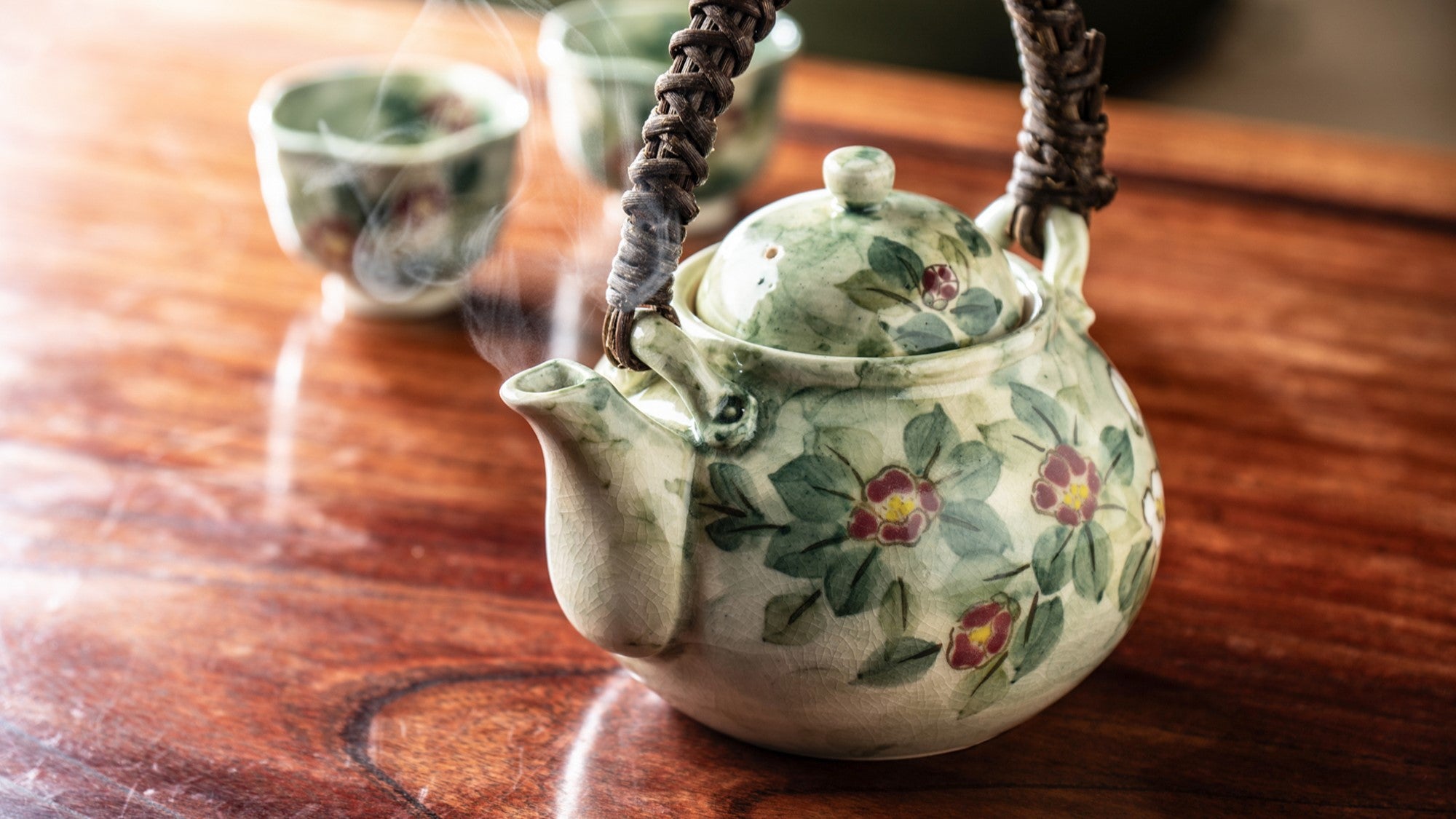
Templo Kozan-ji "Choju Giga
Estas coloridas piezas presentan un famoso pergamino ilustrado llamado "Choju Jinbutsu Giga", un pergamino con caricaturas de animales antropomórficos y su carácter juguetón, que data de mediados del siglo XII y mediados del XIII. Estos diseños están declarados tesoro nacional japonés en el templo Kozan-ji de Kioto. Disfrute de estas obras humorísticas y divertidas, representadas con gran detalle mediante las técnicas pictóricas de Tosen Kiln.
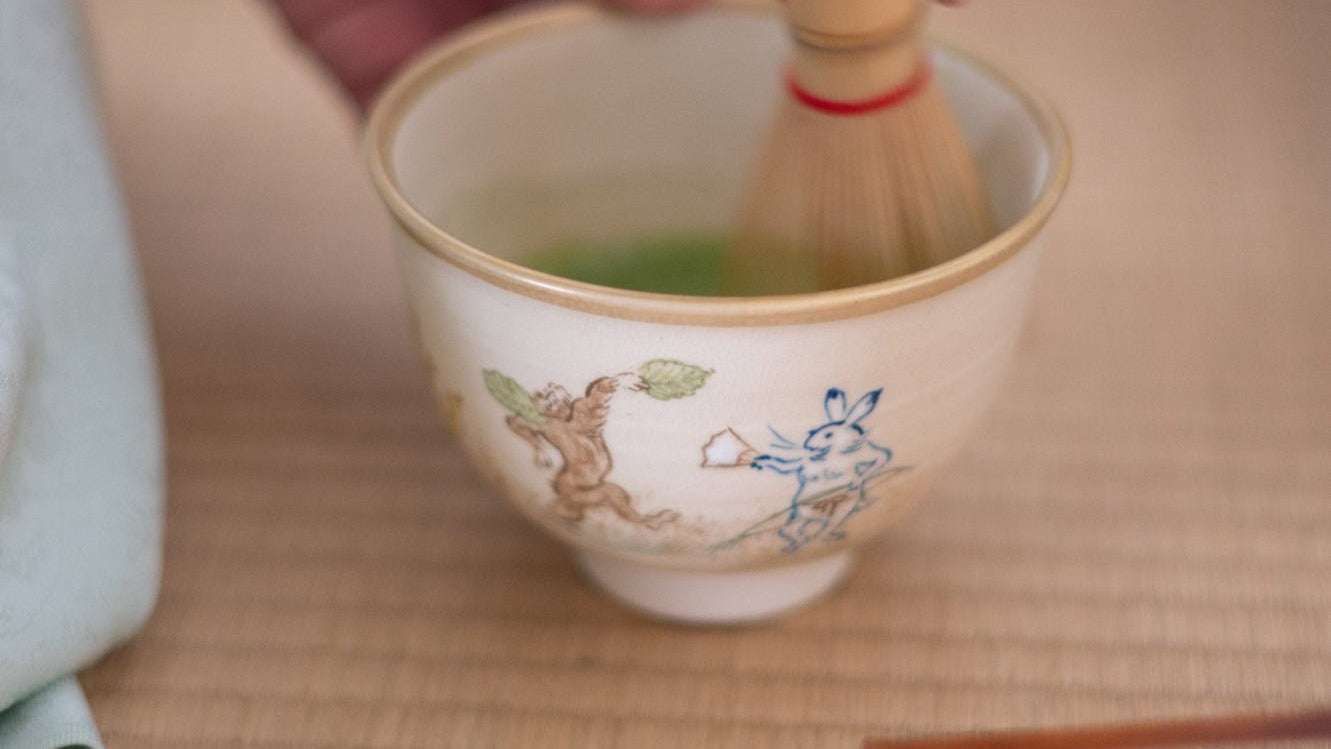
Dios del viento y Dios del trueno
Las imponentes representaciones del "Dios del Viento y el Dios del Trueno", obra maestra de Tawaraya Sotatsu, pintor del período Edo (c. 1603-1867), se pueden disfrutar en la vajilla. Desde la antigüedad, en Japón se ha creído que el viento sopla y el trueno retumban debido a la presencia de estos dos dioses en el firmamento, entre el cielo y la tierra. Se cree que los dioses del viento y el trueno son beneficiosos para la victoria y la prosperidad empresarial. Disfrute de estas obras pintadas a mano, representativas de la técnica de Tosen Kiln.
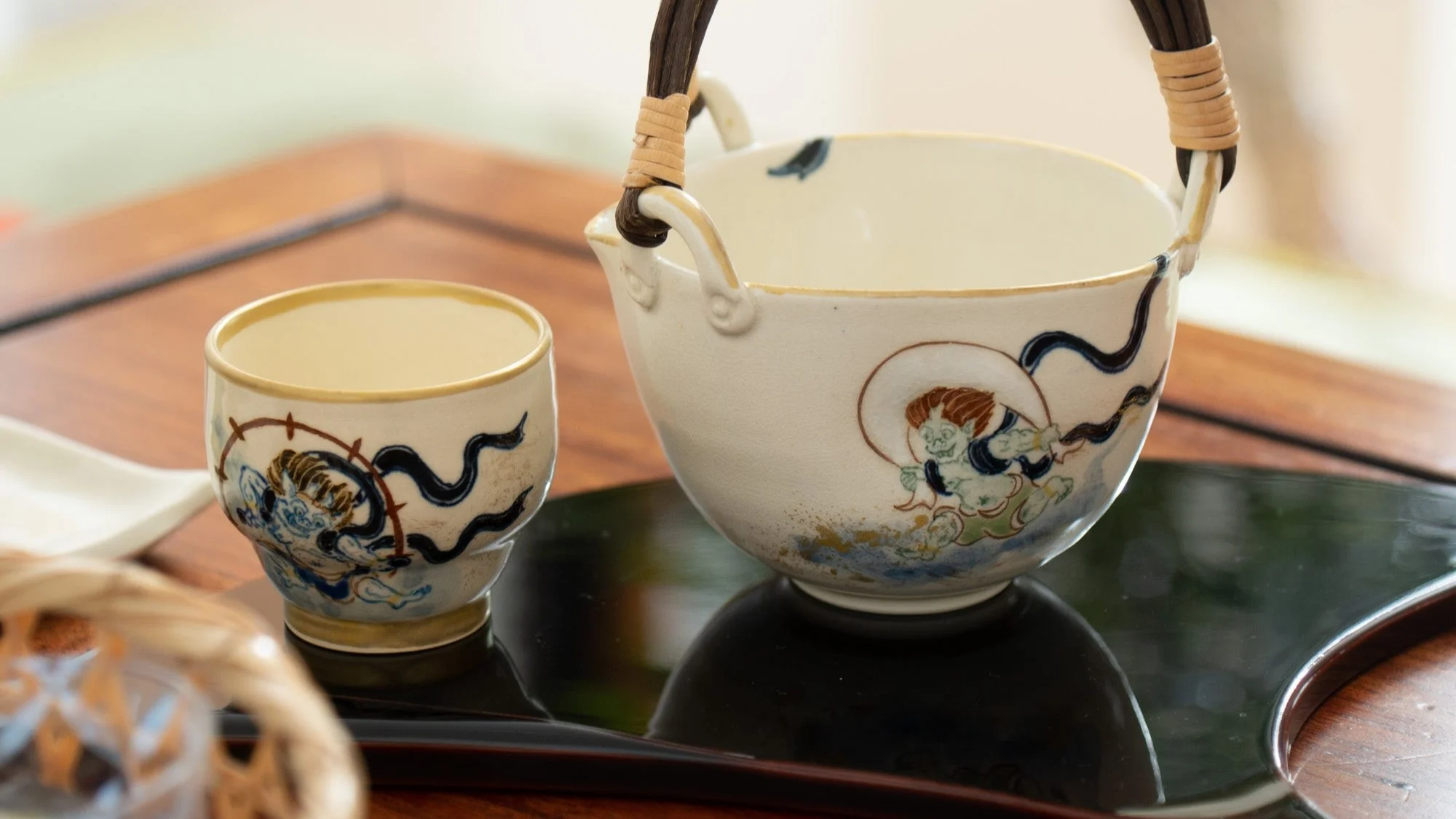
La serie Tokusa presenta una nueva interpretación del tradicional diseño de cola de caballo azul mediante la adaptación artística de Taniguchi. Infundiendo calidez y profundidad, Taniguchi ha reinventado con elegancia este patrón en dos colores, realzando las líneas dibujadas a mano que contrastan marcadamente con la impresión en masa. Estas líneas, meticulosamente dibujadas a lápiz, complementan con gracia el característico bizcocho blanco cremoso del horno. Para realzar su singularidad, las hendiduras intencionales marcan artísticamente la superficie del bizcocho, rompiendo con las formas redondas convencionales.
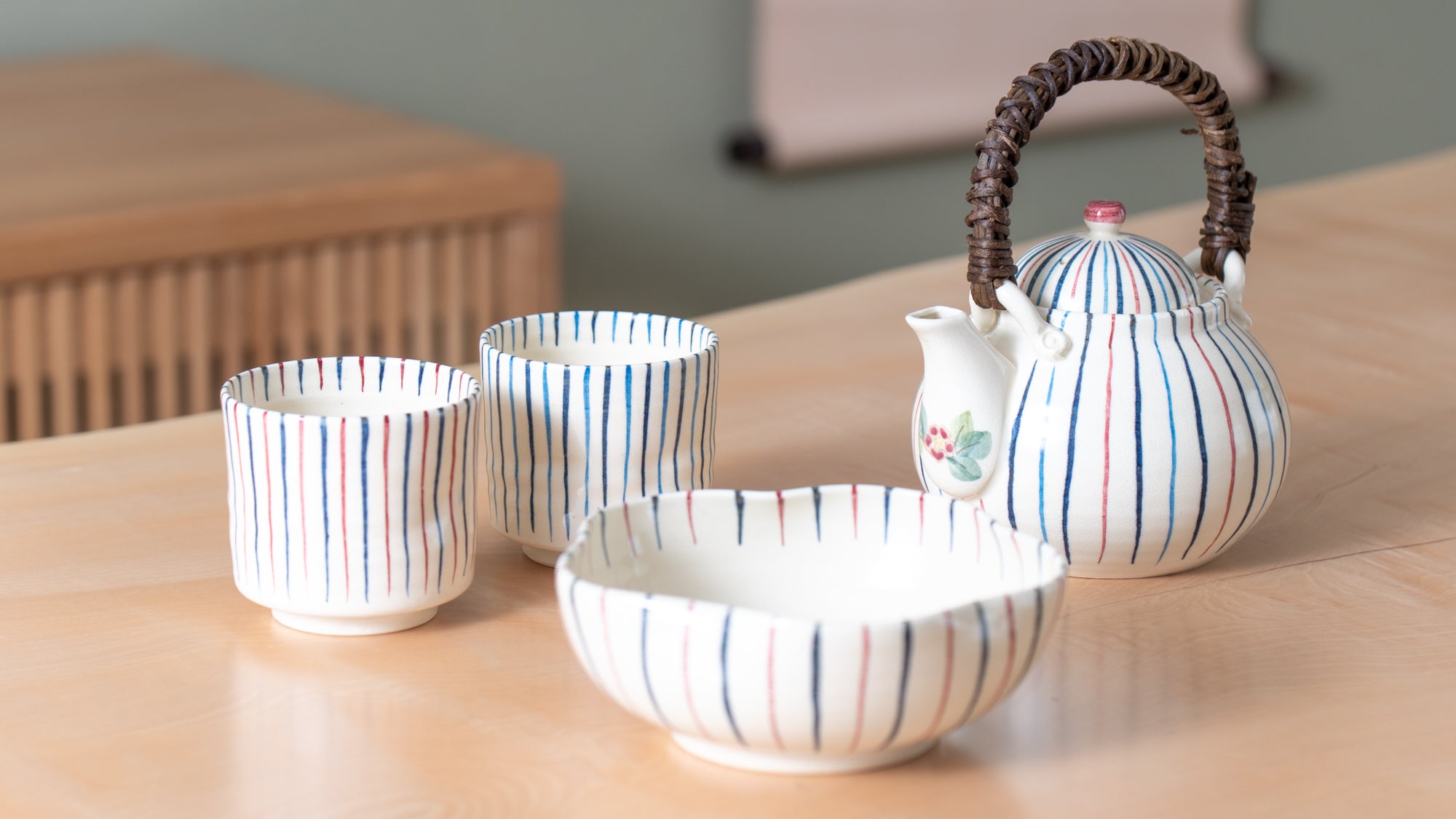
Origen y otros creadores
Artículos relacionados
Filtros


